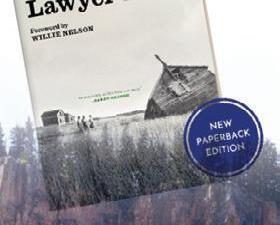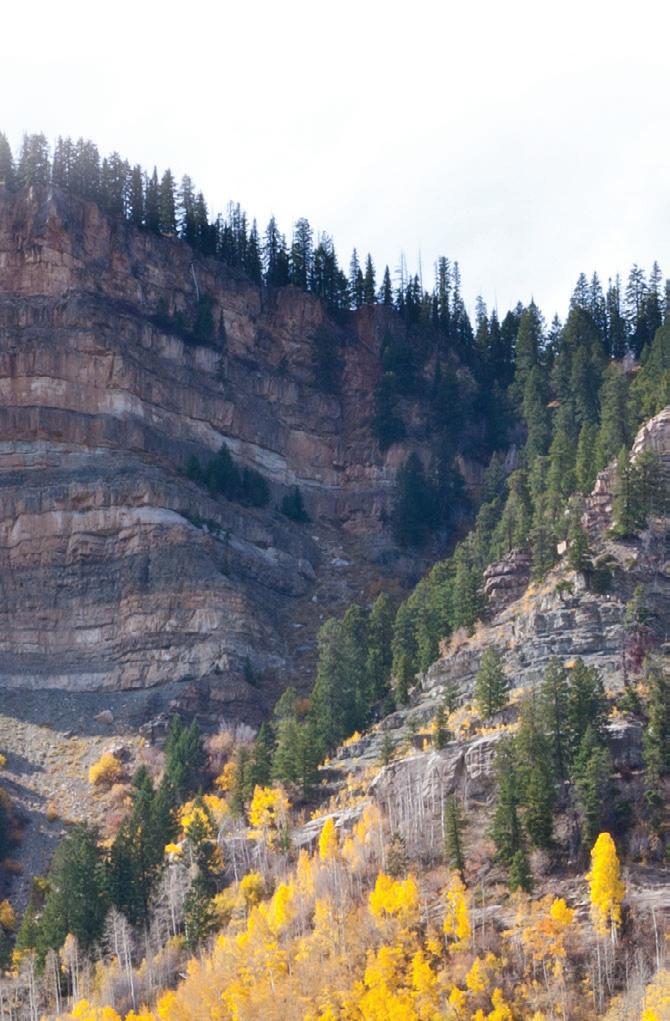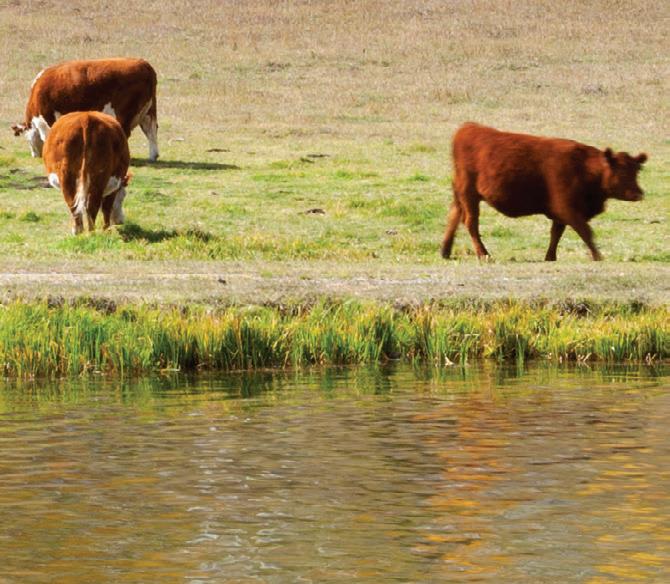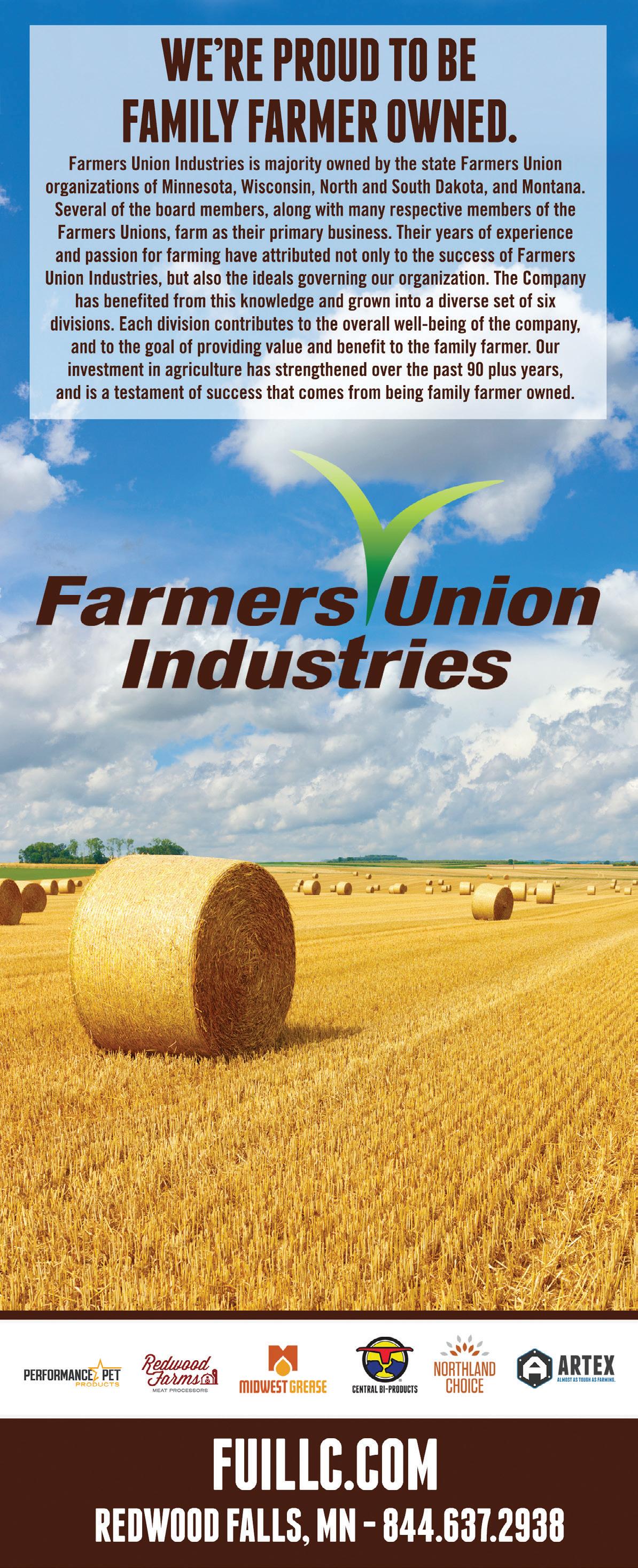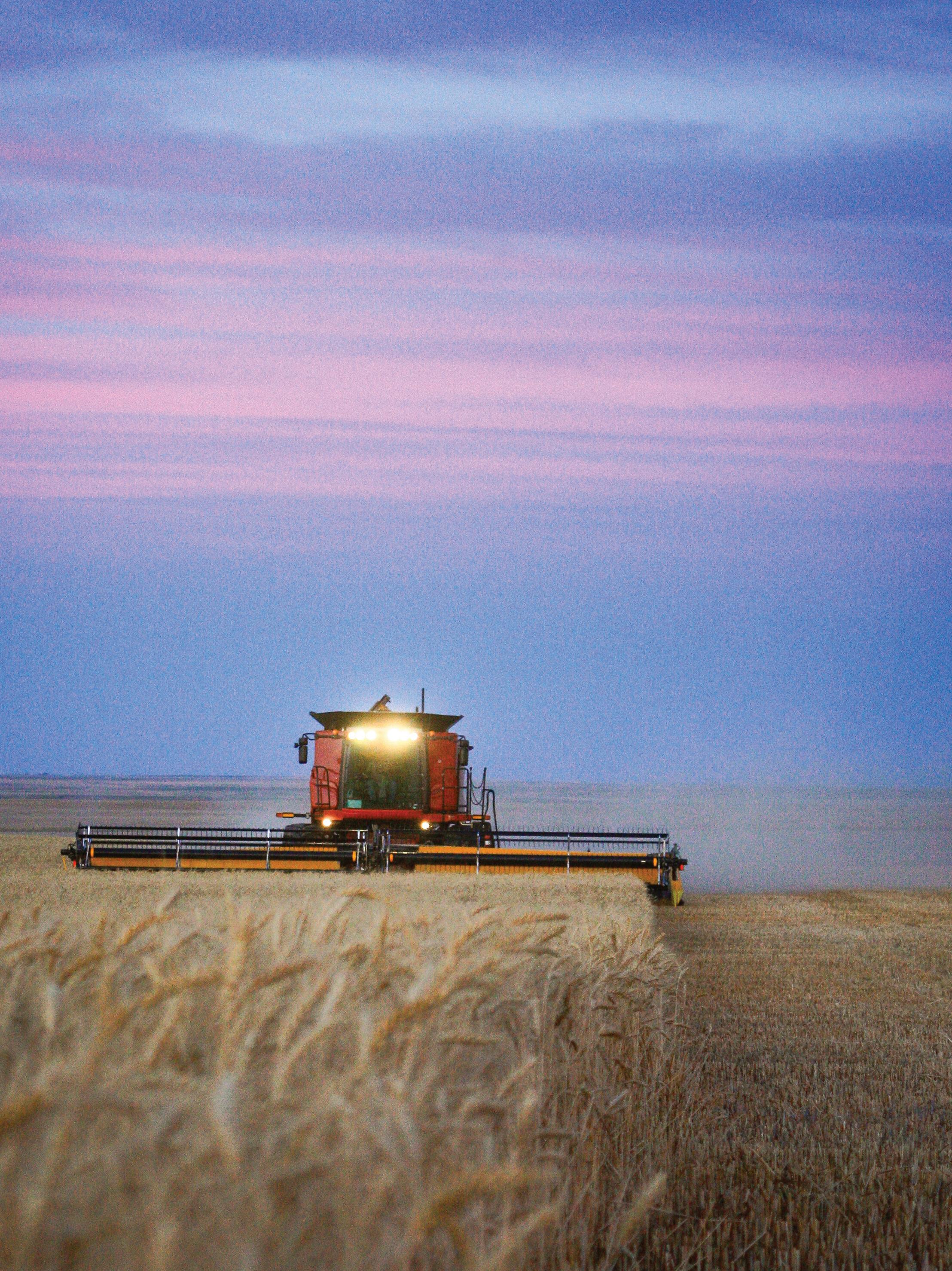



















































































































































































































As the busy harvest season slows down, we hope you’ll find time to catch up with friends, family, and with us, by reading the Montana Farmers Union Magazine Volume II, Fall 2023 edition.
In it, you can learn about how members are using industry innovation, feeding their communities, and using cooperation to solve challenges. Montana Farmers Union is a resource to family farmers and ranchers and your communities. In these pages, you can read more about MFU’s supporting work regarding meat processing capacity, cooperatives, and sponsoring youth programs, as well as updates from regional MFU Membership Ambassadors.
We look forward to catching up with you in person during the Annual Convention October 27-28 at the Heritage Inn in Great Falls. Learn how to register and how to enter for a chance to win keynote speaker, Sarah Vogel’s book “The Farmer’s Lawyer” on Page 32.




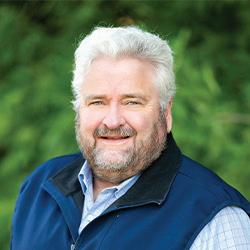
National Farmers Union members have long traveled to Washington, D.C., to meet with our nation’s leaders to discuss issues important to the family farm, ultimately leading to substantial improvements for farmers and ranchers over that 100-year history.
One of NFU’s earliest successes was the Clayton Antitrust Act of 1914, which expanded on the Sherman Antitrust Act and seeks to prevent anticompetitive practices in their incipiency. A few years later, NFU was instrumental in getting the Packers and Stockyards Act passed and was involved in negotiating the packers consent decree. More recently, President Biden’s 72 executive orders addressing the anticompetitive practices of the corporate monopolies are a result of Farmers Union members meeting with him for decades discussing how anticompetitive practices are harming farmers and families. Biden’s orders have resulted in actions by the DOJ, FTC and USDA to create more competitive markets.
NFU isn’t the only organization lobbying, though. The corporate monopolies have a strong lobbying coalition that joined forces in the 1950s and crafted a “cheap food policy” more about corporate control of the food dollar than providing quality food for everyone. They promoted maximum yields and corporate consolidation under the guise of efficiency and systematically unraveled a farm policy based on food security by doing away with food reserves and regional processing. The result is a just-in-time system that has concentrated our food production and distribution system in the hands of a few and has subjected us to the whims of world conflicts and weather extremes.
Before big corporations tampered with the food system, we had a reserve program that stored our production in years of high production and low prices to be released when needed or prices rose above set triggers, providing a stable supply for consumers and a consistent price for producers. It forced corporations to pay producers a fair price or commodities stayed in storage. Now we have a feast-and-famine system that only benefits the corporations at the expense of producers and consumers.
In a dream world, I would throw out the current farm bill and start from scratch to create programs that truly benefit family farmers and ranchers.
Much of our farm bill is based on a maximum yield philosophy that requires maximum input and trade to get rid of the over production that benefits the corporations at the expense of the producer and the taxpayer. Subsidies and crop insurance are based on a producer’s average yield and production acres, which incentivizes producers to push for maximum yields and more acres. If we were to base our farm programs on sustainable yields and American needs, it would cost the taxpayer less money, provide a sustainable production system for the producer and a healthier, more resilient food system for the consumer.
We would cap crop insurance, insure cover crops, and increase support for specialty crops like fruits and vegetables. We would invest in and redirect research at our land grant universities to develop varieties that can produce sustainable yields with little to no costly input to benefit producers instead of corporate seed, fertilizer, and chemical suppliers.
A farm bill focused on a sustainable production system would invest in farming practices that promote healthy, resilient soils that encourage better water infiltration during high rainfall events and retain more water during droughts. It would encourage more crop diversity and utilizing livestock grazing to create healthy soils while producing our complete needs for food, fuel and fiber.
Having a more resilient food system would include having our food production and processing spread throughout rural America and urban centers versus concentrated in just a few regions. A sustainable farm bill would encourage cooperative food hubs so family farmers can combine their resources for storage, processing, packaging, and marketing their products directly to their neighbors. Similarly, other farmers would join forces to form cooperatives to produce our fuel and fiber. Investing in a more resilient agriculture production system that raises and processes our food locally will create healthier, more vibrant communities. We wouldn’t need to import oil from dictators or have our markets destroyed because of political conflicts or needless trade wars.
But, alas, starting a farm bill from scratch can’t happen.
Nonetheless, continued conversations like the ones Farmers Union members had with federal leaders and policy makers during
the NFU Fly-In – and the ones Farmers Union members have with their local, state and federal leaders throughout the year – must continue in order to shape a farm bill over time that will benefit family farmers and ranchers more than corporations.

MONTANA FARMERS UNION
PO BOX 2447
300 RIVER DRIVE NORTH, STE 1
GREAT FALLS MT 59403
PHONE: (406) 452-6406
1-800-234-4071
FAX: (406) 727-8216
mfu@montanafarmersunion.com www.montanafarmersunion.com
Board of Directors:
Walter Schweitzer, President
Rollie Schlepp, Vice President, Conrad
Jan Tusick, Secretary/Treasurer, District 6, Ronan
Erik Somerfeld, District 2, Power
Jeff Bangs, At-Large Director, District 1 & 2, Inverness
Tom Clark, District 1, Fort Benton
Brett Dailey, District 4, Jordan
William Downs, District 5, Molt
Ben Peterson, At-Large Director, Judith Gap
Sig Rudie, At-Large Director, District 3 & 4, Fairview
Sarah Degn, District 3, Sidney
MFU Staff:
Walter Schweitzer, President
Matt Rains, Chief of Staff
Jan Johnson, Office Mgr., Assistant Secretary/ Treasurer
Kari Kester, Administrative Assistant
Rachel Prevost, Government Affairs Director/ Member Svcs.
Matthew Hauk, Education Director
Heather Wendell, Communications Director
Peyton Cole, Event Coordinator
Jasmine Krotkov, Lobbyist
Alice Miller, Press Relations Specialist
Samantha Ferrat, Membership Ambassador
Eleanor Dutton, Membership Ambassador
Carissa McNamara, Membership Ambassador
Mary Jenni, Membership Ambassador
Skylar Williams, Membership Ambassador
Jeri Copenhaver, Membership Ambassador
Copyright © Montana Farmers Union, 2023 MFU Magazine is the official publication of the Farmers Educational and Cooperative Union of America, Montana Division.
MFU reserves the right to reject any advertisements. Membership: $50.00 per year
Montana Farmers Union Magazine is published quarterly.
Copy Editor: Alice Miller, Jan Johnson & Heather Wendell
Montana Farmers Union is the oldest & largest family farm organization in the state who represents family farmers & ranchers.

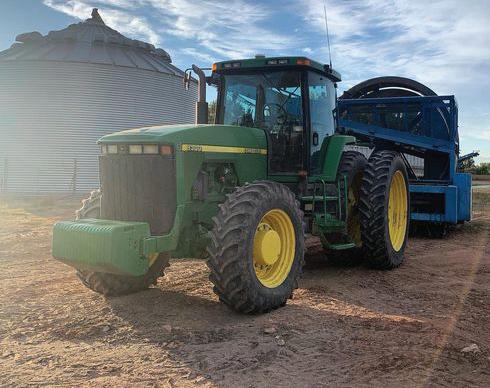
MFU is working for family farms, ranches, rural communities, & supports its members through: strong education programs for both youth and adults, advocating member-driven policies & legislation at the state and federal level, & cooperation through producer-owned co-ops.
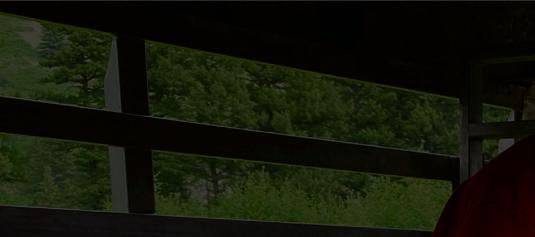
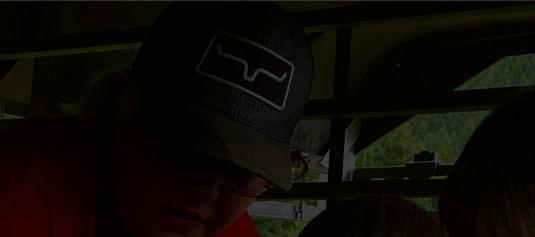

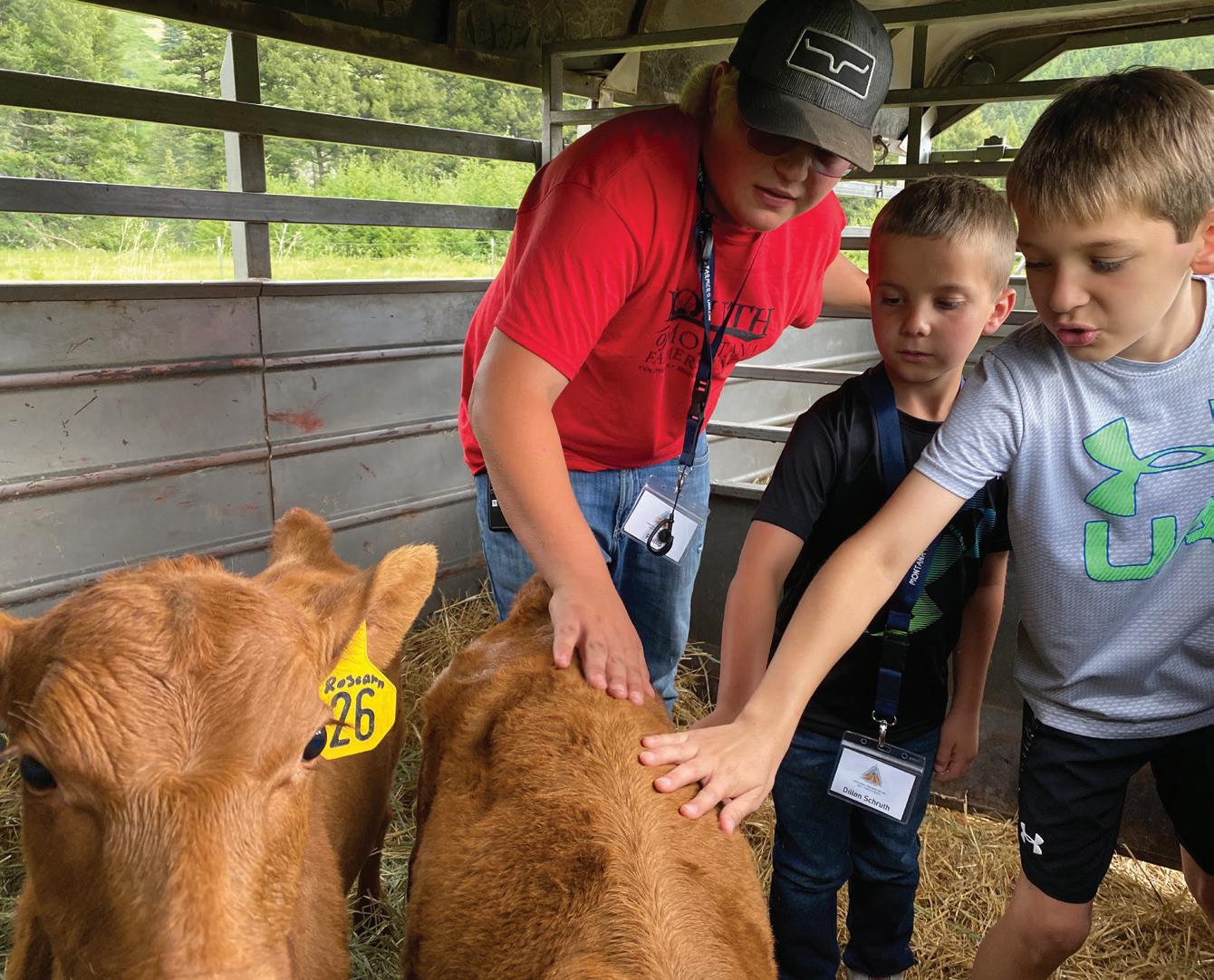
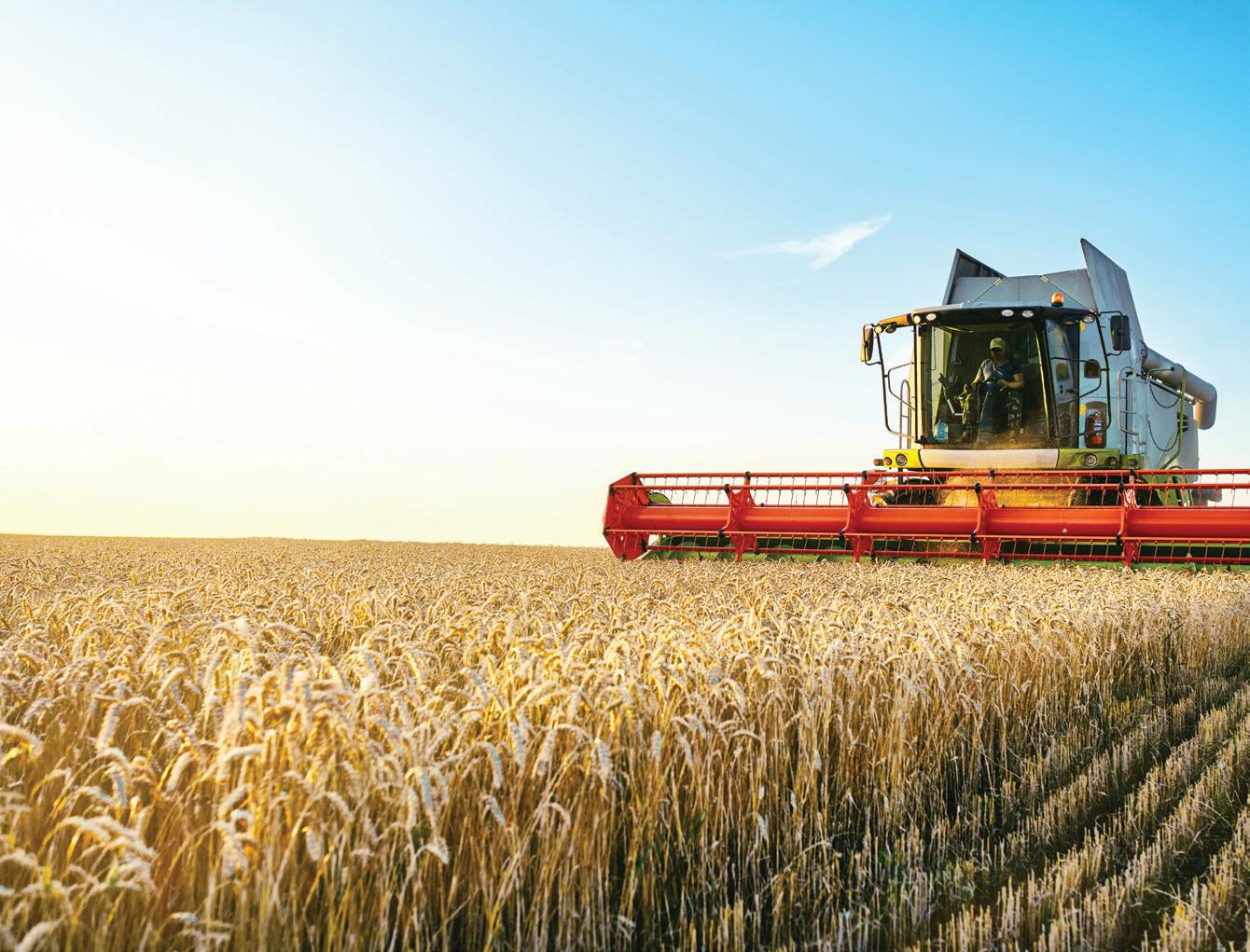


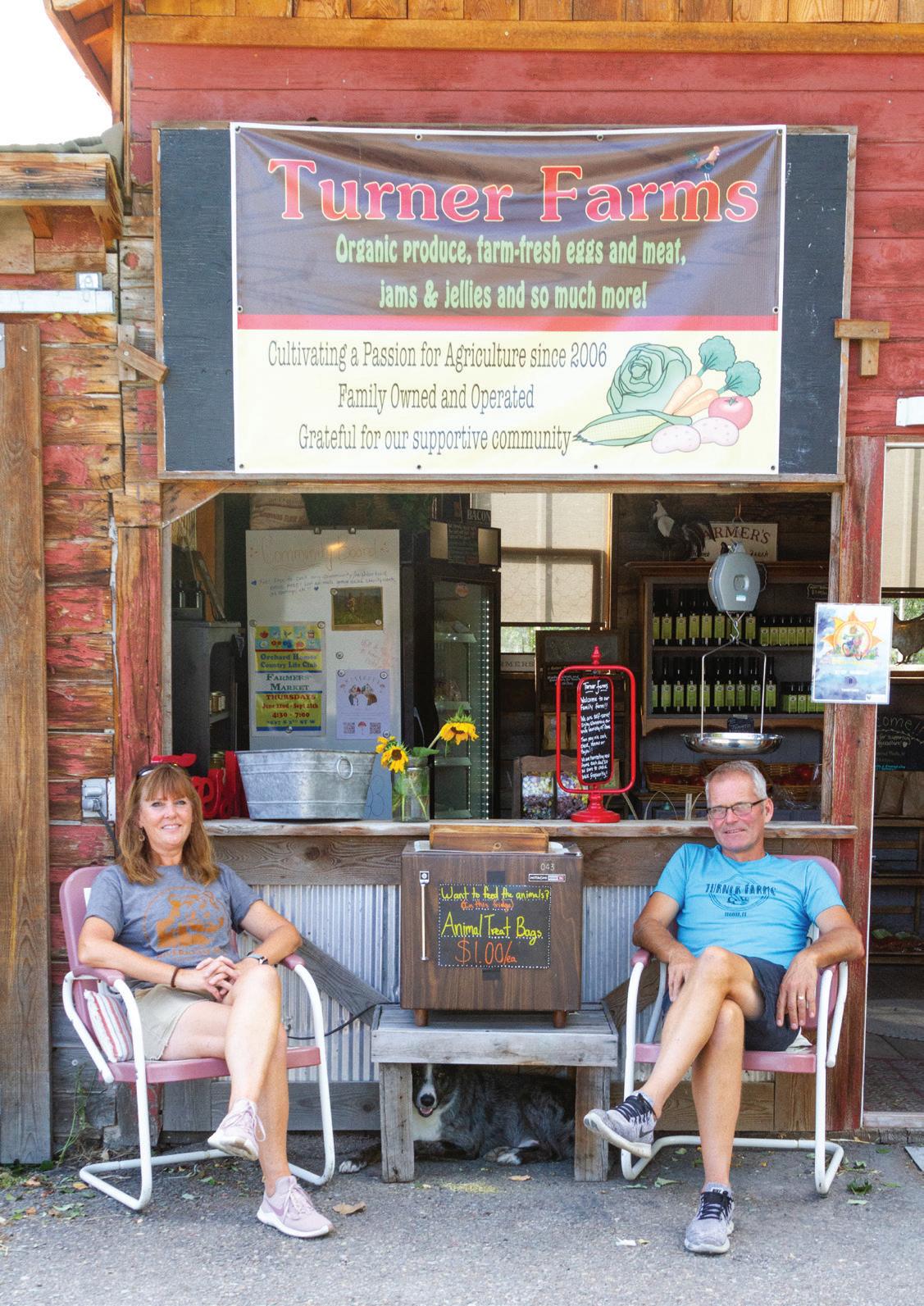




A community potluck and roadside vegetable stand began a story that has become a community all its own.
Shortly after moving to the neighborhood, Jon and Erin Turner attended a pot luck at the Orchard Homes Country Life Club and instantly felt welcomed to the community.
“It made me realize this is what it’s all about,” Jon said.
Since then, the Turners have invested time, energy and love into their community, volunteering with 4-H, FFA, and their kids’ schools; beginning an internship program for area kids; running summer camps; and starting a fall pumpkin festival – all meant to continually invite the community into their farm.
Turner Farms started with a garden on their subdivision lot. The bed produced more than their family, friends and neighbors could eat so their young sons sold the extra veggies on the side of the road that summer to raise money to buy bunkbeds, ultimately starting what became a generational pursuit combining agriculture and community.
“We had so much fun as a family that summer,” Erin remembered. “There was so much value to that, we thought let’s see where we can go with this, and it snowballed from there.”
Today, the farm boasts chickens, ducks, pigs, goats and cows. The Turner’s oldest son, Ethan, is back selling produce, but this time as farm manager and a partner in the newly formed Turner Brothers
Jon and Erin Turner sit outside Turner Farms self-serve store in Missoula’s Orchard Homes neighborhood.Cattle Company with his brothers Logan and Gus.
“Our ultimate vision was to have something to pass down to our boys,” Erin said, referring to their family continuing what she and Jon began.
Already, the operation is beginning to look different, thanks to the implementation of cover crops and the cattle partnership.
“They’re putting their own flair on it,” Erin said with evident pride.
While Erin and Jon consider themselves farmers now, they didn’t when Turner Farms started. Jon’s background is business; Erin’s social work.
“We didn’t really feel like we were farmers, even though we thought that we were,” Erin said.
They’ve gotten over the imposter syndrome, though.
“It takes all of us to sit at the table to feed the world,” Erin added.
The farm itself has morphed over the years, starting with the roadside produce sales, to an egg delivery CSA, to farmers markets to selling surplus to a nearby store, to their own farm store.
“The big thing is we never do an idea until it feels right,” Erin said.
The premise of intentional changes has held true with every large change the farm has experienced, including growing in acreage.
With land prices at residential and development levels, purchasing more land is a formidable prospect.
Yet, over the years, opportunities have arisen, and the farm has grown from 1.5 acres to 18 acres, transforming 13 acres from residential zoned plots into land zoned as ag.


Most recently, the Turners purchased eight acres within city limits that already had a platted subdivision approved for it. Now it’s zoned as ag land, thanks to the Turners’ efforts. They were able to do so, in no small part, because of their longstanding relationships with community members who understood their dedication to farming.
“Doing what we did was the exclamation mark on everything we do,” Erin said, adding they believe in providing food to and creating community spaces for their neighbors.
While the community has largely embraced Turner Farms since the beginning, demand for fresh, locally grown food skyrocketed during COVID and remains high.
“It took all five of us, all hands on deck, to keep the stand stocked during COVID,” Erin said.
“There has been a real awakening,” she added.
To meet demand, Turner Farms boasts a market, along with
Continued on next page
 Erin Turner shows off strawberries in a greenhouse at Turner Farms.
Erin Turner shows off strawberries in a greenhouse at Turner Farms.





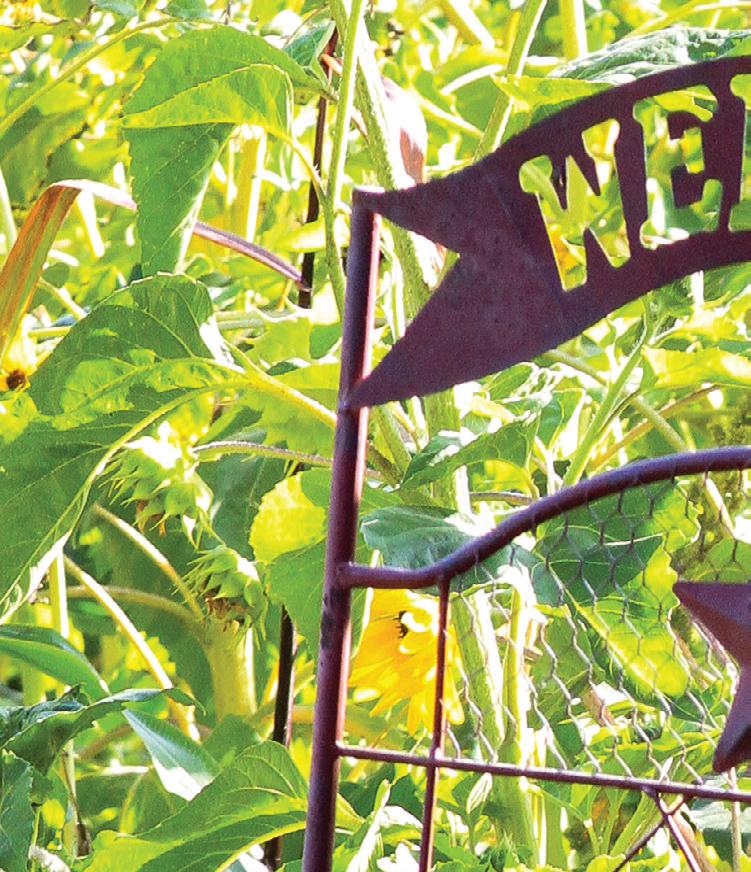
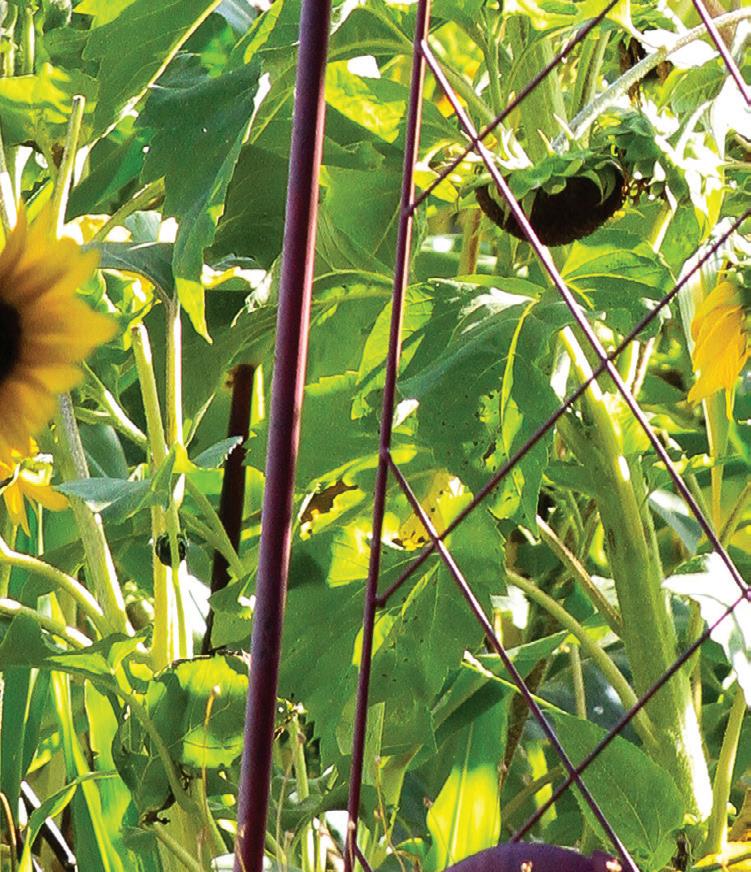
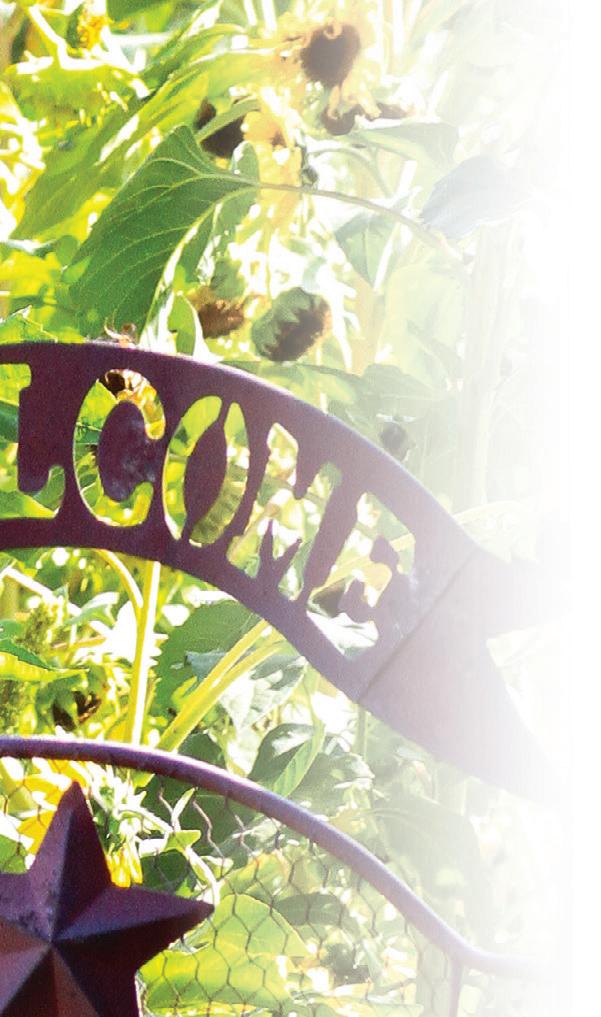



Continued from previous page

“When you belong to a community, and you invest in a community, they pay you back”
a CSA program, hosts several special events, and offers an event space to rent.
Twelve thousand onions get planted each year. Additionally, potatoes, asparagus, zucchini, broccoli, cauliflower, herbs, greens, strawberries, root vegetables, tomatoes, corn and more are grown, with Jon joking that it’s easier to list what they don’t grow than what they do.
Pumpkins comprise a large portion of Turner Farms produce, with several acres of pumpkin patches and a festival each year. While the weekends are now a longstanding event, the inaugural festival was an accident.
Jon’s back went out right when pumpkins needed to be harvested, and the community stepped in to help when their son’s teacher offered to bring the class to help harvest. The next spring, the fourth-graders helped plant pumpkins and then helped harvest them in the fall as fifthgraders.
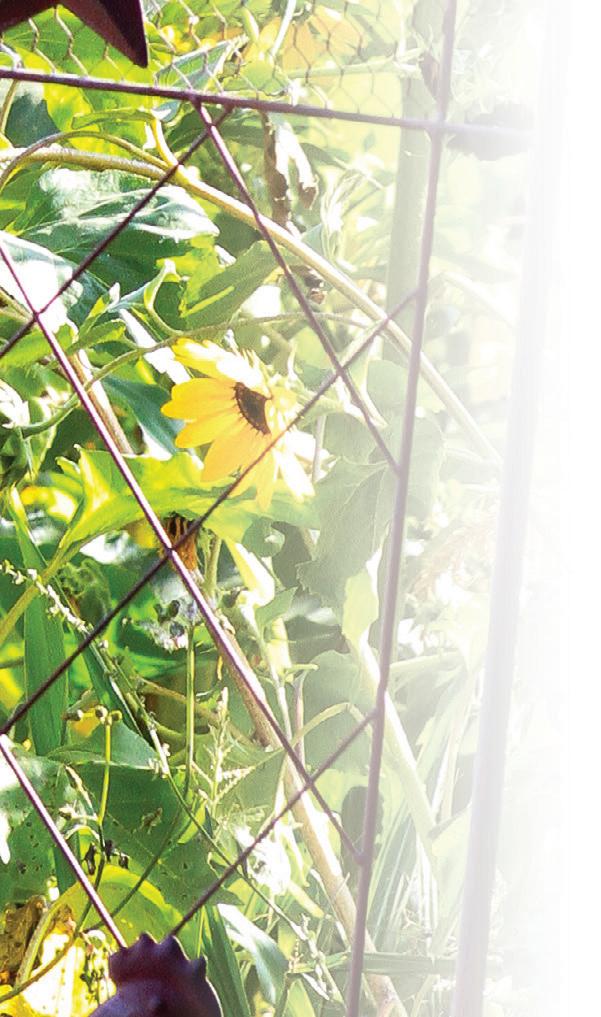
“When you belong to a community, and you invest in a community, they pay you back,” Erin said.
One year, Erin put the details on Facebook, not realizing she had made it a public event.
Now, Pumpkintober is a community staple that runs several weekends through October, with food trucks, live entertainment, produce, and, of course, pumpkins. The farm also is open for visitors to explore and interact with livestock.
“It’s become a thing,” Erin said, shrugging and laughing.
She added families come from all over the state to enjoy autumn weekends at the farm, and they often share stories of how they look forward to the experience each year.
Pumpkintober provides something intangible to people –the very essence of what it’s all about.
“We all want to be farmers,” Jon said, adding that coming to the farm brings people from all walks and opinions together in a shared community over a fundamental truth.

“We all have to eat,” he said. “It’s the simplicity of it.”
To learn more about Turner Farms and their fall schedule, go to: www.turnerfarms406.com.
Anaconda
Belgrade
Belt
Billings
Bozeman
Bridger
Broadus
Butte
Chester
Choteau Circle
Coeur d" Alene
Conrad
Cut Bank
Dillon
Fairfield
Forsyth
Froid
Glasgow
Great Falls

Hamilton
Hardin
Havre
Helena
Stefanie Thompson: 563-5991
Craig Parker: 388-6774
Matt Triplett:952-0451
Judd Long: 252-9391
KJ Fauth: 969-2282
Art Hoffart: 586-6230
Dean Derby: 556-0893
Trent Leintz: 551-2163
Wesley Schwend: 662-3930
Jesse Fleming: 436-2115
Mathew Luedtke: 270-5304
Megan Hedges: 759-5150
Scott Allaire: 466-5146
Kaylen Lehner: 485-3303
Flathead Insurance 752-8000
Dirk Elings: 271-7047
Ashley Vanek: 873-2249
Judy Siring: 683-2365
Sara Nye: 683-1250
Matt Luedtke: 467-3444
Donna Manuel-590 0866
Watts Agency: 346-1196
Austin O’Dea :766-2205
Brady Burgess : 228 8282
Eric Hinebauch: 453-8413
Jeff Thill: 452-7283
Aeric Reilly: 570-5853
Kyle Tschetter: 836-7261
Bryan Jones: 363-6583
Melissa Wacker: 665-1867
Meagan Kinsella:265-2693
Alex Thornton:879-2028
Todd Crum: 443-4630

East Helena
Hingham
Hobson
Kalispell
Laurel Lewistown
Libby
Livingston
Malta
Miles City
Missoula
Plains
Polson
Ronan
Ryegate
Seeley Lake
Scobey
Shelby
Sidney Sunburst
Terry
Thompson Falls
Whitefish
Wolf Point
Eric Hinebauch: 437-2053
Alissa McClendon: 397-3146
Ray Lipp: 397-3146
Shawn “Tater” Erickson: 366-1287
Andy Manley: 756-7720
Flathead Insurance: 752-8000
Randy Bloom: 257-1252
Lorna Olson: 628-6649
Raleigh Heitzman: 538-8736
Bruce Marshall: 538-2331
Colleen Wood: 293-6228
Daryl Hansen: 222-7151
Shane Anderson: 654-1589
Tayler Kennedy: 874-2560
Watts Agency: 874-1804
Andre Marcure: 543-7184
Ben Barker: 721-2540
Josh Rollins: 830-3073
Pam Jacobsen: 721-0599
Tom Monaghan: 926-2552
Lisa French: 826-4633
Andrew Luedtke: 837-1395
Andrew Luedtke: 676-0173
Audrey Stoican: 568-2336
Tom Monaghan: 677-7400
Matt Stentoft: 487-2629
KW Insurance: 424-8480
Russ Seubert: 434-5211
Cathy Hintz: 488-8326
KW Insurance: 937-6950
Watts Agency: 635-5782
Lisa French 827-3221
Rial Gunlikson: 862-4700
Jesse Fleming: 653-2200


Montana Farmers Union is further investing in Montana’s youth through a new program aimed to give FFA chapters a leg up.
The FFA New Chapter Sponsorship from MFU gives new FFA chapters $2,500 to meet start-up costs as they build their programs. The funds are awarded to chapters that have received official status from Jan. 1, 2022, indefinitely into the future.
MFU is a longtime supporter of FFA as a lead sponsor during convention, providing both financial support and leadership opportunities for members. Montana Farmers Union is constantly looking for ways to grow the relationship, including filling financial needs for special projects like a refrigerated van to the Missoula FFA and the new chapter sponsorship program.
“Educating and connecting with the future generation has always been important to Montana Farmers Union, and the new sponsorship funding is a great way to put that ideal to some practical use,” said Jeff Bangs, an MFU board member.
“Honestly, my jaw just hit the floor with the generosity of that offer,” said Morgan Kuntz, director of development for the Montana FFA Foundation.
FFA has instilled the importance of community service and career skills – as well as hope and pride in their communities and agriculture – in Montana youths since its formation in 1930. Today, Montana FFA boasts 6,600 members across 109 chapters.
“It’s exciting how far a little bit of hope and pride can take communities as a whole,” Kuntz said.
Already several new chapters are taking advantage of the sponsorship opportunity.
“We just want to say how thankful we are to receive the support from the Montana Farmers Union. It is very difficult to get an agricultural education and FFA program started due to lack of funds. This will really help us get started
and produce a strong FFA Chapter,” said Leroy Nelson, who leads Scobey’s FFA program using his All Ag Online curriculum.
An FFA chapter previously existed for many years in Scobey, but reformed recently due to community interest. The MFU funds will help with costs for travel and participation in leadership programs, Nelson said.
“This will help many of our members become educated in agriculture, and hopefully they will return to our community to farm and ranch or work in other areas of agriculture. A good, agriculturally based workforce is needed in this area,” Nelson added.
In Havre, people have been surprised there wasn’t already a chapter, said Saralyn Standley, FFA advisor for Havre Public Schools.
“Havre is a very strong agricultural community, so it really has been a long time coming for an agricultural education program to start,” Standley said.
“We are very fortunate to have some wonderful administrators who led the charge on establishing the program,” she said, adding the chapter is thankful for MFU’s support as well.
The Havre chapter plans to use the sponsorship funds to help pay for a greenhouse for hands-on learning, which they say will attract more students to the program.
In addition to agricultural education, FFA provides a social outlet for kids and opportunities to develop life skills.
“It gives students who might not have an interest in sports or other school activities a place to call home and a real sense of community within their school. Another large part for both members and the community is learning a lot of important life skills. FFA helps students grow into mature and capable individuals who are more prepared to be productive members of their community,” Standley said.
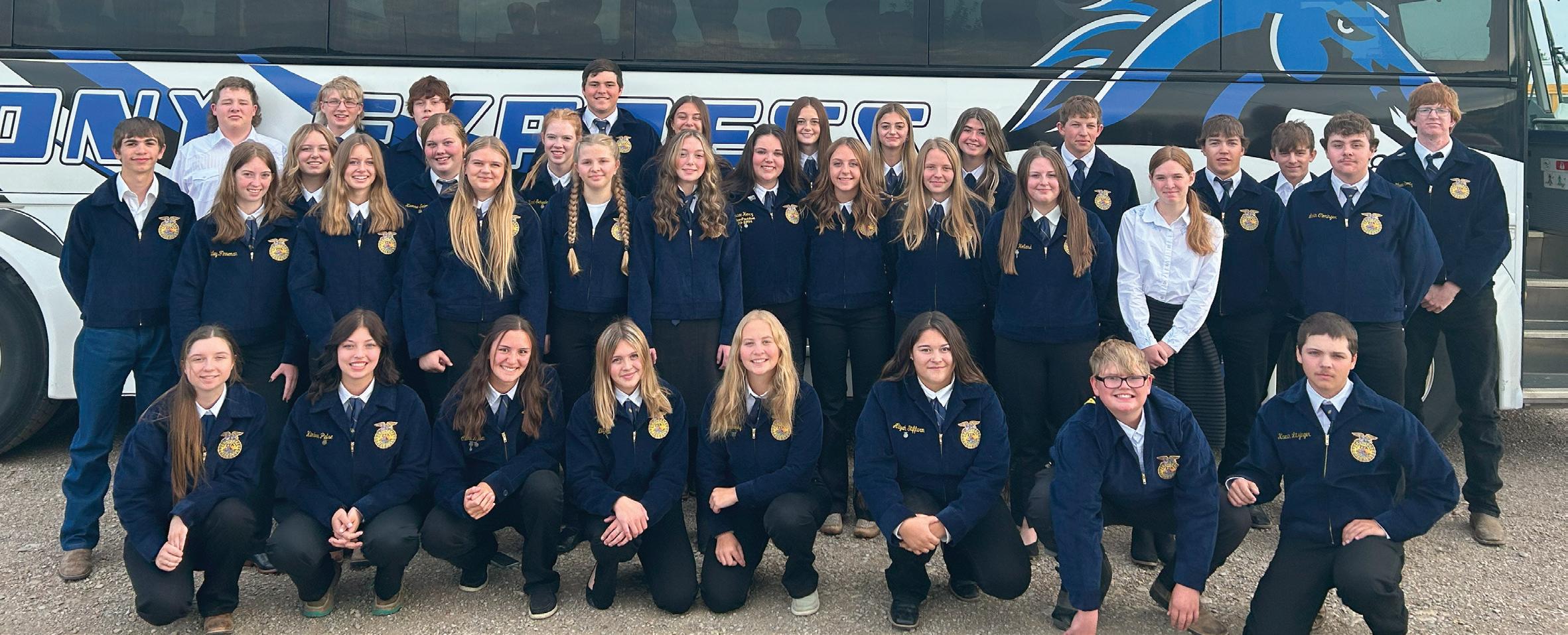


MFU board members decided to start the new chapter sponsorship program earlier this year after receiving several requests from new FFA chapters for MFU Foundation Grant funding.


“Montana Farmers Union recognizes the need to inspire youth in agriculture, and FFA is an amazing program to help teach them about the farm and ranch lifestyle. We strongly support the organization, and the board determined this would be a great way to build and grow FFA in Montana,” said Matt Rains, who serves as MFU’s chief of staff.



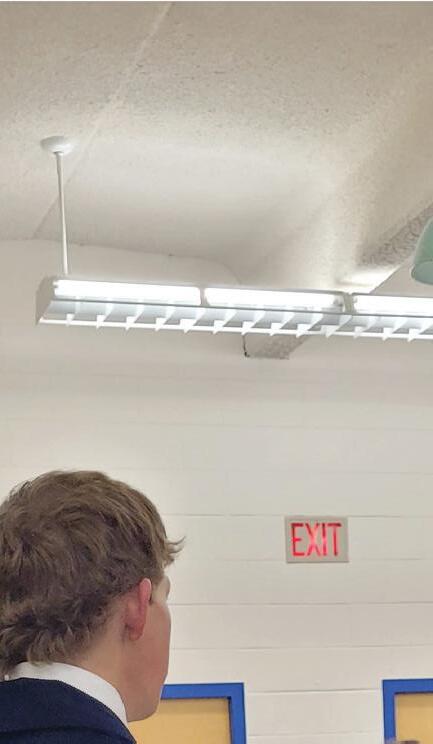
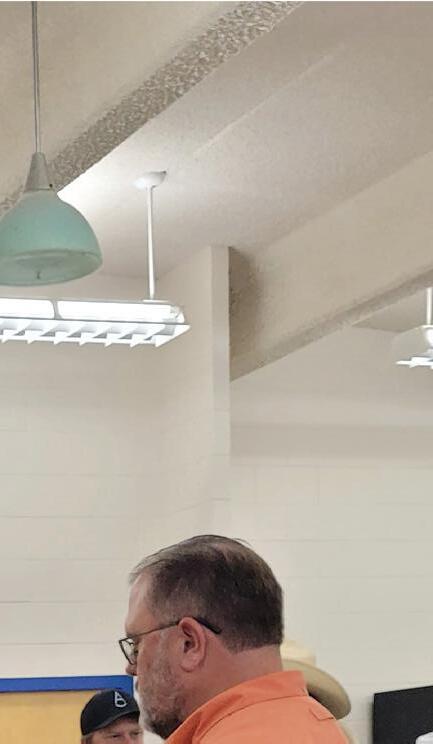

“Forward looking, if schools are interested in starting an FFA program, they can know that they have these funds to lean on the first couple months as they get started up,” Rains added.

Ultimately, the funds are a way to strengthen the connection between youth and agriculture well into the future.
Kuntz encouraged community members who are interested in starting an FFA chapter to take advantage of the avenues to make that happen.




“It creates a connection between our organization and the next generation of ag leaders in our school systems,” Bangs said. “It provides opportunities for both FFA and Farmers Union to reach those leaders where we otherwise might not have had the opportunity in places and schools that perhaps don’t have a strong connection to agriculture.”
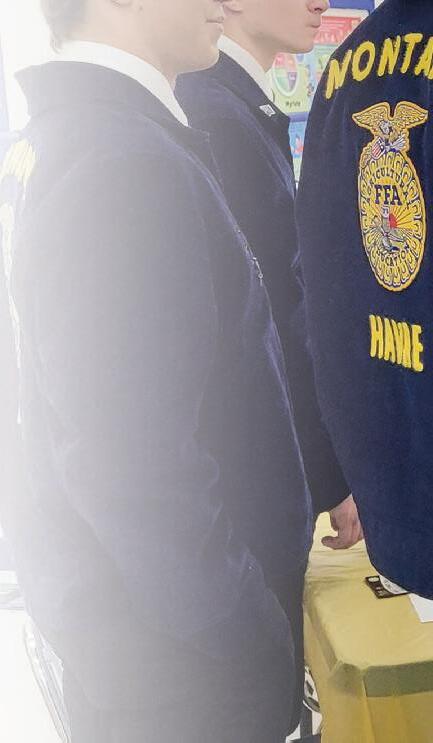
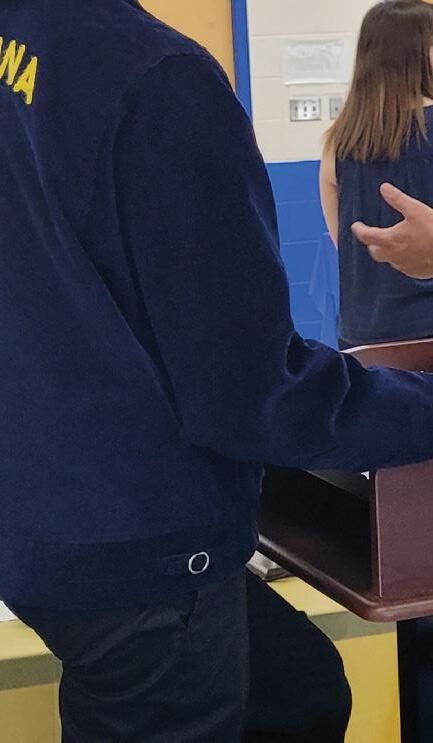
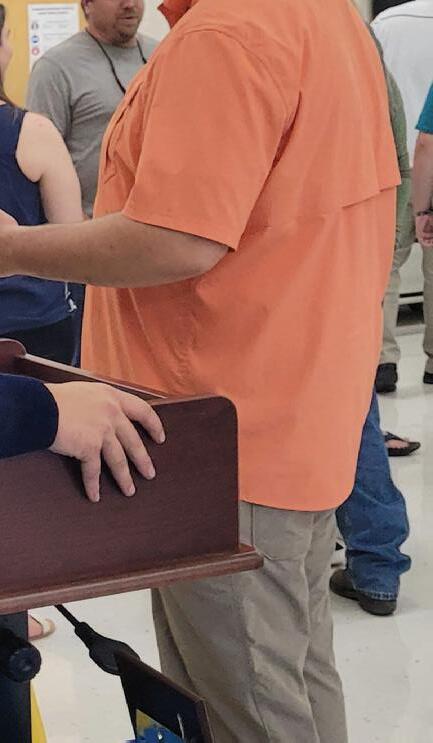

“We’ve got the resources to help communities get chapters started, so don’t hesitate to reach out,” she said.
To learn more, contact Rains at mrains@montanafarmersunion.com or Kuntz at development@montanaffa.org.



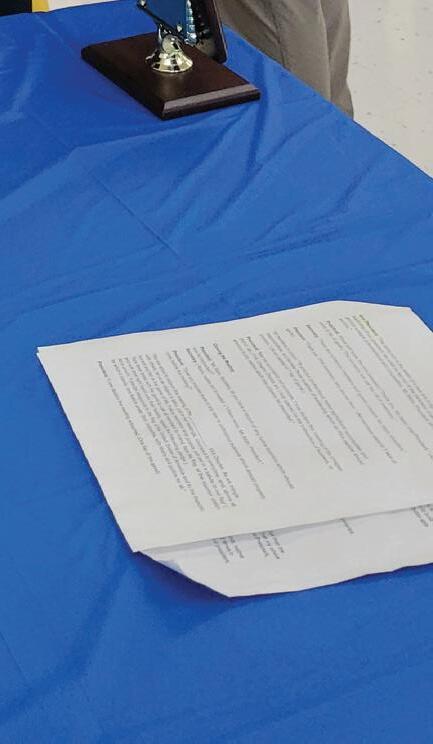
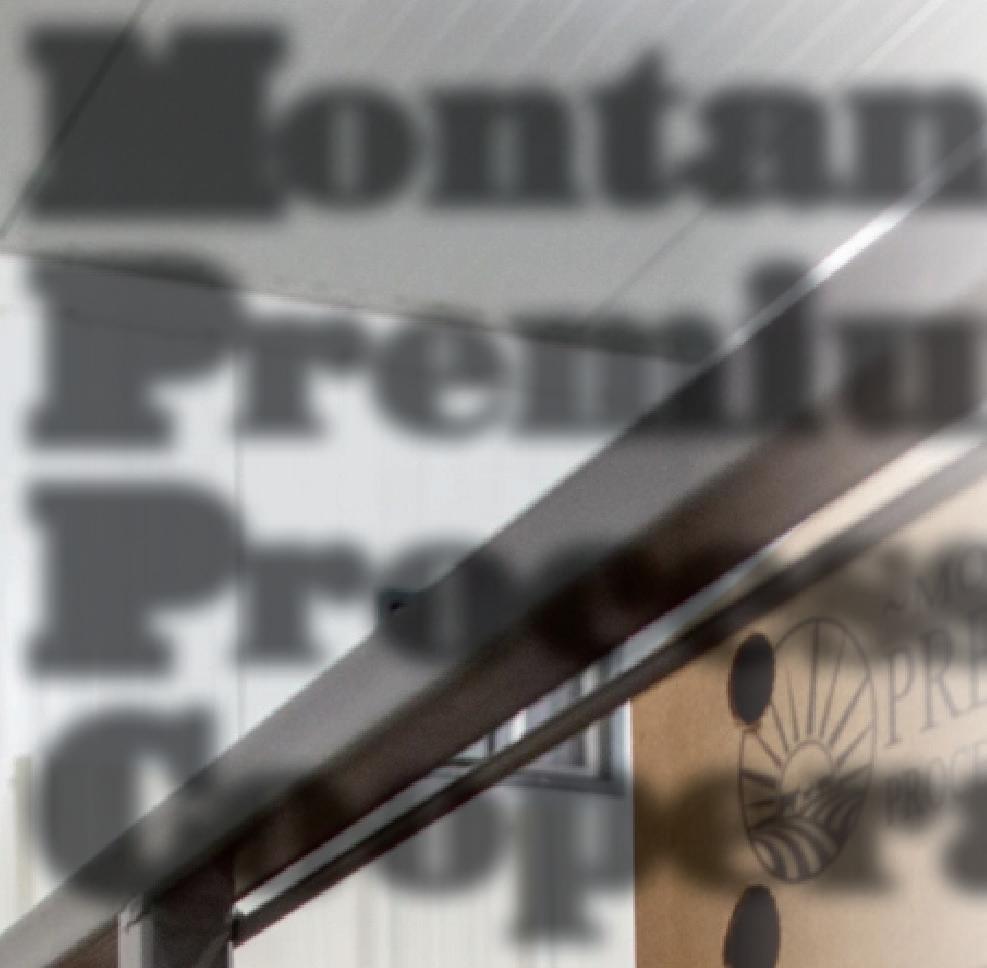
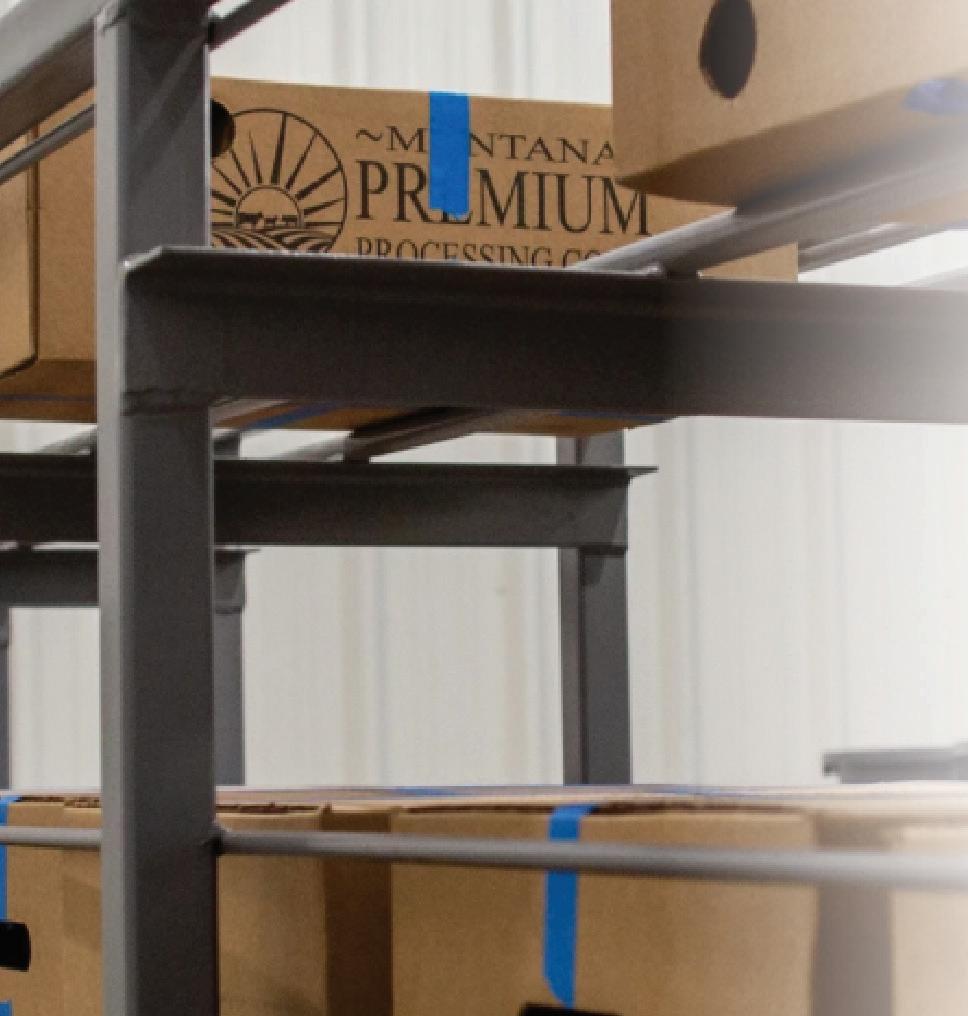
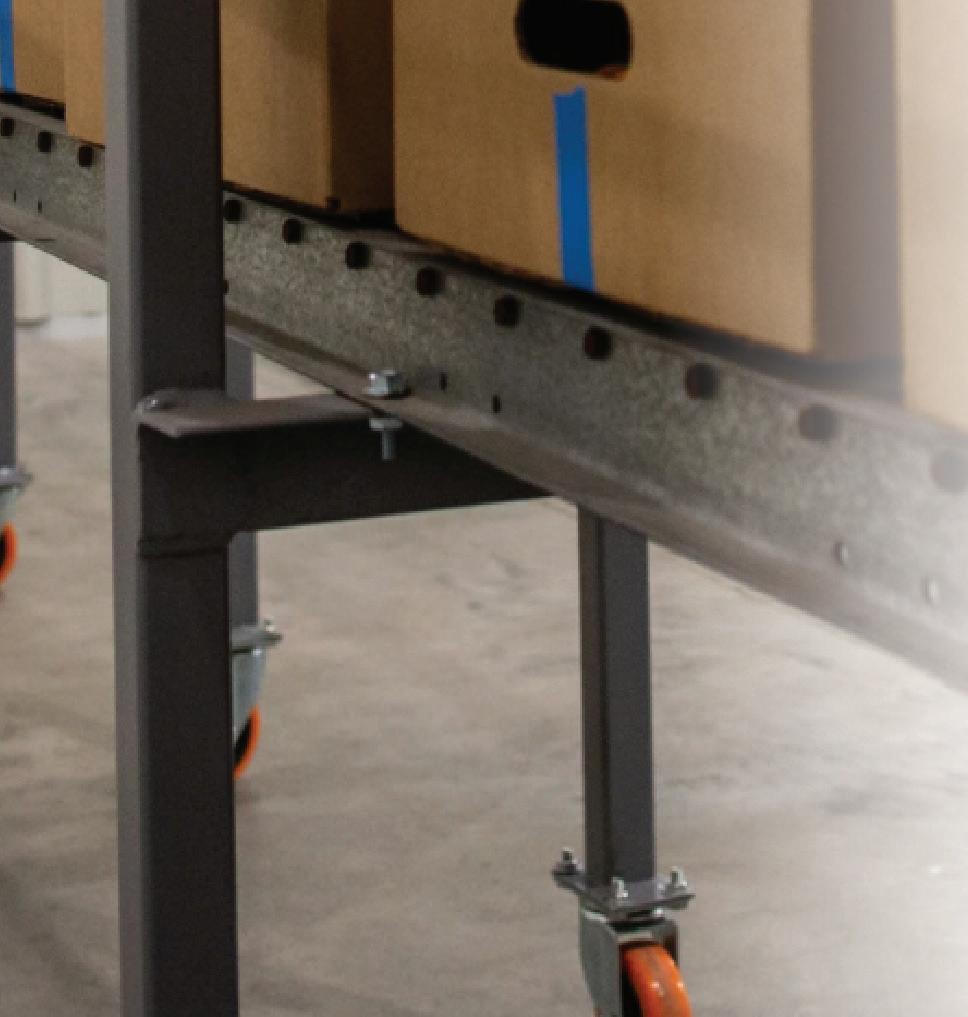



 By MFU STAFF
By MFU STAFF
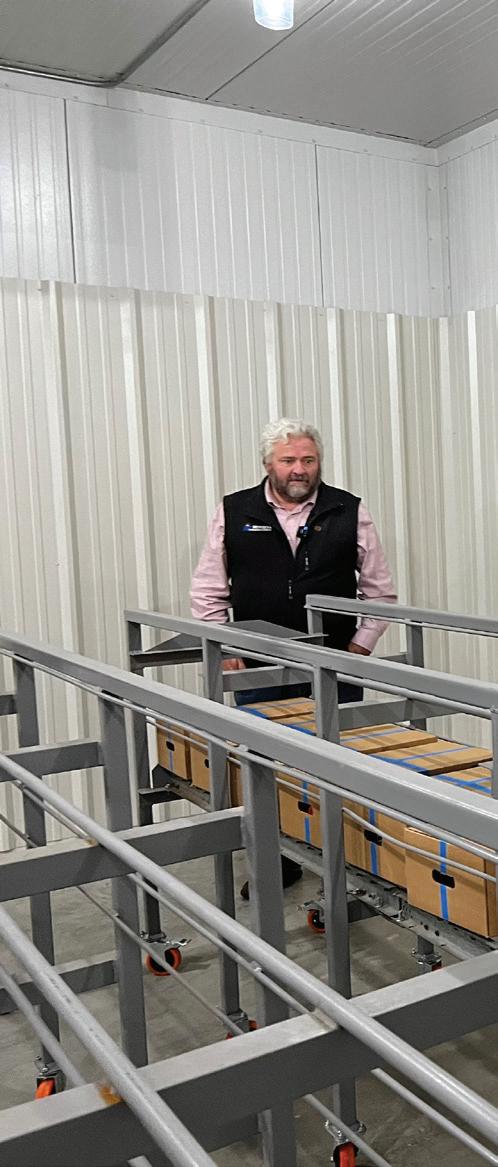
Montana Premium Processing Cooperative is expanding producer opportunities with its USDA inspected facility located in Havre.
MPPC was created to increase meat processing capacity in Montana that then could be retailed across the country. A cooperative model was chosen to ensure that members would control decisions to increase stability and value for producers and transparency for consumers.
Since the beginning of this year more than 270 animals have been processed in the member-owned cooperative that can process beef, pork, lamb and bison.
“We’re finally doing what we’re here to do,” General Manager Bill Jones said.
The plant received its highly anticipated USDA inspection approval this summer.
“It was definitely very satisfying,” Jones said.
Now, producers who have livestock processed at MPPC can ship it across state lines, opening markets and increasing supply of Montana born, raised and processed meat.
“It definitely makes the supply chain more resilient,” Jones said.
Typically, it takes about three weeks from start to finish to process a beef, including time to age, butcher and freeze animals.
Already, the plant’s full staff has processed beef, lamb, pork and bison, and Jones said the cooperative is working to obtain an organic certification and looking at offering more value-added processing options for producers in the future.

The feedback so far has been positive.
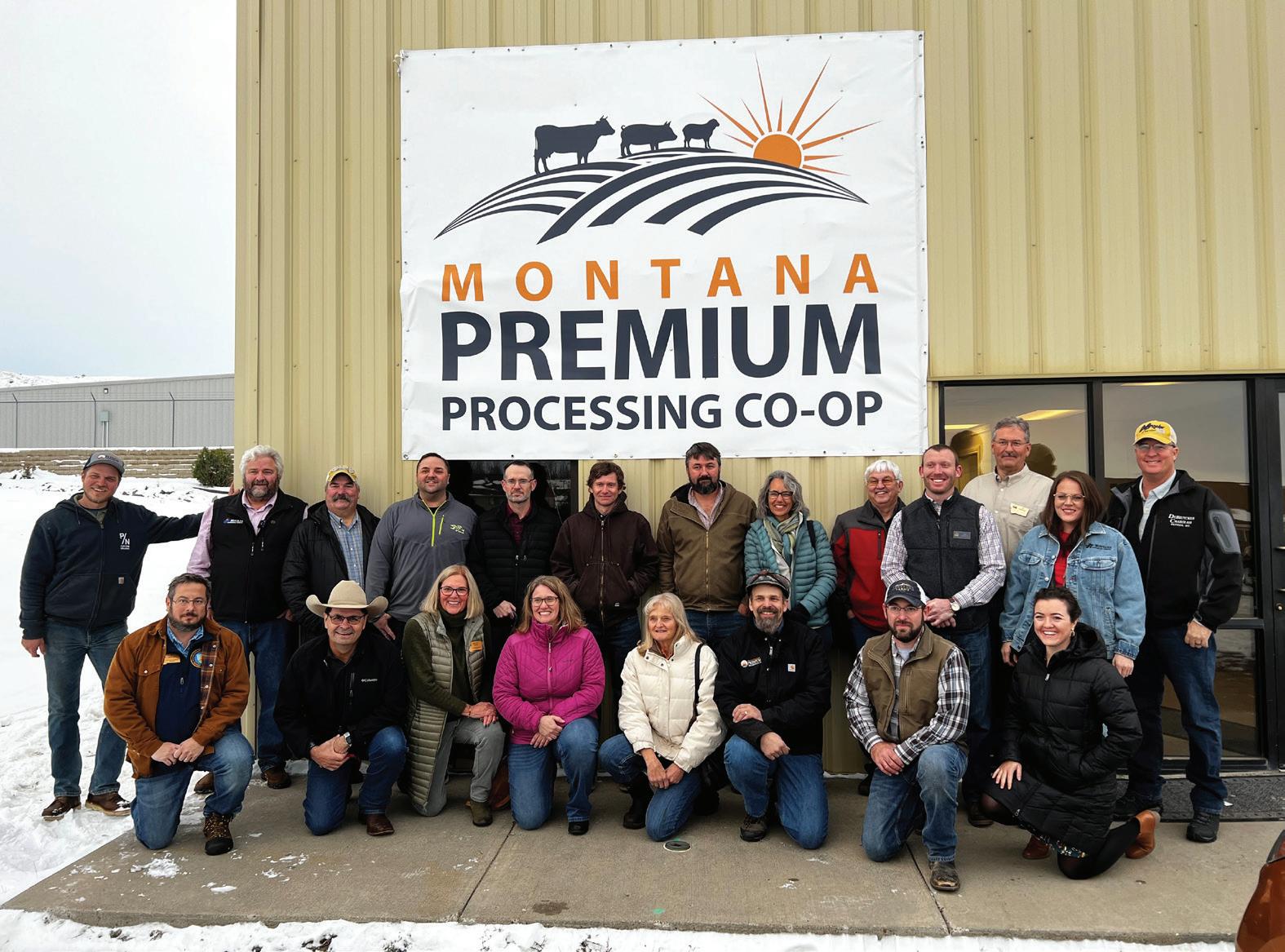
MPPC possible and ensure its future viability.
“Overall I am just extremely satisfied,” said Trisha Gruszie, who manages family owned Gordon Cattle Company and has used MPPC to process both beef and pork.
Switching from their former processing facility was a difficult decision because it was a longstanding, positive relationship, Gruszie said.
However, MPPC is conveniently located and the cooperative model means she can count on it being available long term.
Gruszie figured she will pay for her membership in two years with fuel cost savings alone.
The MPPC facility is modern and clean, the drop off system is easy and safe, and her customers are satisfied, she said.
Gordon Cattle Company has sold whole and half beefs to customers for more than 30 years, but switching to a USDA inspected facility has already expanded their customer base.
“Now that we’re at a USDA inspected facility, I’ve been able to break that down and start selling beef bundles that the average consumer can afford,” Gruszie said, adding that she plans to start selling meat across state lines in the future, further expanding her customer base.
Integrity in the packaging and product is key to keeping those customers happy, and MPPC provides that.
“If customers are paying those prices, I want them to be assured that the meat I’m putting in front of them is 100 percent Gordon Cattle Company meat with nothing added to it. And I can assure them of that with a facility like MPPC,” Gruszie said.
Support from Gruszie and other producers have made
“In a community where who you know and who you’re related to matters, the fact that producers were willing to jump in and give us a try was huge,” Jones said.
Jones added more shares in the co-op are available for purchase. The shares give producers voting privileges, as well as priority for hook space.
Now that the facility is fully operational, Jones said, he’s looking forward to more producers joining the cooperative and the facility continuing to meet member needs.
“As long as they show up with the animals, the rest will take care of itself,” he said.
Learn more about Montana Premium Processing Cooperative, how it works, and how to join at mtpremiumprocessing.com.
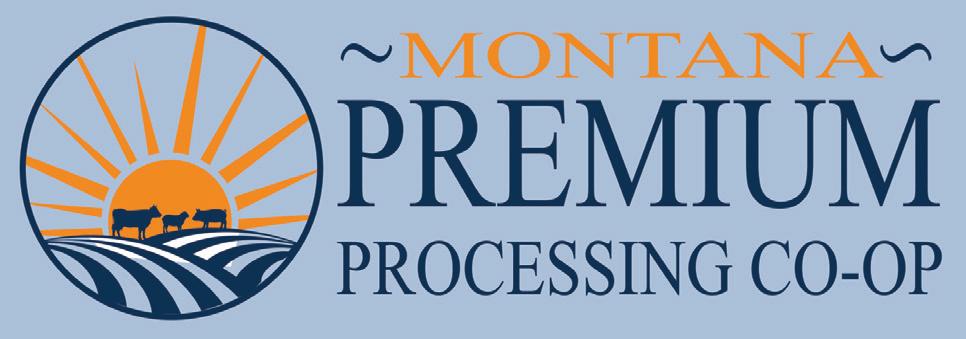
Annual membership meeting will be held Nov. 17th MPPC facility tours from 2-4 p.m. and the meeting convening at 4 p.m.
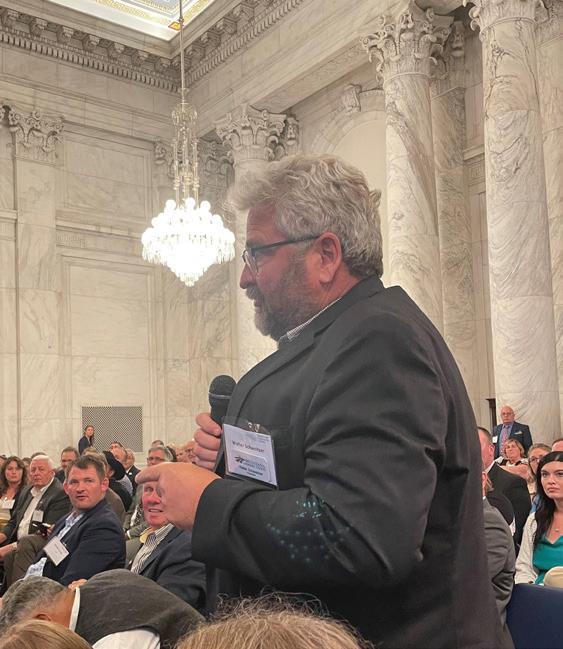
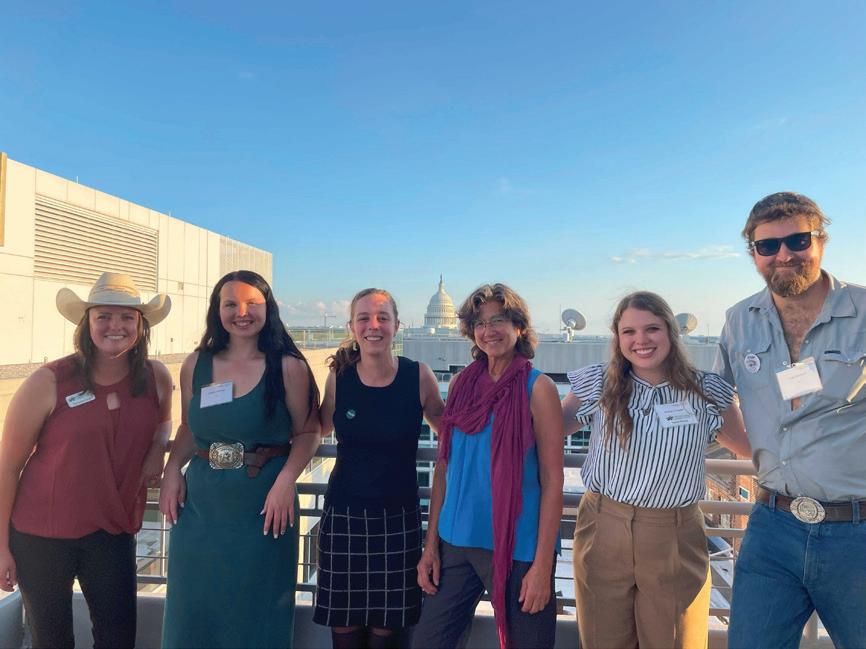
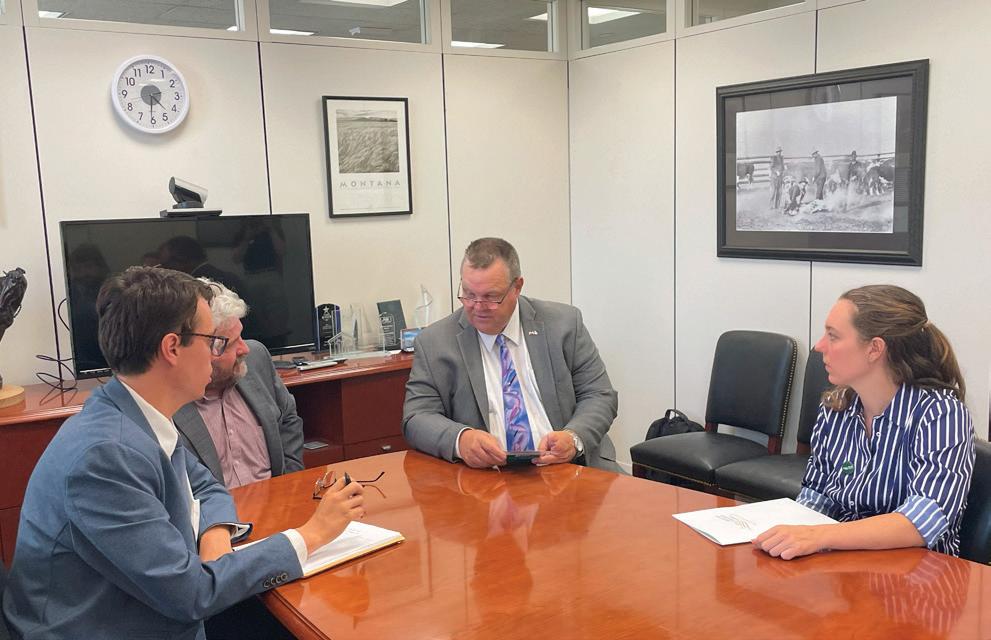
In September, 300 Farmers Union members from across the country joined together in Washington, D.C., to advocate for family farmers and Farmers Union farm bill priorities.
“Fly-in is a way to combine with other members and states to amplify our voices as family farmers and ranchers. This is a powerful way to let our representatives know what we need from them to help make it happen,” said Kalispell area rancher Lisa Wade-Mayorga. Lisa and her husband are founding board members of the Glacier Processing Cooperative, newly formed in the Flathead.
Fly-in participants spent a day hearing from leaders in the industry, including NFU President Rob Larew, USDA Deputy Secretary of Agriculture Xochitl Torres Small, updates from USDA’s marketing and regulatory programs and farm production and conservation, as well as a conversation with FSA Administrator Zach Ducheneaux about staffing issues and solutions.
For the main event at USDA, Farmers Union members heard directly from Secretary Vilsack. In his presentation (whiteboard included!) he talked about the need for thinking outside the box when it comes to ag policy and particularly how USDA programs are funded inside and outside of the farm bill.
The Secretary also took some time to answer questions and engage with members directly – one of the hallmarks of the event.
“Participating in the D.C. Fly- In gives us insightful perspectives into the federal law-making process. Making us aware of the intricacies of lobbying feeds the fire for us at the grassroots level to become even better at telling our stories and creating even better plans of action for future efforts,” said Samantha Ferrat, a rancher in Toston and an MFU Membership Ambassador. “Whether that be at the local level, state legislature or again on the Hill, it all matters and it really is up to us –the boots on the ground people – to fight for fairness for farmers and ranchers.”
Fly-in participants also had a briefing with the House and Senate Agriculture Committees. This was an important opportunity for staff and membership to discuss the farm bill and for fly-in attendees to provide direct feedback to the staff that are working on the upcoming farm bill.
MFU members also participated in two days of congressional and administrative meetings, a hallmark of the grassroots organization’s event. In total, Farmers Union members participated in more than 260 Congressional meetings over the course of the week.
The Biden administration is taking antitrust and competition issues more seriously than any recent administration, and it was our honor to be able to provide the farmer perspective to the Department of Justice, the Federal Trade Commission, the
US Trade Representative, and many other offices.
“I know a lot of people these days feel looked over and ignored by their politicians,” said Ali Moxley, MFU member and participant in the 2023 FUEL program. “I think events like the NFU D.C. Fly-in are extremely important because they provide your elected officials with an opportunity to look into the eyes of a farmer and hear how the policy the representative is voting on has real-life effects in their home states.”
A highlight for many Fly-in attendees was the White House briefing. There, around 100 NFU members engaged in a discussion with senior staff from the White House about rural and agricultural policy.
“Advocating for agriculture and lobbying for changes to the farm bill was an experience I will never forget!” said Layne Johnson, who grew up on her family’s ranch in Westby and is currently an ag communications student at the University of Wyoming. Johnson participated in the NFU Emerging Leaders Program as well. “Not only was this life-changing, but a new possible career path for me.”
The Fly-in takes place once a year, but Farmers Union’s advocacy work is never ending. Farmers Union members will continue to have conversations with decision makers leading into the upcoming farm bill, and you yourself can have an impact right from your home. Visit nfu.org/fly-in to read up on our policy priorities and then relay that message to your elected officials to let them know that you support family farmers and ranchers.
“The Fly-in drives home how important the grassroots work we do on the ground really is,” said MFU membership services and Government Affairs director, Rachel Prevost. “No one can better advocate for family farmers, ranchers, and rural communities than those who live and work in that life. MFU is proud of and grateful to the members that participated in the Fly-in this year. Montana family farm agriculture was well represented.”
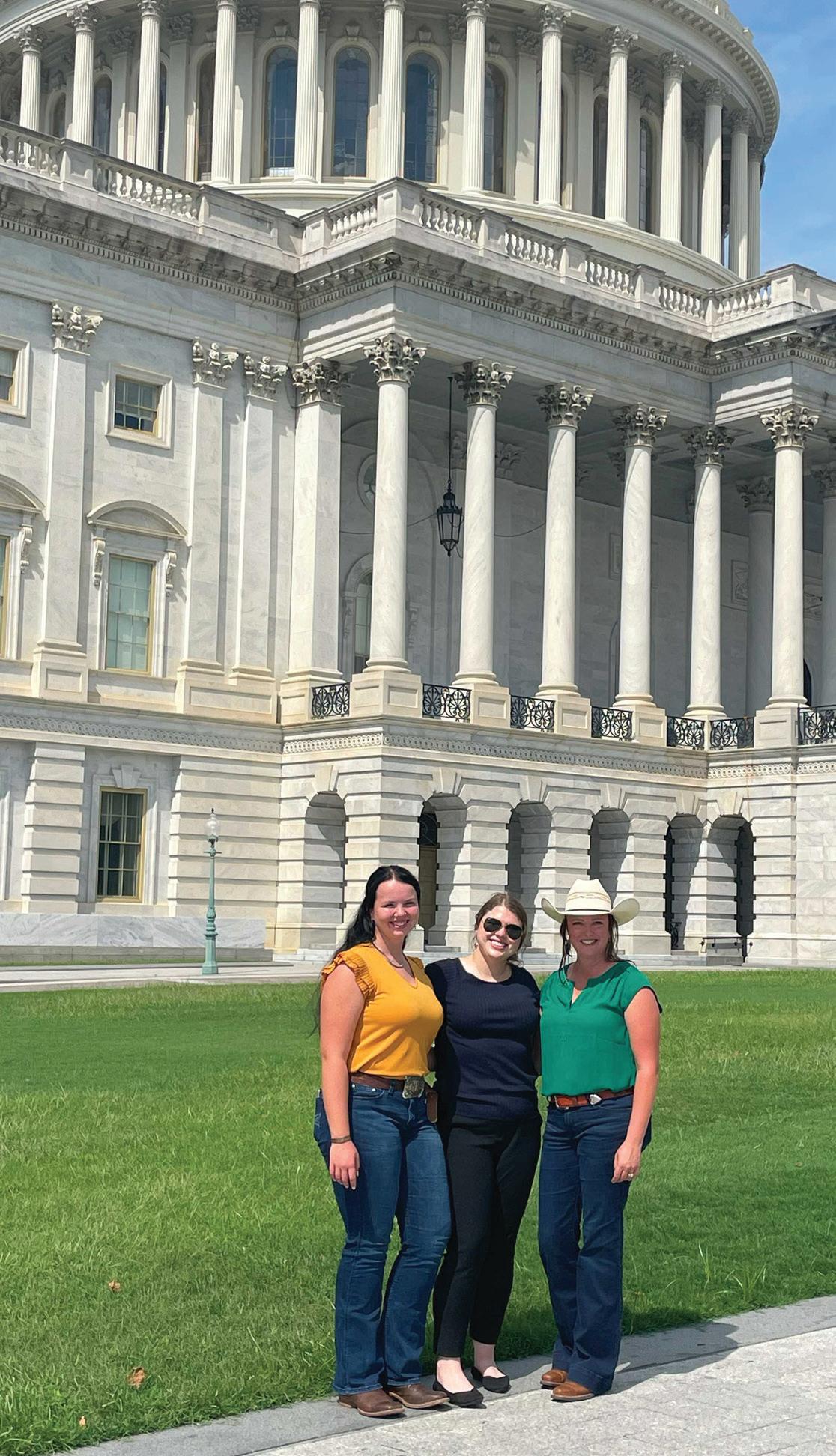
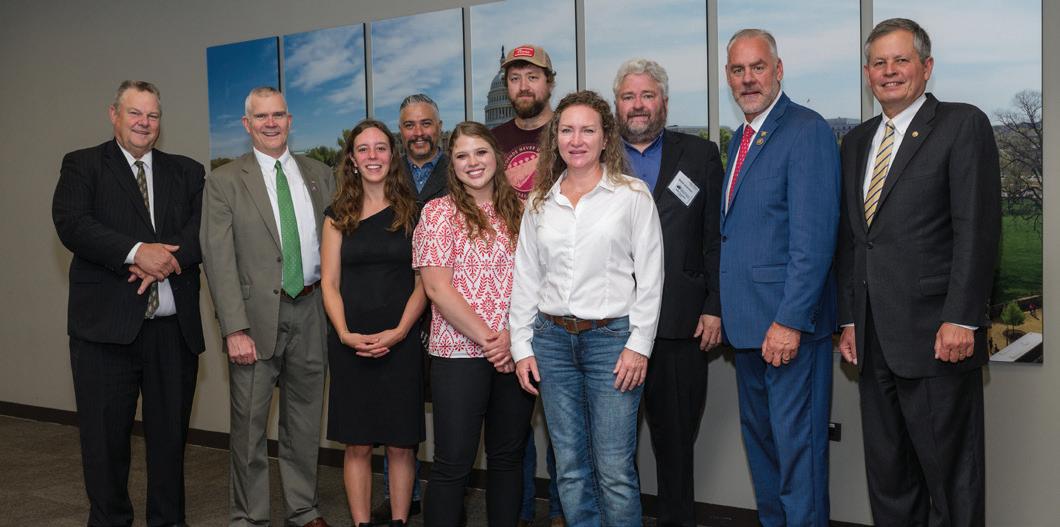











Farmers Union members are slowly but surely making it legal for farmers and ranchers to repair their own equipment. In Montana’s Legislature, we brought Right to Repair (R2R) bills to the 2021 and 2023 legislatures, which helped to build momentum by informing legislators and the public about the issue.
R2R has been proposed in 10 other states, including Florida, Maryland, Missouri, New Jersey, Texas and Vermont. Last year Sen. Jon Tester introduced the Agricultural Right to Repair Act, which would have implemented the right to repair farming equipment nationwide. That bill didn’t make it out of committee, but advocates are urging Tester to re-introduce the bill, and to include it in this year’s Farm Bill, which is currently being negotiated in Congress.
Rep. Marie Gluesenkamp Perez in the House of Representatives, along with co-leads Reps. Neguse, Slotkin, and Spanberger, recently introduced the Agricultural Right to Repair Act. MFU and National Farmers Union lauded the legislation as necessary to help farmers avoid costly repairs and delays.
Why has it been so hard to get R2R passed at both the federal and state levels? One thing we saw in the Montana Legislature is that GOP lawmakers are stuck between their farming constituents, who overwhelmingly support R2R, and the equipment manufacturers who vehemently oppose it, and other industry groups whose corporate financing helps to write their narrative about the issue.
The first R2R bill to be enacted, in Colorado, will go into effect in January 2024. It requires manufacturers to make available to independent repair providers and equipment owners documentation, parts, embedded software, firmware, and tools. They must supply these at “fair and reasonable” terms and costs which cannot discourage or disincentivize repairs to be made by an owner or independent repair provider. Next year, Montanans can get some of the tools needed to repair their own equipment from Colorado.
That might just break the logjam created by the coalition of manufacturers like John Deere and industry groups like Farm Bureau, which have successfully persuaded legislators at the state and federal level that providing tools and information








































to farmers would allow equipment owners to illegally crank up the horsepower and bypass emissions controls and would expose company trade secrets.
Of course, farmers and ranchers know that those arguments are deceptive. It’s already illegal to bypass emissions controls, and trade secrets aren’t embedded in trouble codes.
In a 2015 letter to the US Copyright Office, John Deere argued that when someone buys a tractor, they don’t actually own that tractor. They are simply buying the “implied license for the life of the vehicle,” because Deere’s proprietary computer code is woven throughout the machine. In 2018, after public pressure, manufacturers promised that all the necessary tools and diagnostics would be available to farmers by 2021. That didn’t happen.
In July of 2022, two R2R interest groups called on the EPA to investigate if John Deere’s refusal to allow farmers to repair their own equipment violates the Clean Air Act.
The EPA recently confirmed in a letter to National Farmers Union that farm equipment manufacturers and dealers have been relying on false and misleading claims about the Clean Air Act as an excuse to restrict independent repair of farm equipment.
When MFU members were lobbying in the Capitol in September, they brought the message to republican members from around the country. Advocates spoke with not just Sen. Daines and representatives Zinke and Rosendale, but also to representatives from places in the country that don’t have Farmers Union members. Congressional staff in Florida, the Carolinas and Georgia expressed support for this commonsense policy and were glad to learn more about the issue. The fight is not over, as Farmers Union is committed to breaking up the repair monopoly that manufacturers and dealers have, which reduces competition, inflates service prices, and creates service delays during tight planting and harvest windows.
Across the rolling hills and vast farmlands of rural Montana, our rural communities know the value of cooperation. Just as farmers and ranchers rely on each other during planting and harvest seasons, there's a growing realization that the same spirit of cooperation can address one of the region's pressing challenges: housing. Ranchers and farmers often struggle to provide housing for their labor pool due to limited rentals in rural areas. The cooperative housing model offers a practical solution, being championed by the Montana Cooperative Development Center (MCDC).
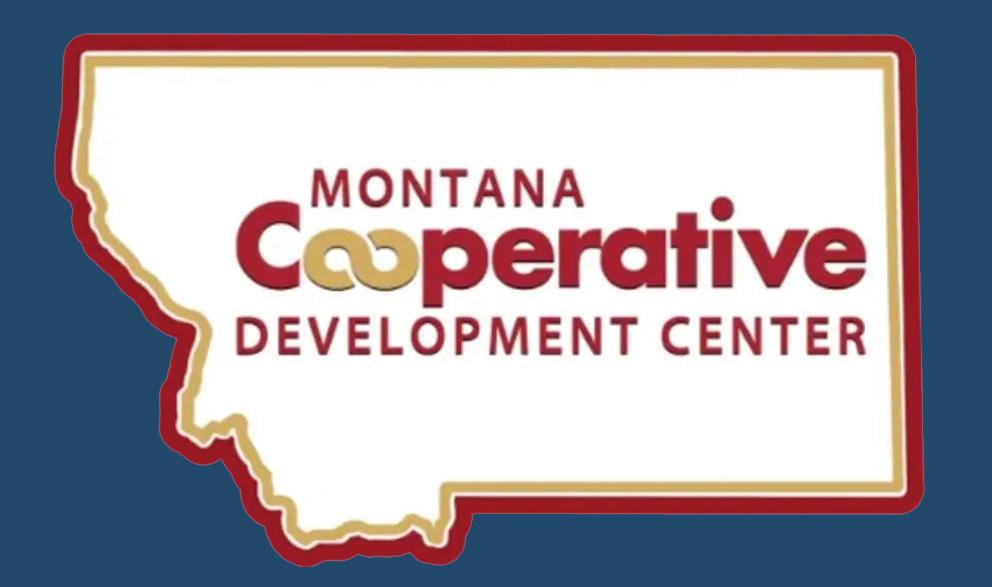
By establishing cooperative housing units near their farms and ranches, rural communities can ensure stable housing for employees. But what is a housing cooperative? A housing co-op is a legal for-profit entity in Montana, where members jointly own and govern a property. Instead of the traditional homeownership where an individual owns a specific house or unit, in a co-op, members own shares in the entire property. This means decisions are made collectively, responsibilities are shared, and there's a strong sense of community, much like the camaraderie we cherish in our farming and ranching circles. It's about neighbors looking out for one another, ensuring everyone has a roof over their head, and the community thrives. Just as we rely on each other at times of need, the co-op housing model embodies that same spirit of cooperation and mutual support.
MCDC is dedicated to utilizing the cooperative model to address Montana's economic and community needs actively. Inspired by the success of Riverside Crossing Senior Housing Cooperative in Hamilton, Montana, (http://riversidecrossing.org), and similar initiatives in other states, MCDC is enthusiastic about introducing more housing cooperative models across the state.
MCDC's focus is bridging the "missing middle" in housing, catering to young professionals, service workers, and seniors who don't qualify for low-income housing but are priced out in busier areas. The goal is to ensure that hardworking Montanans have affordable homes. MCDC is building out cooperative programs for housing and collaborating with organizations like community Land Trusts to craft unique solutions. In addition, MCDC has introduced the Rural Investment Cooperative model which can fortify our rural communities. This cooperative model can provide locally owned and invested affordable housing for essential employees and could also address other needs like childcare and Mainstreet revitalization. The utilization of cooperatives could result in making rural areas more appealing to not only retain these vital workers but also attracts new talent, bolstering our agricultural economy and essential services.
MCDC aims to work with local communities to build their own holistic solutions to the ongoing housing crisis, ensuring that our farmers, ranchers, and rural residents have secure, attainable, and community-driven housing options. By championing these cooperative models, MCDC and our partners are not just addressing immediate housing needs but are also planting the seeds for sustainable, community-centric growth in rural Montana.



Learn more about MCDC at www.mcdc.coop. And if you are interested in having an MCDC member discuss a potential cooperative program in your community contact us at 406-727-1517 or mcdc@mcdc.coop.
A special thank you to Ray Brown with Sanders County Community Development Center for his contributions and assistance.













































































Wherever you stand on pumpkin spice, pumpkins remain a beloved fall fixture for Americans.

According to the University of California, more than 45 varieties of the winter squash exist, and scientists believe pumpkins originated in North America roughly 9,000 years ago.



Here are some favorite ways our members prepare pumpkin. Enjoy!


Pumpkins are an important staple for many Native Americans, with pumpkins being used for food and fiber.
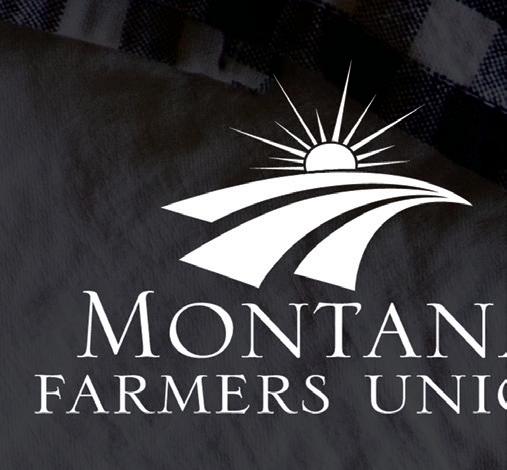

While you might associate the fruit (yes, it’s technically a fruit in the same family as cucumbers and melons) with pie, every part of the pumpkin from the leaves to the seeds is edible.

Submitted by Erin Turner, Turner Farms
5 ¼ cup flour
3 tsp baking soda
1 ½ tsp salt
4 ½ tsp pumpkin pie spice
¾ C oil
¾ C applesauce
2 ¼ C sugar
¾ C brown sugar
6 eggs
22.5 oz pumpkin puree
1 C water
Preheat oven to 350 degrees F. In one bowl, mix the first four dry ingredients together. In a separate bowl mix the next seven ingredients (oil, applesauce, sugars, egg, pumpkin and water). Once mixed well, slowly add the dry ingredients stirring until incorporated. Pour into greased pans and bake for 44 mins (or until a fork comes out clean). Remove, cool in pan and then remove onto a cooling rack. These loaves freeze really well. The recipe is very easy to double or triple for more loaves.
1 C pumpkin, 1-inch cube pieces
½ onion
6 tsp butter
2 C chicken broth
1 tsp salt
½ tsp pepper
1 tsp curry powder or paste
½ C cream
Simmer or steam pumpkin until soft, about 20 minutes. Saute onions in butter until soft. Run pumpkin and onions through blender with ½ C chicken broth until smooth.
Return to pot. Add 1 ½ C chicken broth. Add 1 tsp salt, ½ tsp pepper, and 1 tsp curry powder. Simmer.
Add ½ C cream at end.
Submitted by Mary Jenni, MFU Ambassador
2 C pumpkin, roasted and mashed
3 lbs of boneless pork roast, trimmed and cut into ½ inch cubes
12 oz Mexican lager
3 chopped Chipotle peppers in adobo sauce
3 tsp oregano
1 C sour cream
Vegetable oil
2 medium tomatoes, roughly chopped
1 Poblano pepper, seeded and chopped
2 medium onions, diced 1/3 C chile powder
½ bulb of garlic, minced Lime wedges
Cilantro, chopped
In a large pot, combine pork, beer, 3 cups water and 2 tsp of salt to a simmer. Skim foam off surface after it comes to a simmer. Add in chipotles and half the oregano. Simmer for 30 minutes.
Mix the sour cream with ½ C mashed pumpkin and salt to taste. Cover and chill.
In a skillet over medium heat, add oil then tomatoes, Poblano, onion, salt to taste and cook 15 minutes. Add remainder of oregano, ¼ C chili powder and garlic and cook 5 minutes. Add the remaining pumpkin and cook for 5 minutes. Adjust seasonings per taste. Add veggie mixture to pork and simmer for 45 minutes. Season with salt and pepper to taste.
Serve with pumpkin sour cream, chopped cilantro, sprinkle of chili powder, and squeeze of lime.
1 loaf cinnamon rasin bread
8 oz cream cheese, cut into small cubes
12 oz evaporated milk
8 large eggs
1 C pumpkin, mashed
2/3 C brown sugar, packed
½ C milk
2 tsp ground cinnamon
¼ tsp ground nutmeg
¼ tsp ground ginger
1/8 tsp ground cloves
½ tsp salt
½ C chopped pecans
Cut each slice of bread into quarters. Arrange half of the bread in a greased 13x9-inch baking dish.
Layer with cream cheese and remaining bread, pressing down slightly.
In a large bowl, whisk the eggs, evaporated milk, pumpkin, brown sugar, fat-free milk, spices and salt. Pour over top. Refrigerate covered, overnight. Preheat oven to 350-degrees. Remove casserole from refrigerator while oven heats. Bake, covered, for 40 minutes. Uncover, sprinkle with pecans. Bake, uncovered for 25-30 minutes or until lightly browned and a knife inserted in the center comes out clean.
Let stand for 5-10 minutes before serving. Dust with powdered sugar and serve with warm maple syrup if desired.
Submitted by Mary Jenni, MFU Ambassador
1-2 lb pumpkin, skin on
½ C grated Parmesan cheese
3 tbs bread crumbs or crushed crackers
6 tbs finely chopped parsley
2 ½ tsp finely chopped thyme
Zest of 2 lemons
2 garlic cloves, crushed
¼ C olive oil
½ C sour cream
1 tbs chopped dill
Preheat oven to 375 F. Cut pumpkin into 3/8 inch thick slices and lay them flat (cut side down) on a parchment lined baking sheet.
To make the crust, mix the Parmesan, breadcrumbs, parsley, thyme, half of lemon zest, garlic, and salt and pepper to taste in a small bowl.
Brush pumpkin with olive oil then coat the crust mix on pumpkin and pat it down on the slices.
Place baking sheet in oven and roast for 30 min or until the pumpkin is fork tender. If the crust starts to darken too much during roasting, cover with foil.
Mix dill into the sour cream. Add salt and pepper to taste.
Sprinkle roasted pumpkin wedges with remaining lemon zest. Serve with dilly sour cream on the side.

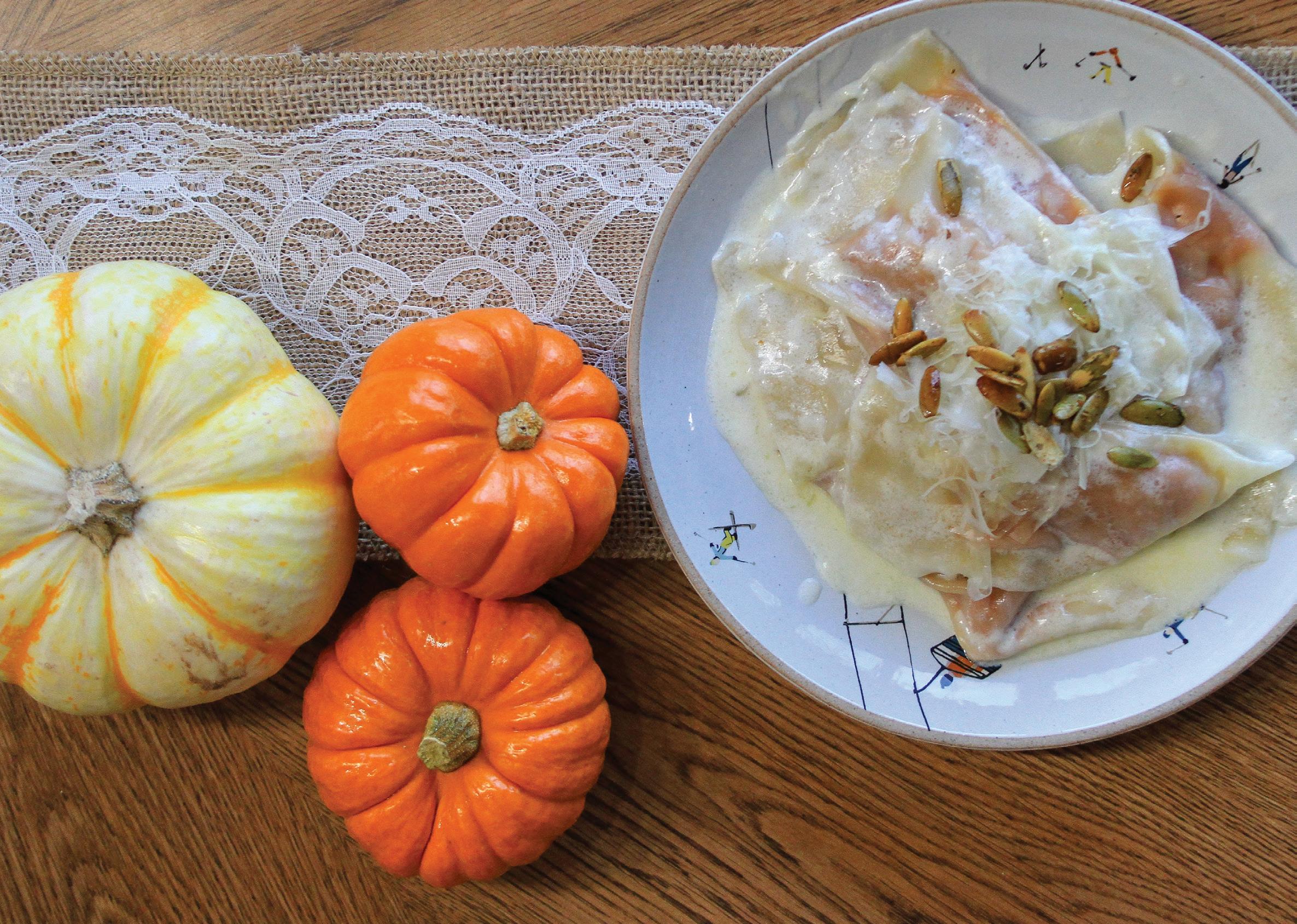


15 oz pumpkin puree
¼ tsp lemon zest
¼ tsp salt
¼ tsp pepper
¼ C grated Parmesan, plus more for sprinkling
1 egg, lightly beaten
2 tbs butter
¼ C cream
18 round or square wonton wrappers
Toasted pumpkin seeds for garnish

Mash pumpkin, lemon zest, salt, pepper, grated Parmesan to make the filling.
Arrange wonton wrappers on a workspace. Brush edges with egg. Place 1 tsp filling on bottom half. Fold wonton over, gently pressing edges to seal. Boil in salted water until just tender, or about 3 minutes.
Melt butter with cream in a sauté pan. Add ravioli and 2 tbs pasta cooking liquid. Toss to coat. Garnish with toasted pumpkin seeds.
Tip: Use Old Bay on the pumpkin seeds for an unexpected kick. Or substitute brown butter and sage for the sauce with ricotta cheese in the filling.
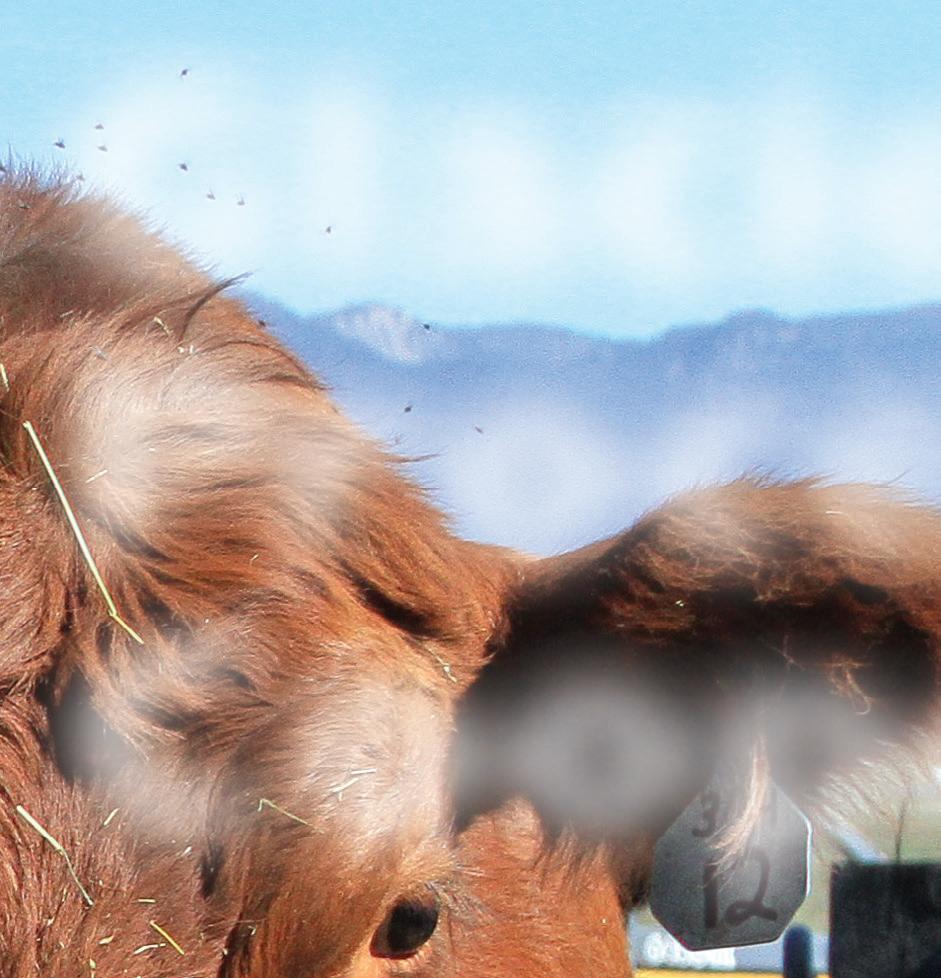

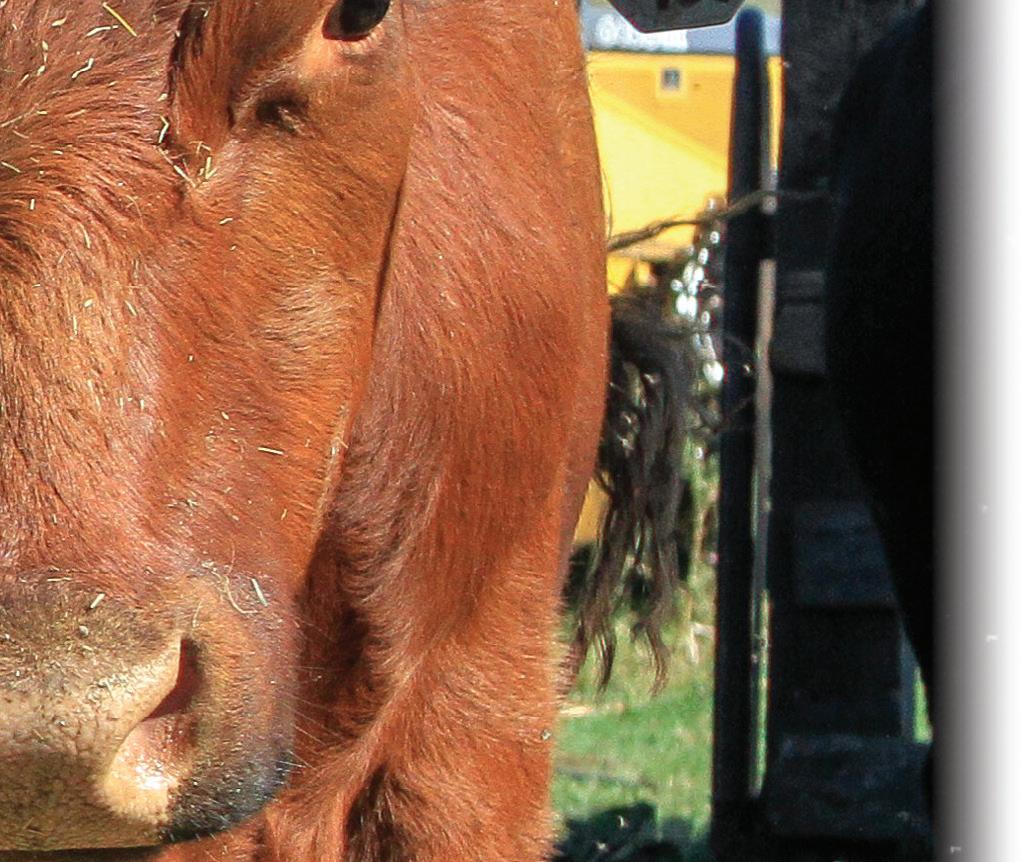
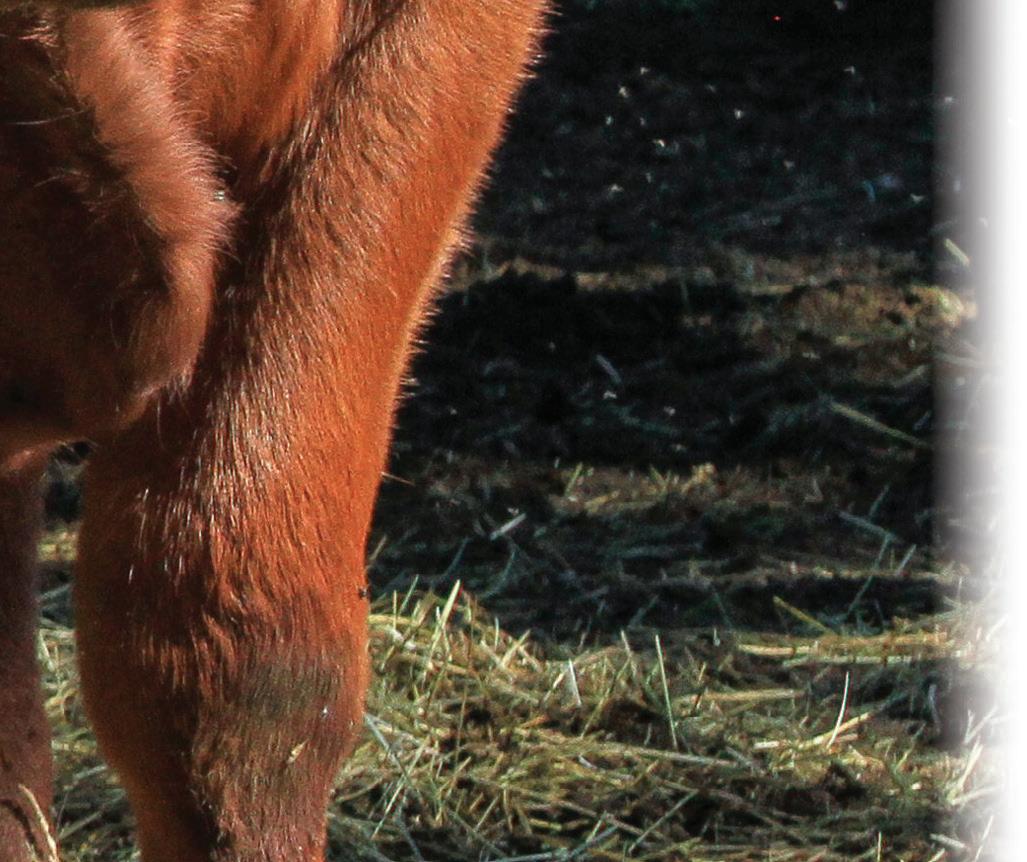
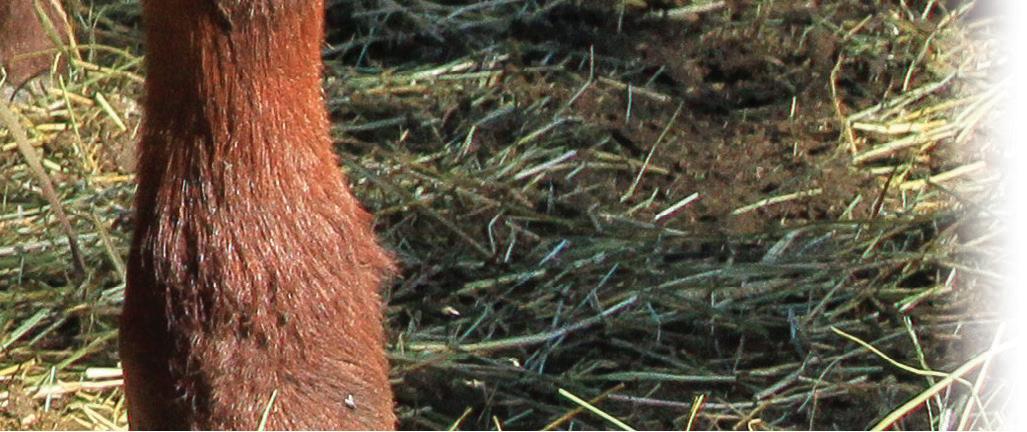

When Vandevanter Meats opened outside of Columbia Falls in 1945, it was small enough that you could almost touch the opposite walls with outstretched arms. Today, the meat processing business has grown to include the Montana Jerky Company in the mid-80s and then expanded again in 2004.
The longstanding business stands poised for another expansion as newly formed Glacier Processing Cooperative prepares to purchase the business on Jan. 1, 2024, and increase its capacity threefold.
Glacier Processing Cooperative was formed by local ranchers who wanted to ensure Vandevanter Meats remained open as a meat processing facility after its owner retires. The co-op is comprised of local producers, many of whom have had their meat processed at Vandevanter for years.
“That puts my mind at ease,” said Jeni Smith, whose grandfather founded Vandevanter Meats and who manages the business.
In July, Glacier Processing Cooperative began selling producer memberships. Three hundred producer memberships are available at $7,000 each. Investment in the cooperative also can be made by purchasing non-voting preferred stock shares at $1,000 each. Already, more than 20 producers have joined, gaining lower processing prices and priority for scheduling processing dates. The shares also come with a vote on business decisions, meaning every producer member has a voice in how the facility is run and a buffer exists against development pressures in the area.
Providing certainty is a main focus of GPC’s efforts – certainty for producers that they have a place to have animals processed in a timely manner and certainty for consumers that they are buying locally raised and processed meat.
“The response has been absolutely supportive,” said co-op board member Mark Siderius, who added that most people, whether they ranch or not, are pleased the facility will remain open.
“Everybody says, ‘We can’t lose any more ag in the valley,’” Siderius said.
Change can be intimidating, but making the change as a group helps eliminate worry that the facility will shut down, said Toby Hook, who currently uses Vandevanter Meats to process beef he then sells to his Hook Meats customers.
“The producers need it so we’re going to do everything to keep it going,” Hook said.
“Ag is a game of risk and to succeed at ag, we’re always minimizing risk,” said Chris Fritz, a co-op board member who largely sells his cattle on the commodity market but would like to set his price instead of waiting to hear it in the sales ring.
“Putting that certainty into the market is a real good thing,” Fritz said.
The cooperative model also minimizes risk for the members because they are sharing in the costs and responsibilities -- both now and in the future when new ideas are implemented, said Lisa Wade-Mayorga, who sells beef under her family’s Montana Better Beef brand direct to consumers.
Wade-Mayorga, who sits on the co-op’s board, said that the certainty of having more processing capacity will allow her family to double the number of beef they are able to sell annually without requiring them to expand their pasture.
The facility will make Montana Better Beef more sustainable, profitable, and predictable, she said.
For Smith, the co-op provides certainty that the family business will continue. She is the third generation to manage the business. The work fascinated her from her an early age, and she helped any way she could through her childhood, becoming a full-time employee in 2000.
“I love my job,” Smith said, adding she and other current staff members plan to continue with the business after the transition.
“The quality and the whole overall process – nothing’s going to change. It’s going to be the same,” she said.
Her grandfather would approve of the sale to Glacier Processing Cooperative because it allows the business to not only continue but to increase meat processing capacity in the Flathead Valley.


“If he was here, he would be so proud,” Smith said.
Immediately after transitioning ownership in January, the cooperative plans to find efficiencies to increase capacity, while also jumping into an expansion plan that calls for creating a 6,000-square-foot new building to house processing, freezer, aging, office, and retail space.
Co-op board members said demand is there to fill additional capacity, with some producers now waiting 18 months for a slot at a processing facility.
“It seems like everyone has a lot of customer supply that they want to satisfy,” Wade-Mayorga said.
With a booming population in the valley, demand has increased, Siderius said, adding some people who haven’t sold direct to consumers in the past are eager to do so now with the promise of additional processing available.
Consumers also want to be a part of local processing and being connected with their food and those who raise it, with interest in non-voting shares in the co-op to support its plans to increase local processing, Siderius said.
“You can look at the entire chain from beginning to end here,” he added.
The expansion and retail opportunity grows the popular jerky company too.
“I’m really excited about the retail part of it,” Smith said, adding that she has always wanted to create a retail space and increase capacity for jerky production and sales.
“The purchase and expansion would make my dream here a reality, literally,” she said.
To learn more or join, visit www.glacierprocessing.com.




Vandevanter Meats has expanded several times since Jeni Smith’s grandfather founded it in 1945. Here, Smith stands in the original portion of the building. You can see where the building expanded based on lines in the concrete floor.
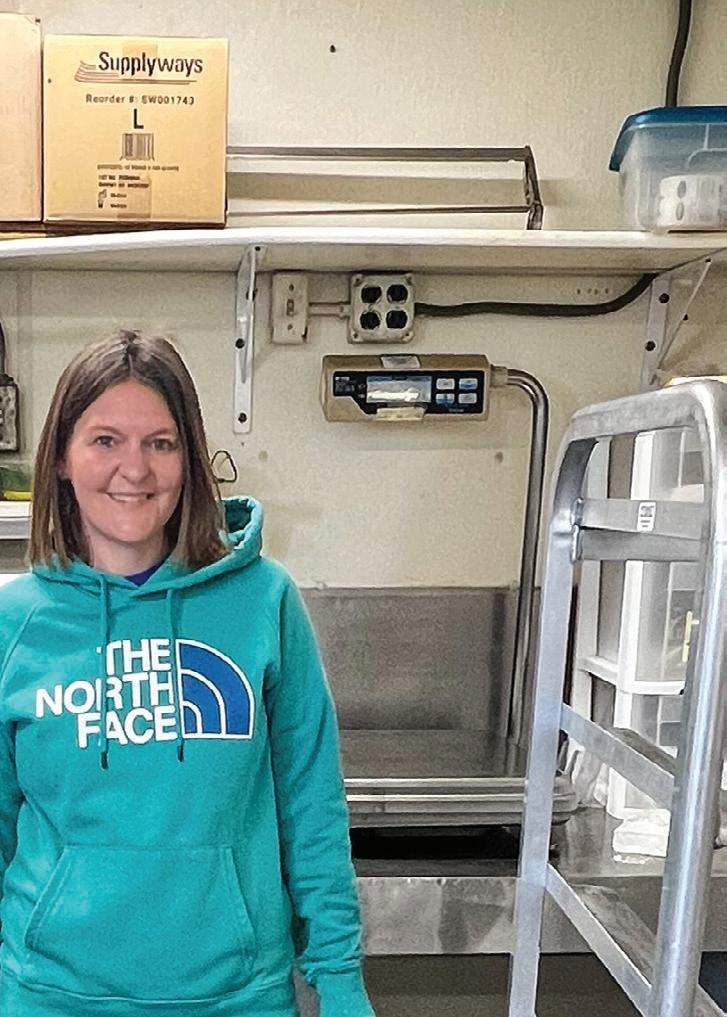



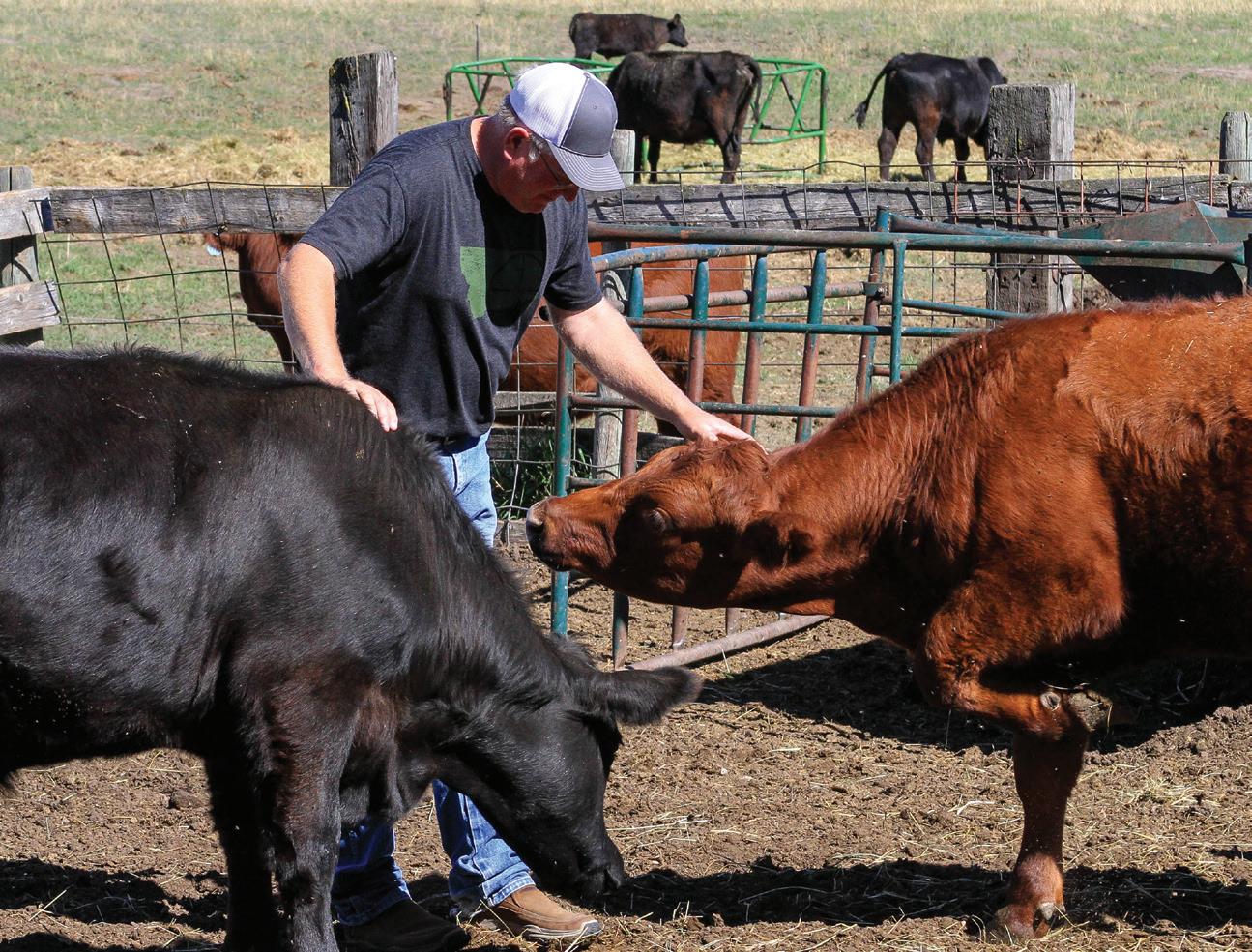


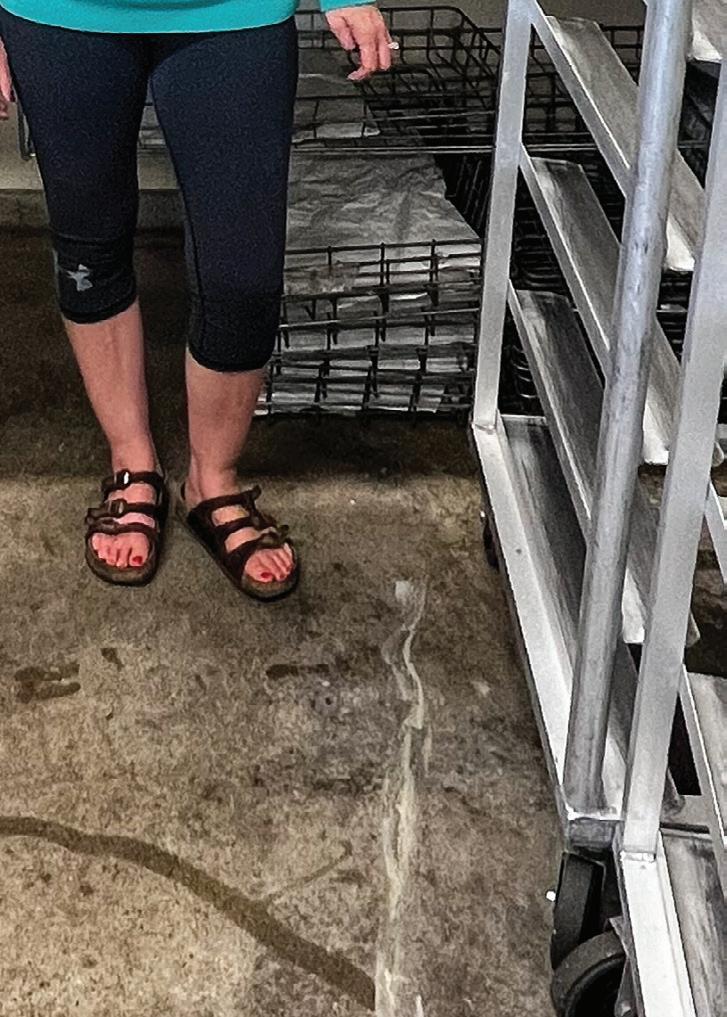
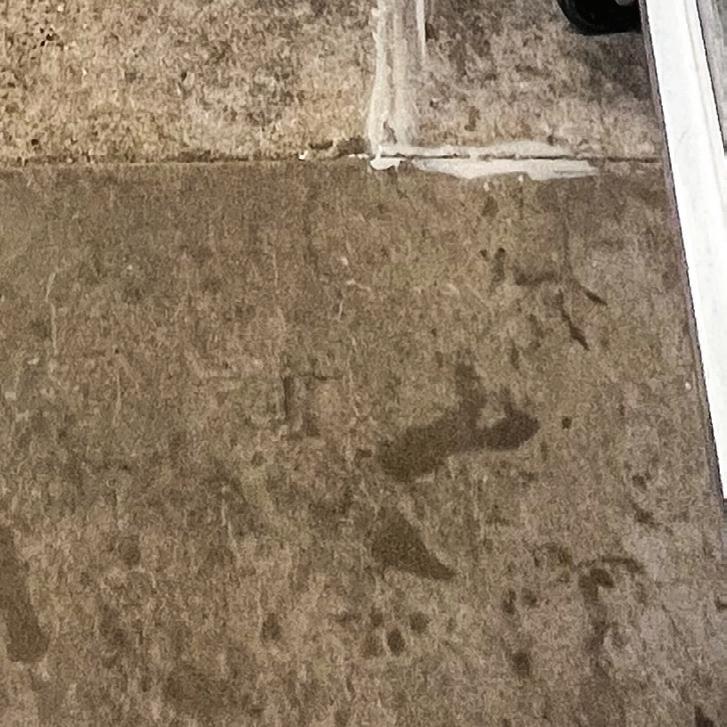
Farmer's Share events held at the Western Montana and Chouteau County fairs saw hundreds of people take advantage of learning about the Farmer's Share of the retail food dollar.
During the fairs, Montana Farmers Union partnered with local groups to offer menu items at the Farmer's Share price, which the USDA estimates at 14.3 cents on the dollar.
“The Farmer’s Share event was a great opportunity to connect with producers and consumers. We were able to talk about the Farmer’s Share of our retail food dollar, and how we can advocate for family farmers and ranchers," said Rachel Prevost, MFU's member services director.
"For the Hamburger, the Farmer’s Share was only sixty-five cents. That’s pretty shocking for everyone, producers and consumers alike, when you look at the breakdown. When we see high prices in the grocery store, that doesn’t mean farmers and ranchers are making more money in their pockets, and I think the Farmer’s Share information helps to make that point clear,” said Prevost. “I just urge people to shop locally as much as possible and join in with MFU to advocate for family farmers and ranchers to get more of the share in our retail food dollars.”
In Missoula, the FFA Food Truck featuring School House Meats offered tacos at 65 cents each, selling 500 tacos to people who used a voucher from MFU.
At the Chouteau County Fair, the 4-H Chuckwagon offered hamburgers at 65 cents each, selling nearly 170 during the event.
The events highlighted that producers receive only 14.3 cents of every food dollar consumers spend, according to the USDA. Off-farm costs, including marketing, processing, wholesaling, distribution and retailing, account for more than 80 cents of every food dollar spent in the United States.
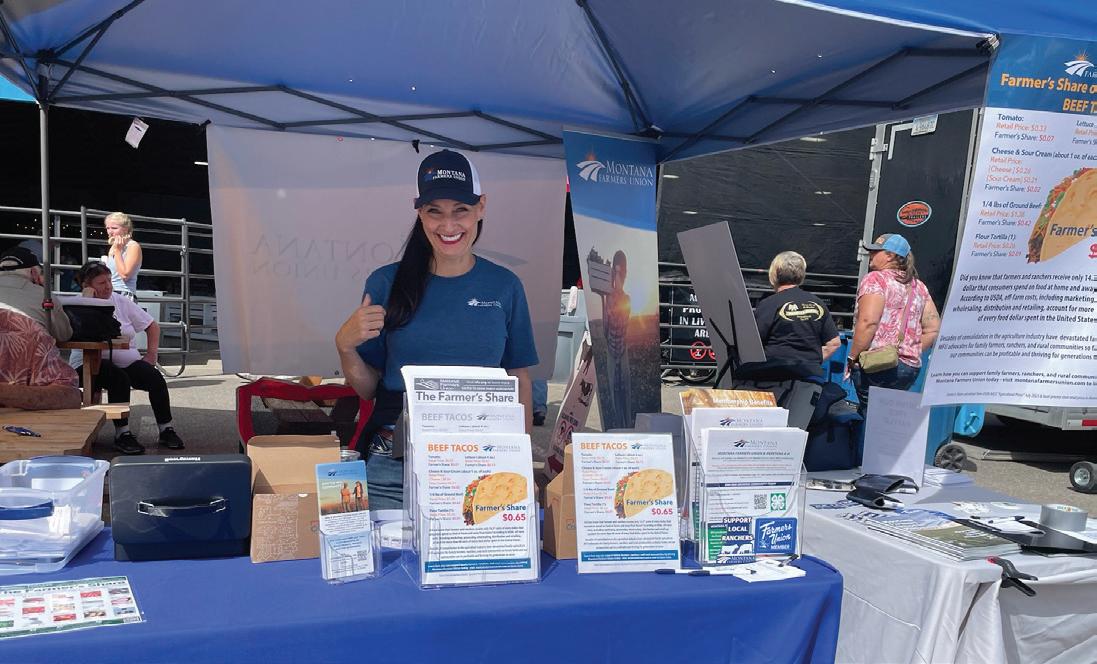
Learn more about the Farmer’s Share at nfu.org.
By MFU STAFFDecades of consolidation in the agriculture industry have devastated family agriculture. MFU advocates for family farmers, ranchers, and rural communities so family farms and our communities can be profitable and thrive for generations to come. Knowing the Farmer’s Share of our retail food dollar is an important educational piece of information for consumers and producers alike.
When seeing the Farmer’s Share, people often ask how to make shares fair for farmers. There are different avenues to support family farmers and ranchers so their share is more, including buying directly from farmers and ranchers. Another important piece is to join in advocating with Montana Farmers Union for Fairness for Farmers, with more competitive markets that will benefit producers and consumers.
Many of the people who stopped by to learn about the Farmer's Share and receive a taco voucher in Missoula were surprised by how little the Farmer's Share is, said Tom Andres, who heads up Missoula County Public Schools' agriculture programs.
"They didn’t think it was right other people were making a ton of money off the farmer who does most of the work,” Andres said.
The Farmer's Share was also well-received by students and parents working at the food truck that day.
“I think it was humbling, and it made them proud to be able to do something like that,” Andres said.
“Everybody likes farmers. They respect and appreciate the work farmers do, and a lot of people feel like maybe they don’t get the credit they deserve,” Andres added.
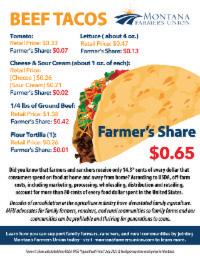
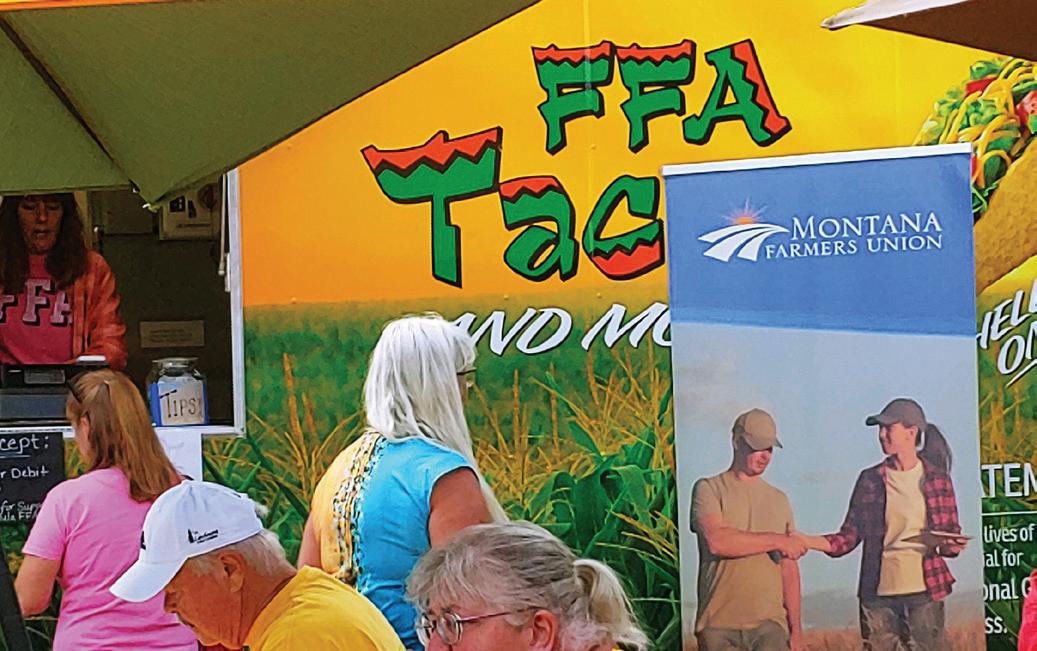
FFA, or Future Farmers of America, as it is commonly known, was founded in 1928 by a small contingency of farm boys from Virginia. It did not take long for the idea of their agriculture-based leadership organization to spread and by 1930 most states in the Union, including Montana, had formed local chapters and a state organization.
Fast forward 93 years and FFA is now present in all 50 states, the Virgin Islands and Puerto Rico. It is Montana’s largest school-based organization with over 6,600 members and 109 chapters. From Kalispell to Ekalaka and from Scobey to Lima, Montana communities big and small, rural and urban proudly boast an FFA chapter.
FFA is best defined through its mission: To make a positive difference in the lives of members by developing their potential for premier leadership, personal growth and career success through agriculture education. To accomplish that mission, FFA members stand by the motto: Learning to do, doing to learn, earning to live and living to serve.
Montana FFA members stand out among their peers because they are poised and articulate servant leaders with career-ready skills they have honed and mastered through an array of varied competitions we call Career Development Events, or CDEs. These CDE’s range from livestock judging to parliamentary procedure and from mechanics to prepared public speaking and everything in between. The hands-on experience FFA offers members gives them a leg up as they enter the workforce after high school.
FFA members are praised for having “it” — a special dash of charisma, respect and aptitude — gained through the act of representing something bigger than themselves. FFA’s iconic blue corduroy jacket lists a member’s name on the front with their state and chapter proudly displayed on the back. Wearing it puts members in a unique and humbling position. They are one of many and many that make one.
The Montana FFA Foundation supports these incredible student leaders by hosting leadership development opportunities and providing grants and scholarships directly to members. These efforts are made possible thanks entirely to the individuals, businesses and foundations who believe in the future of agriculture and partner with our Foundation.
The Montana FFA Foundation provides partnership opportunities that are vast and unique and investing with us is a wonderful way to magnify the impact of your
dollar. As a registered 501(c)3, donations made to the Montana FFA Foundation are entirely tax deductible. The Montana FFA Foundation accepts monetary gifts of any denomination to help support our grant and scholarship programs or leadership development events. We even have an endowment in place to compound the legacy of your donation.
Supporting Montana FFA does not necessarily have to look like a formal financial contribution either. Our leadership development events need volunteers to be successful and we graciously accept in-kind donations as well. The bottom line is, if you want to give back to Montana FFA, there is no limit to what you can do through a partnership with the Montana FFA Foundation.
If you are interested in learning more about the Montana FFA Foundation and our giving paths, we encourage you to visit our website: montanaffa.org and click on the “Foundation” tab. Or feel free to contact our staff directly. I can be reached at 406-925-0924. Our Director of Operations, Kelsey Proue, can be reached at 406-698-4963.
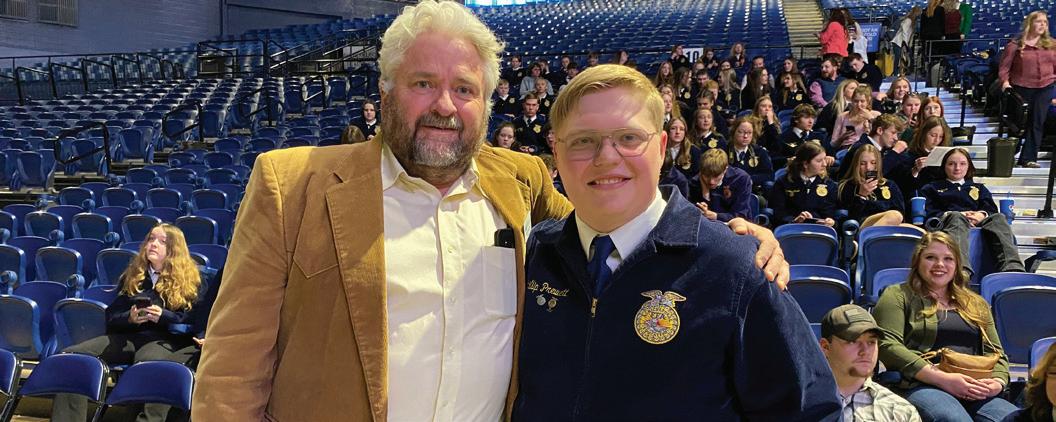
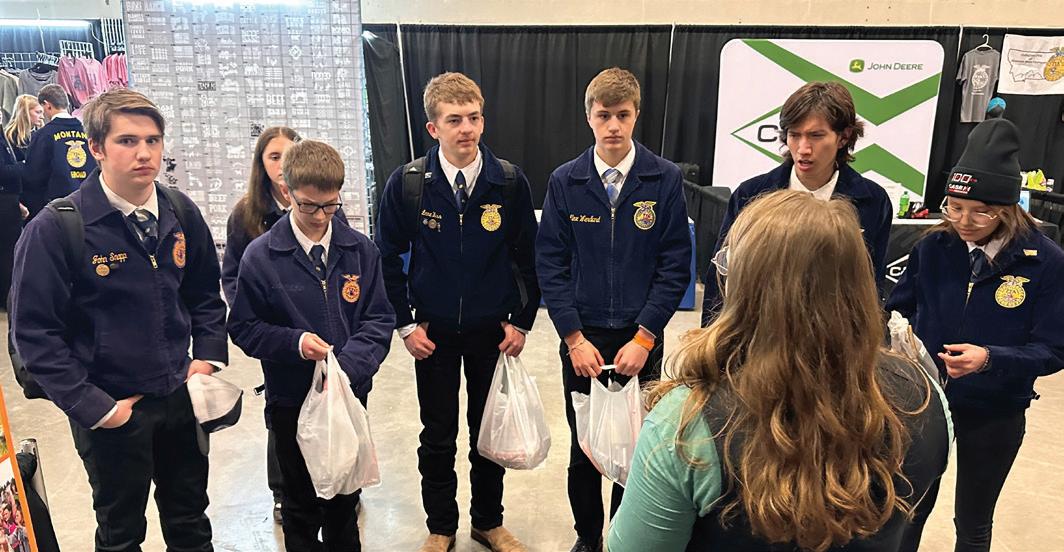




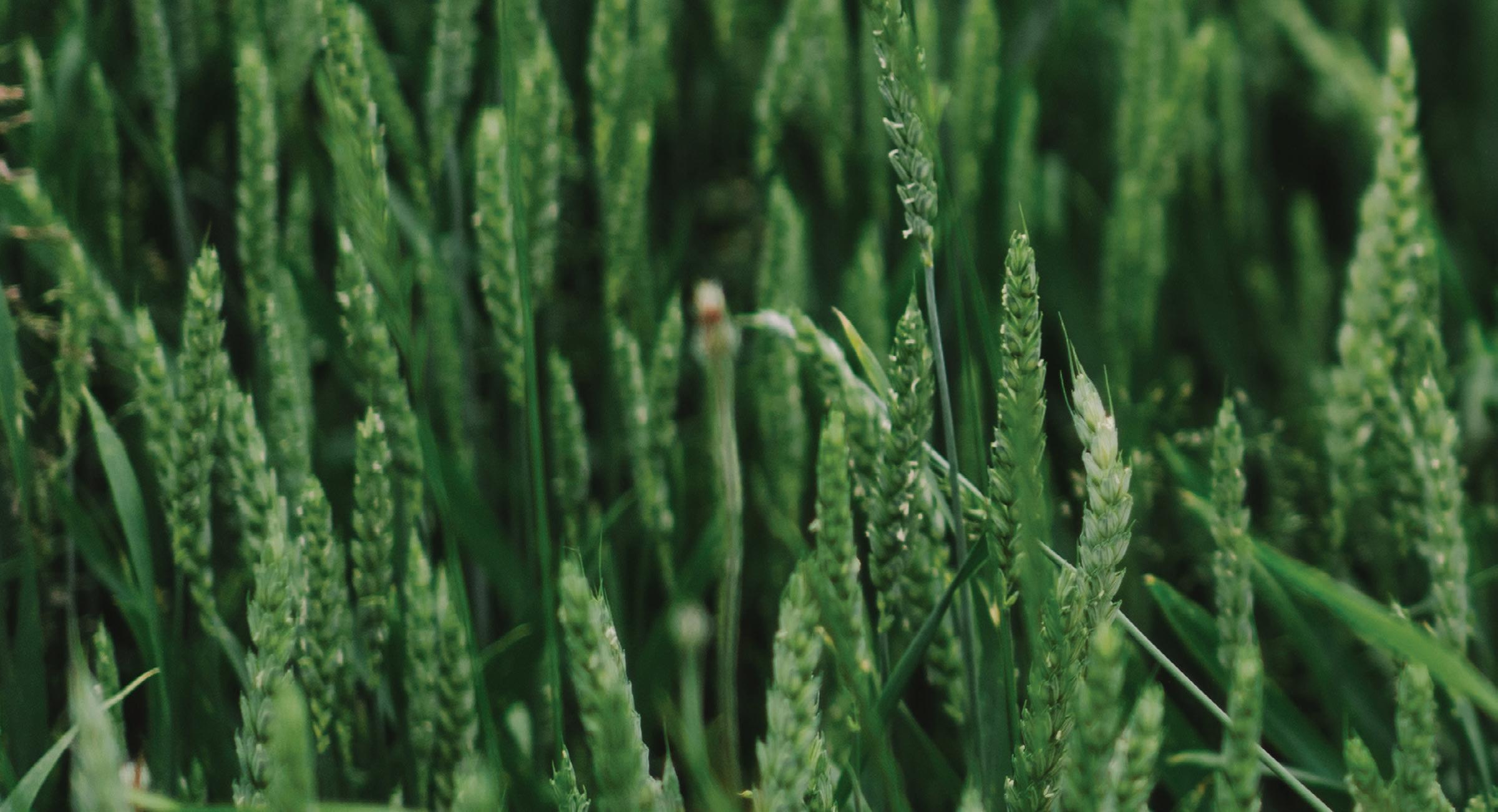

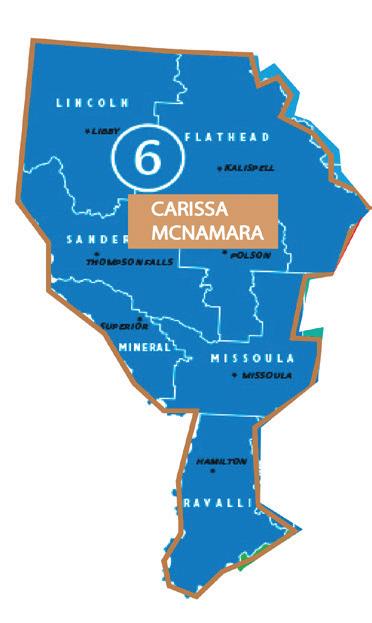
FLATHEAD -
“What does an MFU Ambassador do?”
Asked one of the old timers at the coffee shop. You know the table. The scrappy, weathered non-nine to fivers, that have carved a life out of being able to do most anything, consistently for decades; answering only to their own constitutions. Men who could be dropped into any geographic region and carve out a life … of purpose.
I am too flighty to ever take a seat at this table, even before being properly caffeinated; so I stand at the fringe and scuff the surface with the day’s worries: planting, centrifugal pump problems, drought, the cost of machinery, fuel, and rain when the hay is down. We remain mysteries to one another. They wonder why I am always in such a hurry, and I wonder how they can make 100-foot trees in the forest fall where they want with the angle of a single cut.
To best describe what an MFU ambassador does is to begin recognizing the ongoing seasons of MFU itself. By the time you read this, convention will be a week or so away, and the policy committee that guides the policy book, that guides us into the next year, will have been meeting since early September.
Convention is the corner post that for any new member or current member looking to engage can use to understand the value and answerability of this grassroots, membershipdriven organization. The policy committee is made up of MFU members that simply said yes to taking an essential seat.
MFU ambassadors plan events based on relevance and recommendations of members including: conferences, member gatherings, youth events, and booths. We look frequently to our membership for their creativity and regionspecific ideas.
Finally, when our membership cannot be in the room, MFU ambassadors are. We will be tracking bills, listening in on farm bill sessions, staying up to speed on farm to school and grant opportunities, working with the Department of Agriculture, the department of commerce and tourism, DNRC, NRCS, FADC, FSA, USDA, RDA, CFAC and more. We work diligently to help make sense and create access for our members for programs that may seem out of reach.
In short, MFU ambassadors work for you, the membership. The more information you can give us, the more effectively we can respond to each specific region and agricultural and rural concern.
Ambassador Carissa McNamara - Flathead

EASTERN MT -

This past summer I was busy at different county fairs in the South East area. I was very impressed by the participation in 4-H and FFA events, and I am thankful that there are so many supportive and active MSU Extension agents. Watching kids compete and show their animals made me reflect on what the world of agriculture will look like in 30 years, when technology, society, and the weather will inevitably be different from what it is today. How will our communities adapt and change, and who will be the leaders determining their success?
My work with Montana Farmers Union has tailored itself more and more to address that question. Working with Miles Community College, younger producers who are developing value-added products, kids at our day camp, and older couples who are navigating retirement and their operations, I have seen the different levels of community leadership.
Communication and open discussion are at the heart of it all — how else are producers able to voice their concerns and problem solve with each other? If there is no dialogue, there is no instruction, mentoring, or exploration.
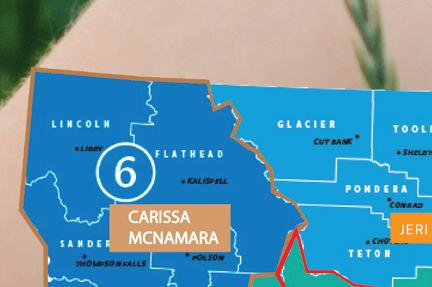
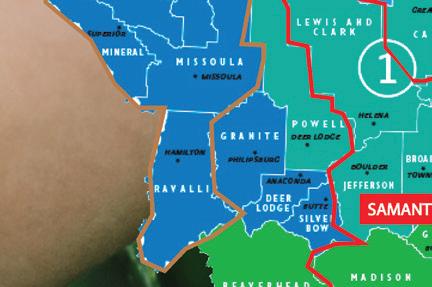
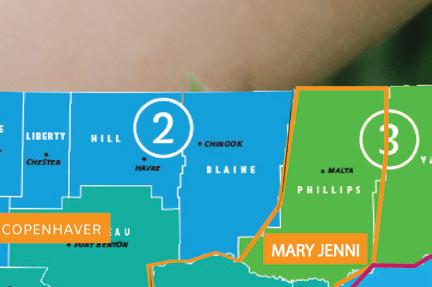


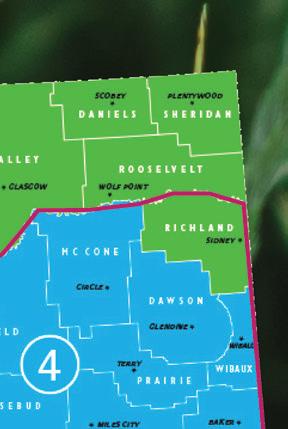
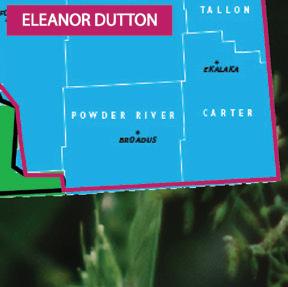
To be successful in agriculture, you need to adapt to the inevitable changes — ranging from market prices to the weather. In 30 years, kids who were showing their animals at the fair are going to be the producers who are caring for the livestock and land that we know today. How are the leaders of our communities and families today working toward making sure that those kids are prepared to be successful?
Montana Farmers Union understands that challenge, and my work is cut out for me. By facilitating and encouraging more communicative relationships between younger and older producers, and by educating kids about the importance of community cooperation, I am trying my best to not reinvent the wheel. Family and community values already run strong in Montana.
My goal is to help enable people, young and old, to access and channel that energy. The geography in South East Montana creates great distances between communities and families. Two hours of driving into town is worth it, because the people making the journey see the value in community. Leadership begins with communication, and that only happens when people value each other enough to listen to their problem, and act together. This Montana value is strong, but there is still much to be done to strengthen it!
Ambassador Eleanor Dutton - Eastern MT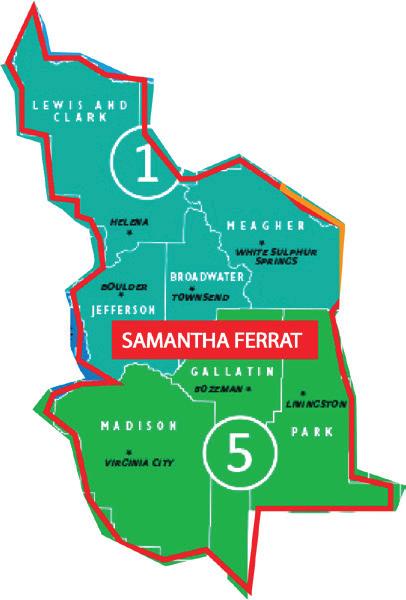
GALLATIN - Autumn is my favorite time and season of the year. On our ranch, the season brings new life as our cows begin calving in September. For many decades, my grandparents have grown an impeccable garden, now with help from my parents. Their prize vegetables are the cabbages they produce. They are harvested in early September then made into sauerkraut as our German ancestors did. It’s a whole family affair – four generations now gather for the cabbage shredding and then again for canning the sauerkraut in late fall. I hold this tradition close to my heart. I am steeped in tradition but at the same time willing and yearning to try new things, learn new things, honing skills needed for all aspects of ranching, and generally to make my best better. Creating our own traditions is important to me as well. The last three seasons I have helped friends on a neighboring ranch harvest apples from their heritage orchard. The tasty red-green apples are made into applesauce, pies, cakes, and crisps to share with my friends and extended family.
Holding on to some traditions while simultaneously embracing cutting-edge technology, research, and regenerative practices, and then sharing these experiences with others, will bring attention to the positives of being or becoming a farmer. What better way for people to create and establish their own traditions and be their version of a legacy than as a family farmer or rancher? We don’t have to, and maybe shouldn’t, always do things the same way the previous generation did or how our neighbors do. Be creative. Learn. Try something new. Fail. Grow. Succeed. Big or small, it’s still a win.
The agricultural communities need to help change the mindset that farming and ranching is low profits, long hours, high workload, and is generally not possible on our landscape. There is no denying that farming and ranching requires hard work, especially at certain times of the year and profitability currently wavers from year to year. However, let us examine and identify the reasons why we are farmers and ranchers. What are the positive aspects of family farming and ranching as a way of living, a livelihood? I believe every one of us has similar and simultaneously unique ideas which should be shared. In what ways can we agriculturists show and tell the next generation that farming and ranching is possible, profitable, necessary, and a truly gratifying way of life?
Ambassador Samantha Ferrat - GallatinYELLOWSTONE BIGHORN -Hey hey, everyone!

Summer is behind us and, man oh man, was everyone busy! Farm Bill updates, advocacy, the start of the Billings Food Service Coalition, summer county fairs, Crow Fair, and farmers markets have had such great turn out this year!
Moving into the autumn months, our farmers markets are going to start winding down and getting ready for next season’s work. There are still plenty of local businesses that support local family farms and ranches or are a local farmer/rancher themselves! We’ve been working with Abundant MT/AERO as they created this year’s Local Food Guide for folks wondering who is who and where they are. If you run into me or any MFU Ambassador in the field, we’ll connect you with your own copy showing all kinds of businesses and information that will be such a boon for both producer and consumer.

Our Ladies Who Ag events will start becoming our regular membership meetings again so please keep an eye out for postcards and website updates. All who are interested in farming, ranching, growing, producing and everything in between are more than welcome. Join us, bring a friend, and let’s talk about life in Ag, our counties and Montana!
As I go around and meet new folks and tell them about MFU, the usual answer is “Well, I’m not a farmer.” And my response every time is “Neither am I, but if you eat this work concerns you.” Just letting folks know that you don’t have to grow and raise food for it to have an impact on you, and the more we educate people around this and get them involved, the louder and more effective we will be in the goal of preserving Montana’s No. 1 industry and help local family farms and ranches fight the corporate monopolies trying to erase and take advantage of these same people.
Hopefully I run into some (or all) of you folks at both my local events and at MFU’s Annual Convention in Great Falls Oct. 2728. I’ll be there with tons of new info, and I’d love to hear what you’d like to see in our counties!
Ambassador Skylar Williams - Yellowstone Bighorn


CENTRAL MT - Can you image living even a week in the shoes of Phil Connors (played by Bill Murray) in the 1993 movie Groundhog Day where life becomes boring and pointless as Phil loops through Feb. 2 multiple times, and what would a person become if they were incapable of substantial change? My answer to that is, “No thank you, because I love change.” Change is exciting. It keeps life entertaining. One of our oldest industries, agriculture, is constantly changing. I want to share the changes I have been listening to and seeing this summer.
An exciting change for me over the summer was a regional expansion. The counties in my area now include Musselshell, Golden Valley, Wheatland, Judith Basin, Fergus, Petroleum, Blaine, Phillips, Valley, Daniels, Roosevelt, and Sheridan. It is thrilling for me to meet the members and develop relationships in seven additional counties.
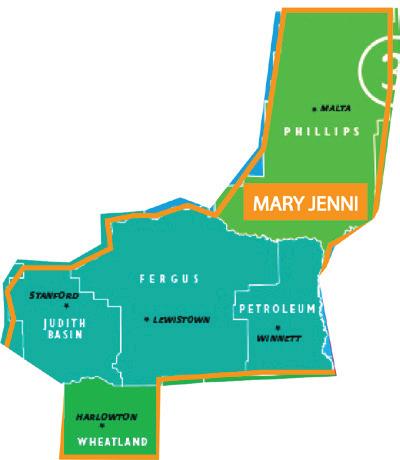
The MFU pillar, Education, is my passion. I want to help college bound students earn MFU scholarships, encourage members to apply to the Farmers Union Enterprise Leadership program, have fun with the kiddos at Day Camps, and create informative, creative agriculture events for members and the public.
Education is essential to change. In June, the MFU Book Club read “For the Love of Soil” by Nicole Masters. This was an education. Nicole’s book reminded me of a science book from college in the amount of knowledge I gained. Soil certainly is not a new topic for most, but it opened my eyes to a new way of thinking about dirt ... oops, I mean soil. With soil health on my mind, that is all I heard in conversation throughout the summer which developed into conversations of regenerative agriculture.
Like soil health, regenerative agriculture is not a new idea. Rather, I see a movement in this style of agriculture that is dawning. In September I sat amongst 75 producers at an educational seminar discussing regenerative ranching. Two Montana families talked intimately about their succession from the older generation to the current generation and how their operation transitioned to regenerative practices. I listened to their entertaining yet heartfelt stories about the substantial amount of change their operations faced, which led to success in each ranch.
What changes do I have in store? As I depart seminars, book club gatherings, or over windshield time to Sheridan County, I have been mapping out a permaculture fruit orchard and dreaming of a chicken coop. What change do you have in mind? How can MFU assist? As your Ambassador, I am here to help. Let’s make change together.
Ambassador Mary Jenni - Central MT

GOLDEN TRIANGLE -Montana Farmers Union has been an instrumental part of the opportunities I have received in life. My mother is the biggest reason I am involved in Farmers Union. She attended the Women’s Conference in 2016. She decided that I would attend the summer camp at Arrowpeak Lodge with MFU that year no matter how much I protested. That camp was the best thing that could have happened to me and unlocked many doors for me. I attended camp for two years before I aged out. That following spring, Violet Miller (Green) invited me to be a camp counselor, and I jumped on the opportunity. That next year, at the State Convention, I was nominated to be a delegate for the National Convention.
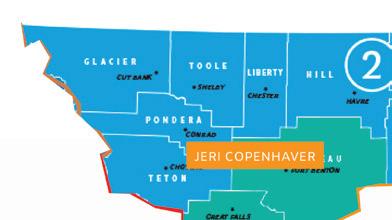


Boy, was I nervous. On the first day of the national convention in Seattle, I noticed some language in the national book that directly contradicted what our state policy book said, so I went up to board member Will Downs and asked him if that was something that I should talk about. So he and Jan Tusick led me through how I address the chair and even speak on something like that. After that, I was hooked on policy. I was asked to be on the policy committee for our state the next year and thoroughly enjoyed that and had the opportunity to be a delegate once again. Little did we know the world would shut down a week after that convention. The world even changed for my family that year. My dad grew up on a farm and worked his entire life in a town job to get back to the farm. We expanded our operation in 2020 and got into the cattle business. This spring, I decided to apply for the youth camp coordinator position on a whim and, thankfully, was able to continue my journey with Montana Farmers Union and have received the fantastic opportunity to take on the role of a membership ambassador for the Golden Triangle region, as well as event coordinating. My main passion is for beginning/young farmers and ranchers. Getting the next generation of agriculture involved is crucial to continue the relevancy as opposing factors continue to impact agriculture.
I look forward to continuing to help our agriculture communities and get more members involved in what Farmers Union can do for them.



 By MFU STAFF
By MFU STAFF
When Montana Farmers Union members gather Oct. 27-28 in Great Falls for the Annual Convention, they will reconnect, learn, set policy and more.
Interactive breakout sessions will keep attendees engaged throughout the convention, and members also will enjoy live music by the Lucky Valentines.
Friday night, members will hear from Sarah Vogel, the first woman elected a state commissioner of agriculture in the country and an American Agricultural Law Association’s Distinguished Service Award recipient. She also is the recipient of NFU’s Meritorious Service Award, the organization’s highest honor.
Her book, “The Farmer’s Lawyer,” is the remarkable story of a young lawyer's impossible legal battle to stop the federal government from foreclosing on thousands of family farmers. Earlier this year, MFU Book Club members read and later discussed her book during a live Q&A with Vogel herself.
Now, one lucky member will win a free copy of the latest edition, featuring a new foreword by Willie Nelson. Simply find the image of the book cover for “The Farmer’s Lawyer” in this magazine and email mfu@montanafarmersunion.com with the page number on which you found it for a chance to win. The winner will be announced during Convention.
Several leadership positions also are up for election during convention, with Walter Schweitzer running for re-election to the two-year president post, Brett Daily running for reelection for a three-year term representing District 4 on the board, and Jeff Bangs also running for re-election to a threeyear term in the At-large District 1&2 board seat. Trent Stoltz is running for a first term to a three-year District 5 seat. Paul Neubauer has entered the election for Conductor and John Wicks has put his name in the hat for Doorkeeper.
The majority of voting takes place in-person during convention, but if you requested a mail-in ballot, you must return it postmarked at least seven days prior to the convention or personally deliver it no later than the time for in-person voting during the event.
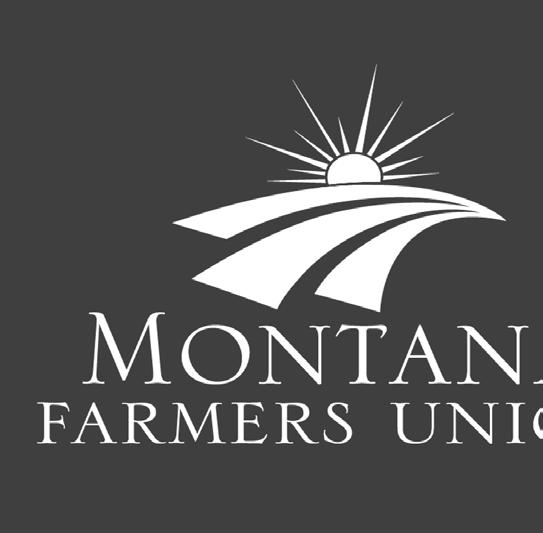

Members also will debate and finalize policy to guide the organization in the upcoming year.
Resolution Committee members already have been hard at work reviewing current policy for any changes or additions. Their digital meetings have been open to members for comment, and members can again contribute input during the committee’s in-person meeting from 10 a.m. to 5 p.m., Thursday, Oct. 26, at the Heritage Inn.
A kids day camp also will be available during Convention. Children 12 and younger can attend Convention for free. A fun, educational Day Camp is provided for children those ages at no cost both days from 8 a.m. to 4:30 p.m. Please register each child when you register.
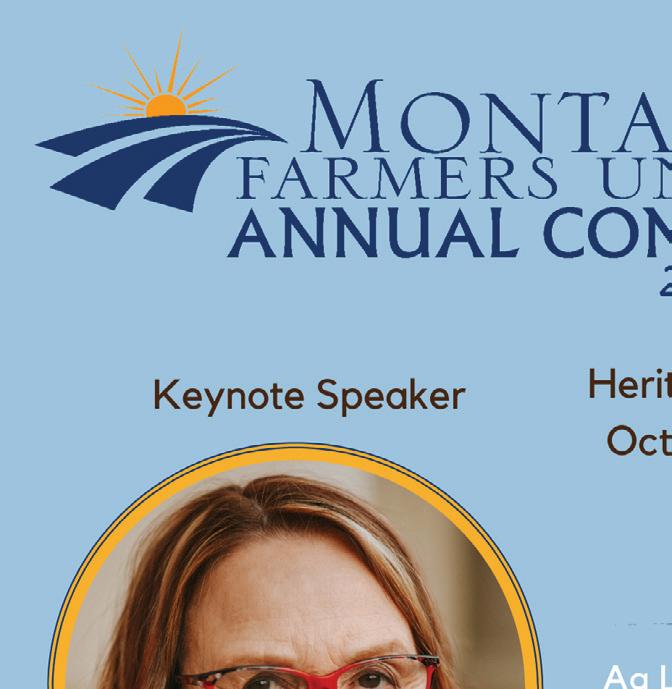




Both Holly and Trent Stoltz of Stoltz Ranch, Inc., in Pompeys Pillar, grew up in agriculture on family operations and were active in 4-H, with Holly later working with ag businesses with her Pony Expressions screen printing and embroidery business in Valier. She also was a crop consultant for several years before joining Western Sustainability Exchange, a non-profit that works with ranchers to improve their grazing, develop market opportunities and create a peer network. Trent and Holly raised their three boys on the fourth-generation family farm and ranch in Valier before relocating in 2022 to Pompeys Pillar, where they raise cow/calf pairs, yearlings and hay. Trent’s parents and grandparents, as well as his aunt, were lifelong MFU members, with Trent and Holly re-enrolling as members in 2022 and immediately becoming involved.
When/why did you start using virtual fencing?
After listening to a Western Sustainability Exchange “Bull Session” in 2021 featuring the creator of Vence and Leo Barthlemess, a Malta rancher who was trialing the collars at the time, we knew we wanted to try the new technology eventually. Cost was an issue, so we applied to the World Wildlife Fund’s RSVP program (Ranch Systems & Viability Planning) to help defray the cost. After being accepted into their program, we ordered 300 collars and one tower. We wanted to improve our grazing but knew putting up temporary fencing every three days or so would go by the wayside behind haying, water systems, reseeding hay fields, and learning our new ranches. The collars would allow us to decrease our pasture sizes without having to fence and allow us to rest more pastures.
Talk a little about how you use it.
We ran 250-300 yearlings throughout the summer on 100-acre pastures for 7-10 days, depending on the amount of grass. Because we had good precipitation this year and tightened our grazing, we were able to rest almost half of our summer pasture. For instance, in a 640 acre pasture, we split it seven times (roughly 100 +/- acres) This pasture under continuous grazing would have lasted less than a month. Splitting it this way we were able to graze it for 61 days, and it will now be rested for over 365 days (going back next year in August).
What questions did you have to answer before you decided it would be worth using?
Could we justify the cost? Could we improve our pastures enough to eventually see results in hopes of increasing our carrying capacity? Would they allow us to graze areas that are normally undesirable (hills tops, sidehills, etc.)? Can we utilize the collars to improve our pastures without jeopardizing our yearling weights?
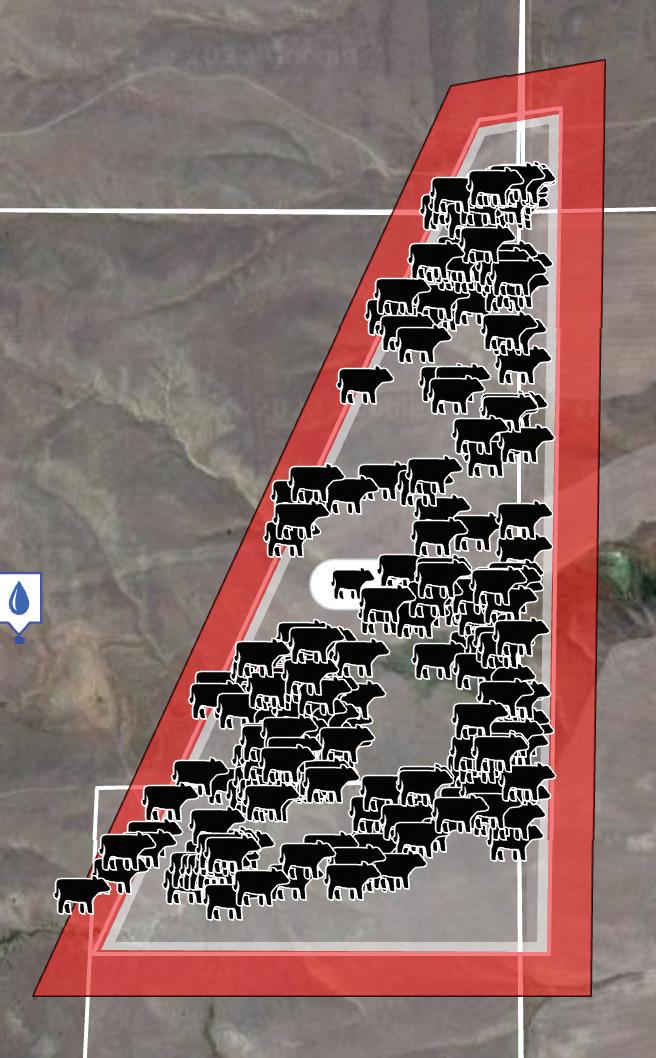
What lessons have you learned since beginning to use virtual fencing? What tech challenges did you have to overcome?
You must plan your pasture moves ahead of time - it takes the towers up to 12 hours to fully communicate with the collars. There were several days when we wanted to move them because of water issues or felt we had grazed the grass enough (leave half, graze half), and we ran into issues with either the fence not being off when we moved them or the new pasture not turning on. You find out pretty fast when the fence is still on. As you move the cattle, they will hit the boundary and you will hear the collars beeping. All the pastures are built on a computer program where you can track animals, add landmarks (water, permanent fence, etc.), find collars if the animal loses them, and download reports.


are the benefits of using virtual fencing?
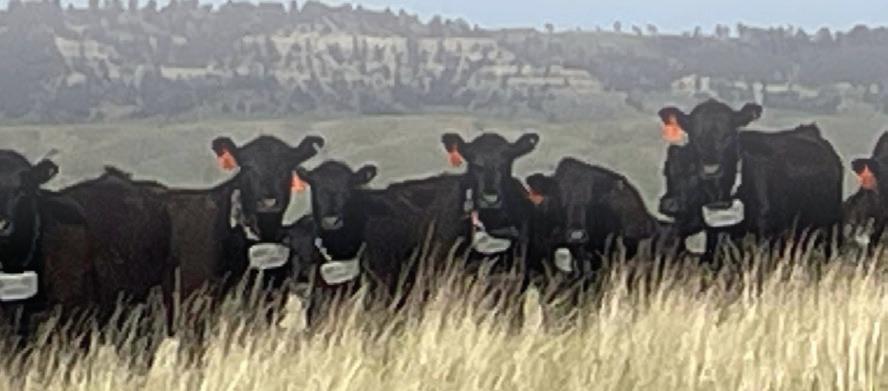

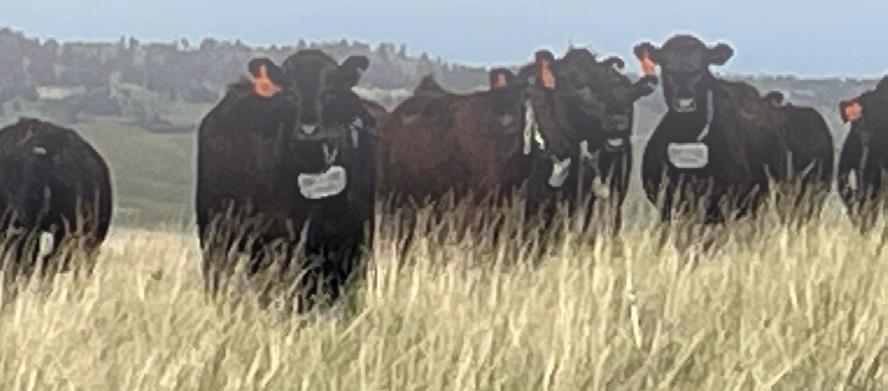

There’s no need to add temporary fences, which means less labor, you can track your animals (if a collar hasn’t moved for a while, you can check and make sure she’s alright), graze more efficiently, and rest more pastures, which will improve your grass and eventually increase your carrying capacity.

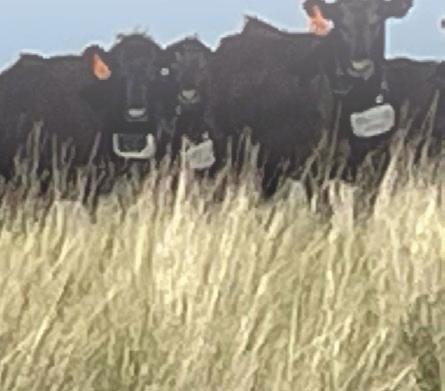




The Farm Bill is a comprehensive package of legislation passed once every five years that has a direct impact on agriculture, food systems, and consumers. It covers programs ranging from crop insurance for farmers to healthy food access for low-income families. 1.7% of the federal budget goes to the farm bill, and 82% of that goes to the nutrition title.



The farm bill is not only an agriculture bill – it is also a food bill. The farm bill nutrition title is key to reducing hunger and poverty in our country. A major portion of the nutrition title funds SNAP, or the Supplemental Nutrition Assistance Program, once known as food stamps. For decades, SNAP has served as the nation’s primary food safety net, allowing families to meet their most basic needs when they face difficult economic circumstances.
Food and farm programs go hand-in-hand, so we think they should continue to be included in the same comprehensive legislation, and MFU members have been in D.C. actively lobbying to keep both food and farm programs in the farm bill. We reject any proposed cuts to critical food and nutrition safety net programs in the farm bill that help feed hungry Americans. We support food and nutrition security, reducing hunger in our communities, and expanding access to local and regional farm products.



supplemental-nutrition-assistance-program-snap/ positive-effect-snap-benefits-participants-communities] Households receive SNAP benefits on electronic benefit transfer cards, which can be used only to purchase food at one of about 800 authorized retail locations in Montana.
While the SNAP program is strong, some elements of its program design make it less effective in combatting food hardship than it could be.
H.R. 1510/ S.2435, the Improving Access to Nutrition Act by Reps. Lee (D-CA) and Adams (D-NC), and Sen. Welch (D-VT) and Sen. Gillibrand (D-NY) would end the three month time limit that restricts benefits for adults who are looking for work, veterans, youth aging out of foster care, individuals reentering the workforce after incarceration and those with underlying mental and physical health problems. Research has shown that the time limit does not lead to a meaningful increase in employment, but it does substantially reduce SNAP participation.


Much of SNAP’s success is due to its structure: It is designed so that everyone who is eligible can get benefits; it expands automatically to meet needs during tough times; and it focuses its benefits to the households with the least resources available to purchase groceries, assisting families with low incomes to obtain adequate nutrition, regardless of where they live.

Almost 90,000 Montanans participate in SNAP, more than 66% of which are families with children, and 35% of which are households with elderly or disabled residents. Most SNAP participants in Montana have incomes below the poverty line. The average Montana SNAP household is estimated to receive $361 per month in 2023. Seniors can receive SNAP benefits and still receive senior commodities and Meals-on-Wheels.
Montanans can urge their Montana’s Members of Congress to support legislation that strengthens and protects SNAP. Action on the House and Senate Farm bills was expected to heat up in the Ag committees when Congress returns in September.


None of Montana’s Members of Congress have co-sponsored this bill, and they should. As their constituents, it’s your job to tell them what you want them to do, so give them a call today! Call the Capitol Switchboard and leave a message for senators Daines and Tester, and representatives Rosendale and Zinke, saying that you want them to co-sponsor the Improving Access to Nutrition Act.

The U.S. Department of Agriculture estimates that in a weak economy, $1 in SNAP benefits generates $1.50 in economic activity. [https://frac.org/programs/


The Capitol Hill Switchboard number is (202) 2243121. Simply call the number, give the operator your zip code, and you’ll be connected to your Member’s office. Tell them that HR 1510/S. 2435 is good for Montana, and you hope they’ll co-sponsor those bills to give your neighbors and friends who rely on SNAP the opportunity to move out of poverty.


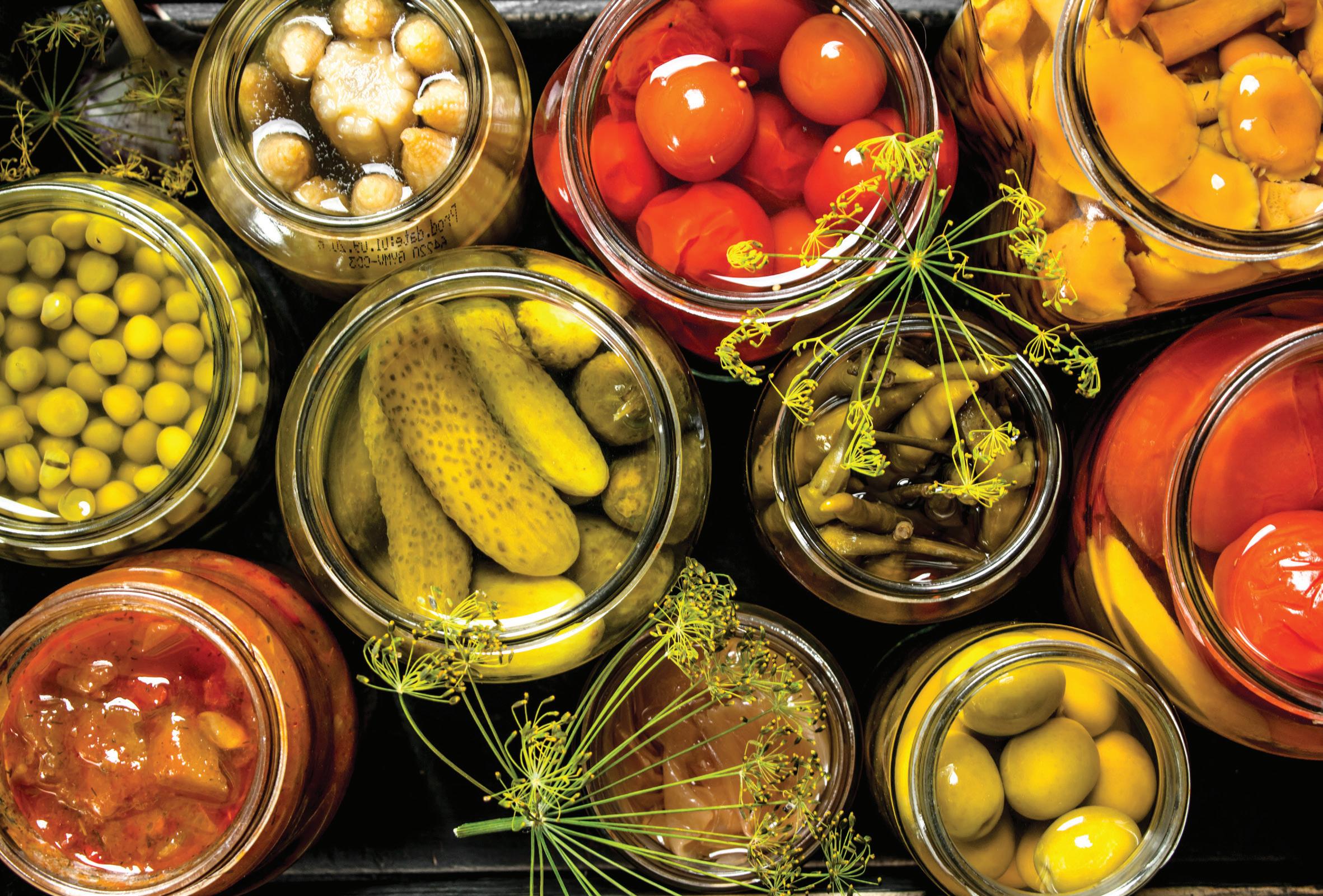





Montana State University-Bozeman
Hill County MSU Extension




The bounty of Fall is something all gardeners and community members look forward to as they walk through the Farmers Market each week. For some choosing produce is easy, and they know exactly what to do with it. For others, they are excited by the way the produce looks and dream of the wonderful things they can preserve and use in the winter months but have no idea where to start.
If you are apprehensive about what to do with your garden or farmers market produce to preserve it for later use, have no fear, preservation does not have to be a complicated or long process. A few simple steps can give you the opportunity to use produce throughout the winter months.
While canning is one of the most talked about forms of preservation, you can also freeze or dry produce to extend its shelf life. Yes, you can freeze instead of can! Important things to consider when planning to preserve at home are the type of equipment you have or will need, preparation time, processing time, and serving convenience. Freezing is one of the simplest forms of preservation and can be done with simple equipment and storage items that are relatively inexpensive. Canning and drying requires more specialized equipment along with space to store it when not in use. When deciding whether to can, freeze or dry your produce you will need to consider how you will store the preserved food. Canning and drying requires shelf or cabinet space; freezing requires freezer space.
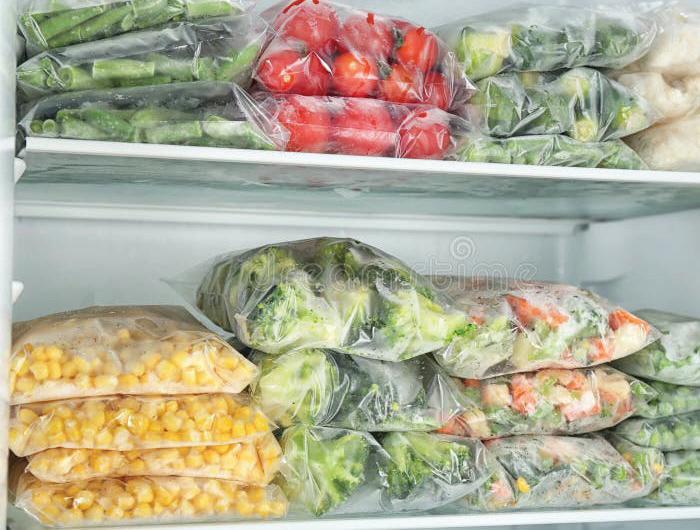
Canned food items will last up to a year, dried foods can last anywhere from four months to a year, depending on the food, while frozen foods can last up to six months in the freezer when stored properly. Knowing how much space you have available to store items is just as important as knowing what produce is in season.

Knowing what is in season is important when purchasing fresh fruit and vegetables to ensure the freshest possible selection for color, texture, and taste. September through November is the best time to purchase apples, beets, broccoli and cauliflower, carrots, cabbage, cantaloupe, chard, cherries, raspberries, strawberries, corn, garlic, green beans, herbs, kale, leeks, lettuce, onions, peas, pears, peppers, potatoes, summer squash, tomatoes, and winter squash. The amount you buy will depend on your family size and storage space.
You should only purchase the amount of produce you will use within recommended usage times based on preservation method and space. (Check out the following article for useful tips: https:// www.canr.msu.edu/uploads/236/59252/How_Much_Should_I_ Buy.pdf.)
After determining the quantity of produce, choose your method of preservation and get to it!
Start your preserving process by washing your produce with water that is slightly warmer than the item you are washing. Then prepare your produce for your preferred method of preservation. Freezing is the simplest form of preservation and yields the highest nutrient content.
To help you decide the best method of preservation for you and your family, refer to the Montana State University website on food and nutrition at www.montana.edu/extension/nutrition/food-safety-preservation/index/html or check out Mont Guides on food preservation topics at https://store.msuextension.org/Departments/MontGuides-by-Category.aspx.
















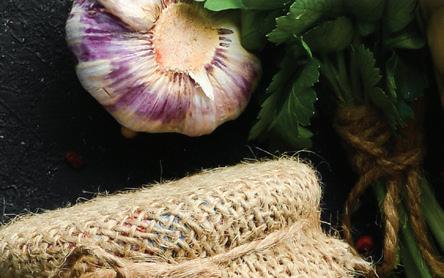
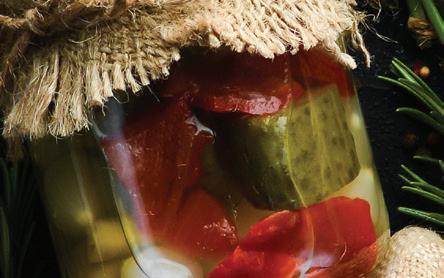
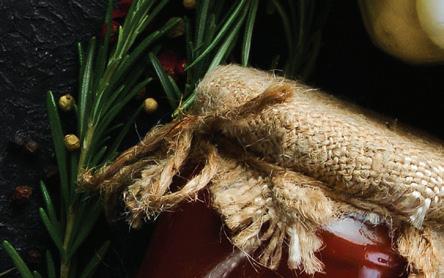
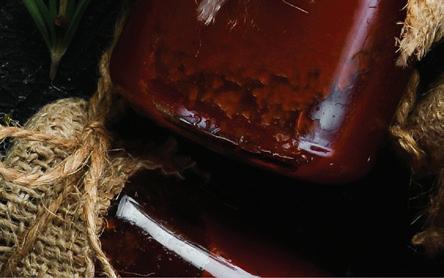

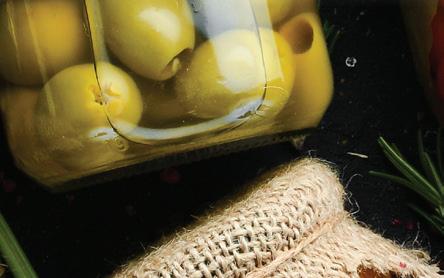
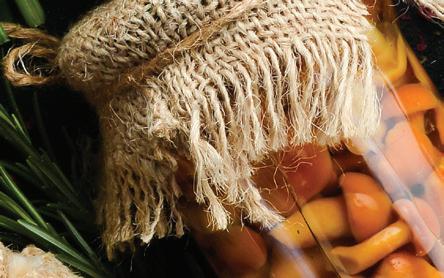
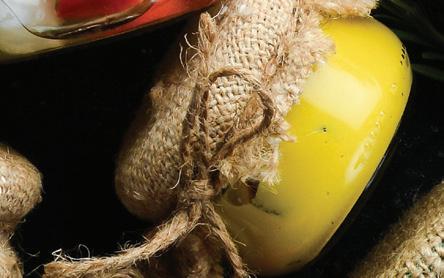

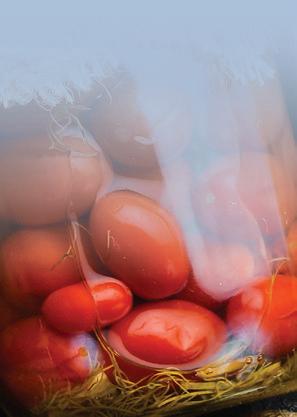
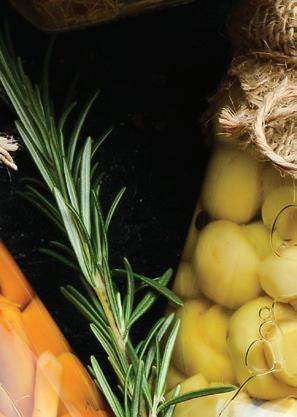

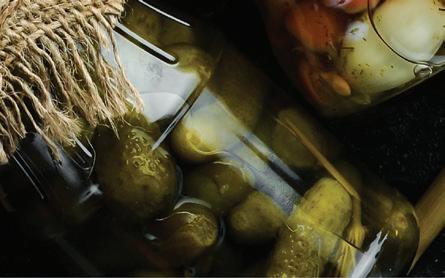


Montana is known for its family farms and ranches and the rural communities where they live. Those rural communities are full of big hearts, dedicated to creating and sustaining thriving places for people to enjoy generations to come.
Montana Farmers Union and Reimaging Rural are two groups working alongside those rural residents. MFU works tirelessly through education, legislation and cooperation to ensure rural communities are here for the next generation, while Reimaging Rural (through Montana State University Extension) works to inspire and motivate volunteers in rural communities.
Learn more about Reimagining Rural and how to get involved at www.montana.edu/extension/communitydevelopment/ reimagine-rural.html, or join MFU today at www. montanafarmersunion.com.
Colorful murals have been grabbing attention around Montana in recent months.
“People like them because they are beautiful, and they transform a previously empty or neglected wall,” said Tara Mastel, Associate Specialist for Community Development with Montana State University Extension who works with Reimagining Rural.
“The process of getting a mural to fruition brings people together to decide on the place, select the artist, raise the money, and to physically make the mural happen. All of these steps serve to build excitement that something positive is happening. We hope that these ‘small wins’ build momentum in a community, as well as confidence that good things can happen here. Momentum and confidence often lead to even bigger successes in a community,” Mastel added.
One such mural, painted by Glasgow artist Cathryn McIntyre, is on the side of Malta’s Villa Theatre.
Community members and local businesses, along with Reimagining Rural and the Phillips County Community Foundation, made the community beautification project happen, awarding grants and donating time and supplies to the project, as well as offering passing honks of encouragement, theater owner Kari Rae Miller said.
“The community has been nothing short of supportive,” Miller said.
Too often the towns that dot Montana’s northern tier are blown past, but the mural makes people stop and take photos and enjoy being in Malta.
“I think it’s added some character to the town. I think it’s really easy to go through these towns without really noticing much and (the mural) draws your eyes, it draws your curiosity,” Miller said.
The mural itself is beautifully detailed and realistic, and Miller said she looks at it every time she drives by.
“It’s fun to see how much of the detail you can see when you drive by,” Miller said.
Area residents also enjoy the mural, and some even participated in painting parts of it.
“It really brings in the sense of being proud of something,” Miller said, adding she hopes travelers and community members alike enjoy the mural for decades to come.
Learn more about the artist and view timelapse videos of the project by scanning the QR code below.




Name of Business:
Web Page Address:
Email:
Owner/Manager:
Address:
Phone Number:
Signature: Date:


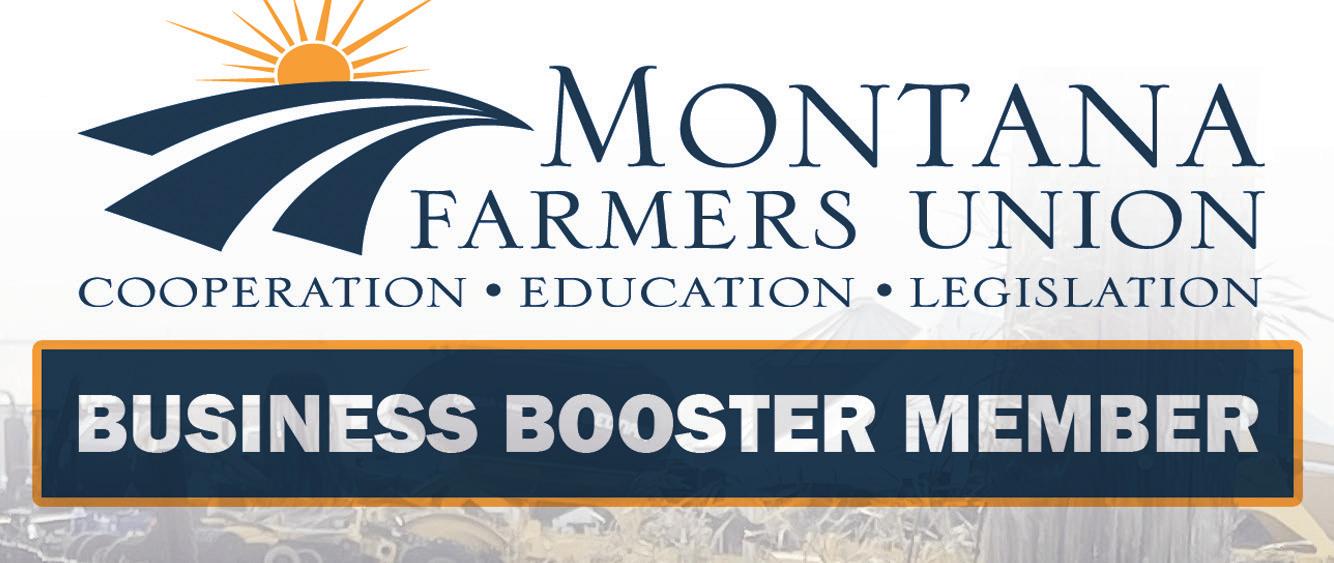



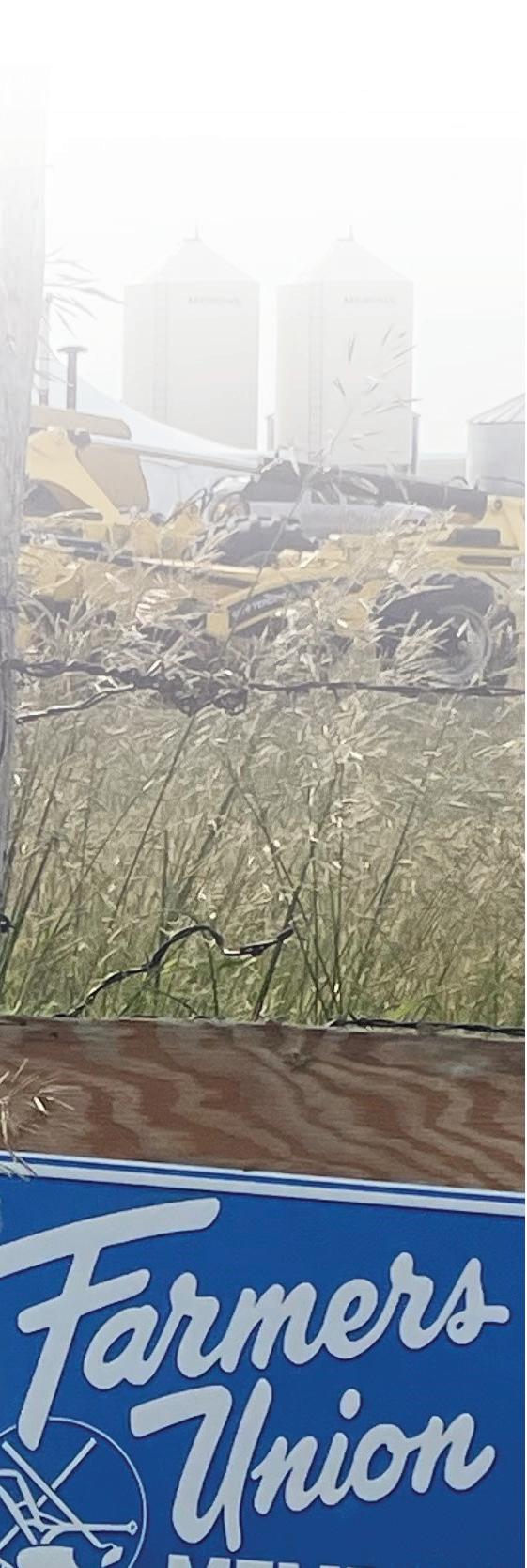


 Jon Tester, U.S. Senator
Jon Tester, U.S. Senator
As harvests come to a close, I’m grateful for this year’s better yields and more normal crops.
After back-to-back years of devastating drought in the Treasure State, we were overdue for some good moisture, and mother nature delivered.
Montana is a big state, some folks got abundant moisture while others weren’t quite as fortunate, but that’s why my work in Congress to keep family farms and ranches strong never stops.
This year some folks had entire crops wiped out by flood, and some folks weren’t able to raise much because of drought.
For those affected by flood and drought, there are programs available to help make ends meet, and I encourage you to reach out to your local USDA offices for assistance.
Certainty is important in business, and for irrigated farms, water certainty is the difference between success and failure. This past summer I worked to help provide that certainty by delivering on water infrastructure upgrades that will help farmers and ranchers for the long haul.
Through my Bipartisan Infrastructure Law, water infrastructure projects across the state are receiving dollars to implement water conservation and efficiency programs through the Bureau of Reclamation so that we can better plan for the future.
These funds will be used for things like stream monitoring and gate control in places like the East Bench Irrigation District and structure replacement on the Lower Yellowstone Irrigation Project to help conserve water for peak irrigation demand.
But that’s not all – because of additional funding we secured for rural water systems, later this fall we’ll be turning on phase I of the Musselshell Judith Rural Water System,
helping to ensure that rural agricultural communities in central Montana can count on their water infrastructure for generations to come.
My bipartisan infrastructure bill also provides nearly $100 million to rehabilitate the Milk River Project. This investment repairs the St. Mary’s Diversion Dam, and will help guarantee clean, reliable water for farmers, ranchers, and rural communities across the Hi-Line for generations.
These projects will help give farmers, ranchers and communities across Montana the certainty they need, and ensure that all water users in the region have the resources they need to survive.
Security has always been my number one issue – whether it’s food security or national security. So after hearing directly from Montana producers about the Chinese Communist Party potentially purchasing farmland in the Treasure State, I teamed up with my Republican colleague Senator Mike Rounds of South Dakota to introduce legislation to ban foreign adversaries from leasing, buying, or otherwise acquiring our farmland or agribusinesses.
Every farmer knows that food security is national security, and just last month we successfully added my bill to the must-pass National Defense Authorization Act – helping to protect our food supply for generations to come.
If you control food, you can control people – and we can’t have governments like China, Russia, Iran, and North Korea anywhere near our food supply.
Montana’s farmers feed the world and keep America strong – and because of your feedback during my farm bill listening sessions, you’re now helping to make our country safer.
There’s plenty more work to be done in Washington, but with the help of Montana Farmers Union members, I’m confident that we’ll continue to pass bills that keep family farm agriculture strong in the Treasure State.

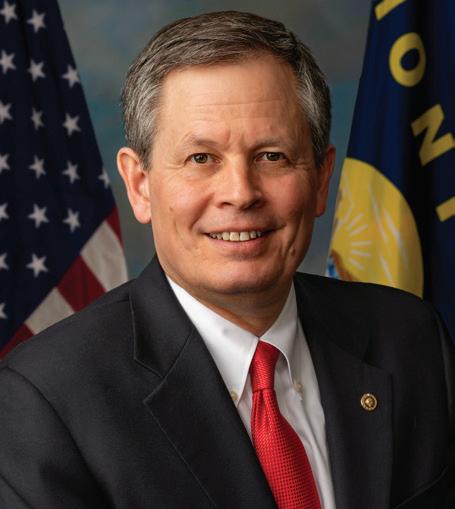
As summer comes to an end, ag producers across Montana remain busy and optimistic as harvest is in full swing. Men, women and families across the Treasure State are putting in long days and nights atop combines (both red and green), working to deliver nutritious food from their farms to our tables. As you continue to work tirelessly to feed people around the world, I continue to listen to ag producers so I can take their ideas and concerns back to our nation’s capital.
Cow-calf producers expect to see high returns for calves this year, and the USDA’s 2023 land value report shows substantial increases in ag real estate, cropland and pastureland values. Between ever-fluctuating market values across the board and soaring inflationary costs, I am glad to see Montanans getting a decent return for the blood, sweat and tears deposited daily to maintain their livelihood, because few people have greater respect for the land we call home than our ag producers.
I am proud to share that the recent passage of the National Defense Authorization Act will not only help bolster Americans’ safety and provide historic wage increases for troops and their families, but it also includes my Promoting Agriculture Safeguards and Security Act, which will help protect ag land on American soil by restricting foreign adversaries from ownership. With foreign investment in American ag assets on the rise, we must protect our critical infrastructure and ensure ag supply chains remain in the hands of Montanans and not our adversaries.
Additionally, I recently helped introduce the “Allowing for Recreational Resources for Outdoor Wellness (ARROW) Act” to stop the Biden administration from blocking funds for Montana hunting and archery programs in schools. Hunting and harvesting wild game is an integral piece of our Montana way of life, and I will stand up to anyone who threatens to get in the way.
I look forward to continuing to hear from you all as we work together to protect Montana ag, support Montana farmers and ranchers and ensure Montana’s voice is heard loud and clear in the U.S. Senate.

Scan the QR code to learn more about what is going on at the National level in policy and procedure!

 Steve Daines, U.S. Senator
Steve Daines, U.S. Senator

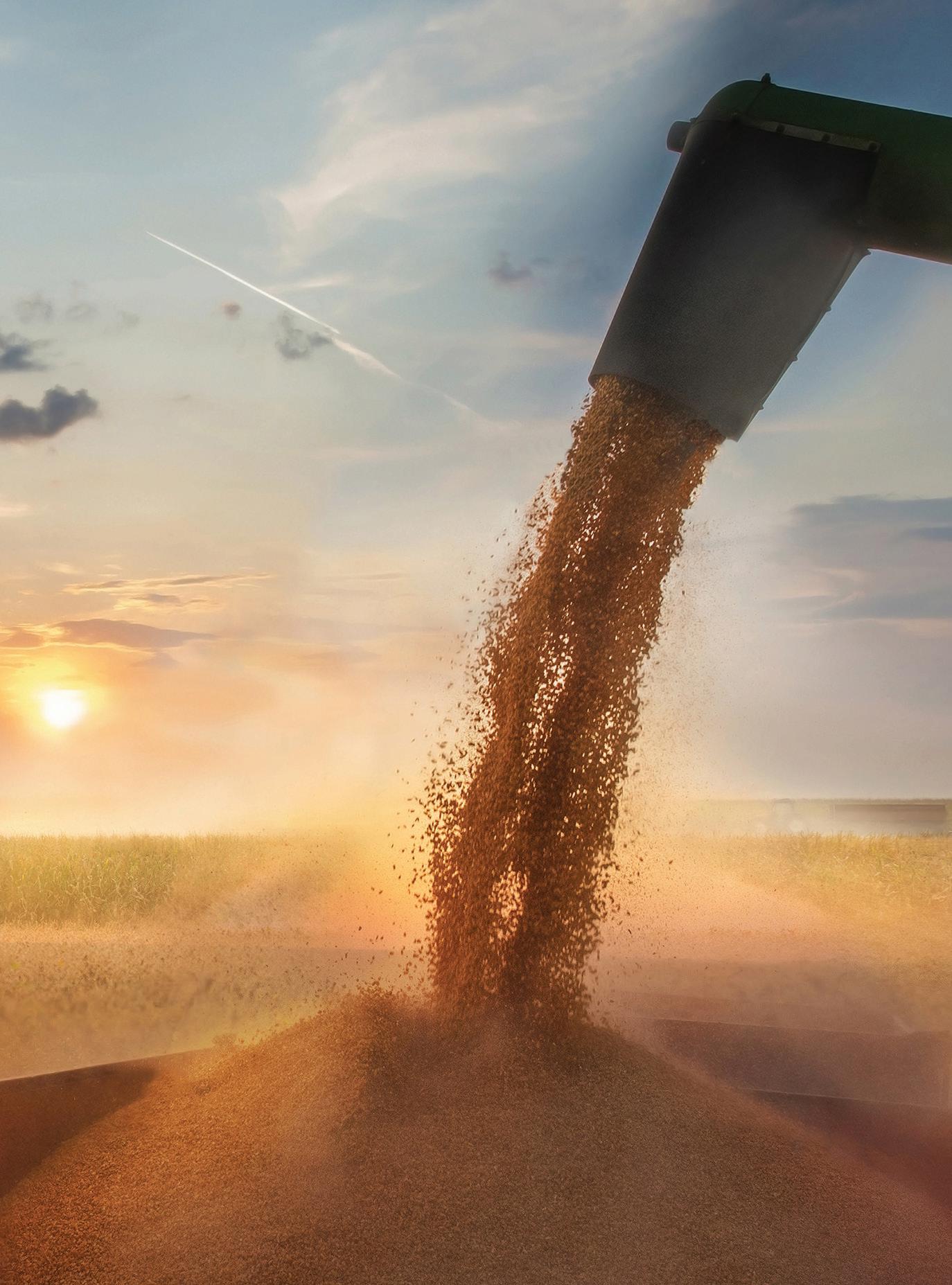
Tracy McIntyre is a Eureka native who understands the importance of economic development in Montana’s communities. She is currently executive director of the Montana Cooperative Development Center.

Kati Purkett specializes in Family and Consumer Science in her role with the Hill County MSU Extension office. Learn more at www.montana.edu/extension/hill/.

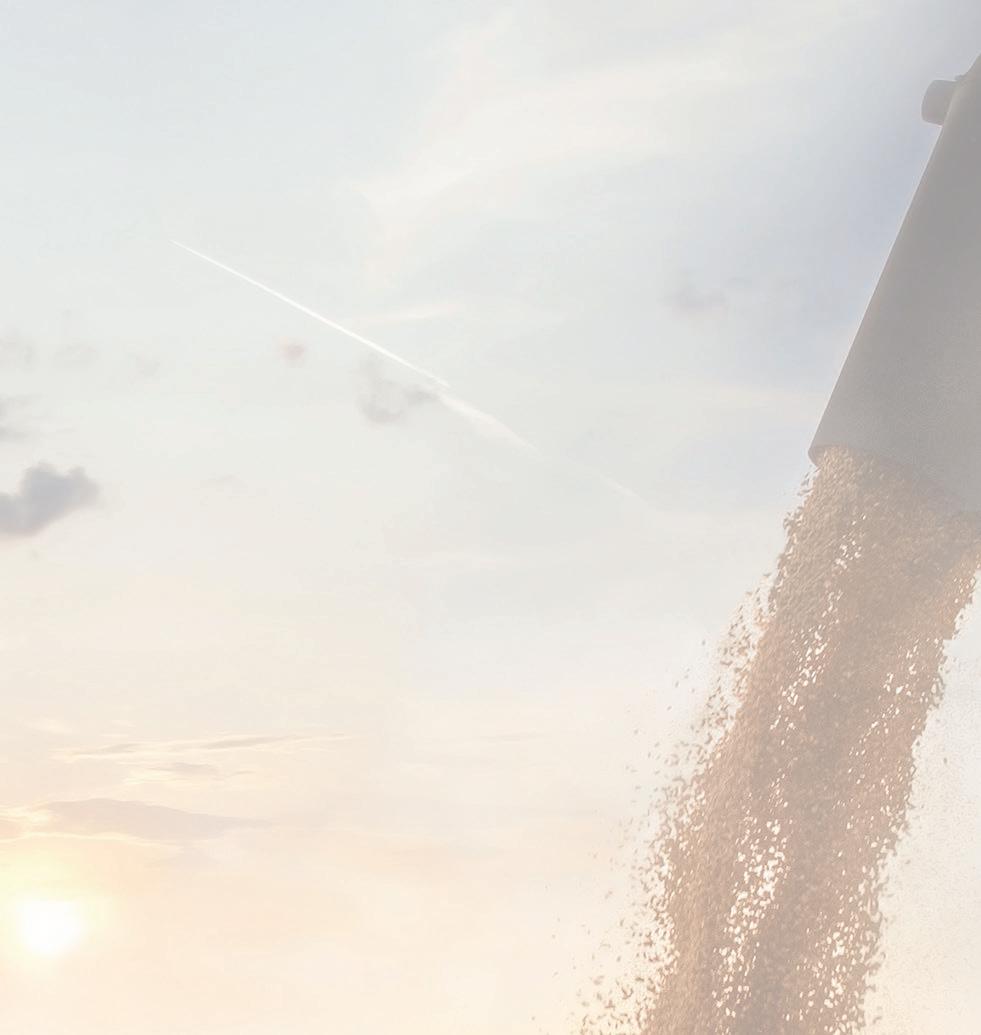
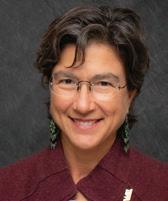
Jasmine Krotkov is a lobbyist with Montana Farmers Union, former representative in the Montana Legislature, and master gardener who studied Agro Ecology in college. When she isn’t advocating for family farmers, ranchers, and rural communities, she spends time on her permaculture homestead.

Morgan Kuntz serves as Director of Development with the Montana FFA Foundation after being heavily involved in FFA herself as a student. She also runs a cow/calf operation and breeds horses.
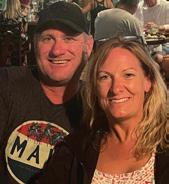
Alice Miller is a press relations specialist with Montana Farmers Union. She spends her extra time playing farm gopher on the family’s Hi-Line farm and ranch.

Holly & Trent Stoltz ranch at Stoltz Ranch, Inc., in Pompeys Pillar. The generational ranchers relocated from Valier to their current spread in 2022, and are using virtual fencing (Vence) to increase their carrying capacity and pasture health.
Rachel Prevost is the Membership Services and Government Affairs Director at Montana Farmers Union. Prevost grew up on her family’s farm and ranch in Northeastern Montana and was a 10-year member of 4-H and 5-year member of Montana FFA. Prevost studied Political Science, Communication Studies, and Public Relations for her undergraduate degrees and cares deeply about the vitality of our rural communities and the sustainability of family farms for generations to come.
















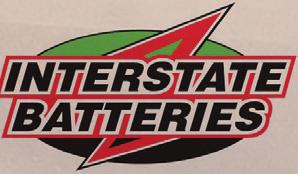
In our rural communities we see a tight knit fabric of leaders and volunteers that keep the wheels turning and the lights on – literally. We have local school boards, conservation district leaders, rural emergency services, rural utility co-op boards, farm and ranch supply coops, non-profit family farm, ranch, land stewardship and conservation groups, water and irrigation district leaders, 4-H clubs and FFA chapters and the parent and educator volunteers, locally elected officials, our MSU-Extension agents, FSA committees and our NRCS leaders. And I bet you can easily think of more!

We work in places and in professions where much of life and livelihood are out of our control thanks to extreme weather or markets and commodity prices falling out, which can lead to a sense of powerlessness.
Despite all these factors, we always have power, even in the face of devastation. We need to channel our experiences – good and frustrating – into power to ensure vitality and sustainability for the next generation. When farmers and ranchers head to D.C., we quickly see why it’s so important we tell our stories, because no one else can talk about a devastating drought or the need for reform to our cattle markets than those who are at the mercy of the destruction left in its wake.
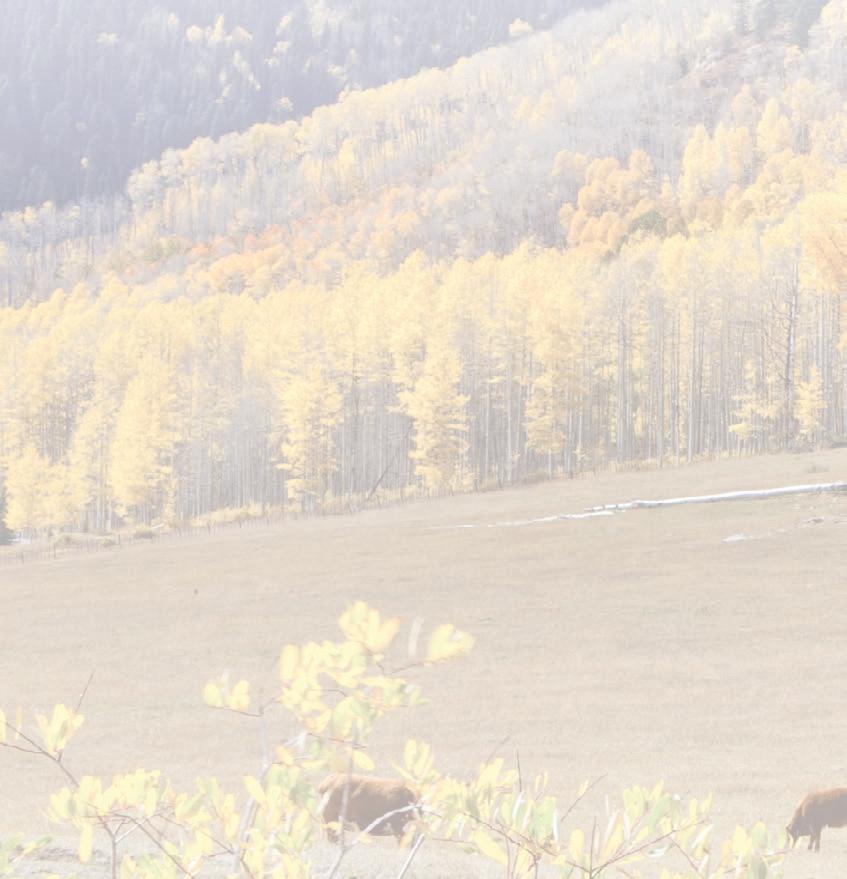

Our rural communities are at risk of losing the very things that make them such great places to live. The next generation of leaders must step up.
A recent publication prepared for Montana by rural sociologist Benjamin Winchester of the University of Minnesota Extension titled “Montana’s Leadership Demand” reports “one in every 13 adults must hold a leadership position to keep the state’s existing government and nonprofit organizations running.” That number increases to one in five adults for lower populated counties, including Garfield, Prairie and Treasure counties.
Look around next time you are at a community gathering and think, who out of the 13 people nearest to you will be that person? If you’re not sure – it might be you!
If you are an aspiring leader looking for the right leadership trainings to gain the skills and confidence you need to step into these critical community leadership roles, Montana Farmers Union is here to help and guide you through the process from the start.
Each year, in partnership with Minnesota, Wisconsin, North Dakota, and South Dakota, Montana sends four participants to be part of the Famers Union Enterprise Leadership Program (FUEL). This cohort of participants trains in essential skills and procedures that will help you become more confident when it comes to serving on boards, committees, and sharing your story at events like the D.C. Fly-In. The cohort learns parliamentary procedure, how to chair and run a meeting (which I know we all appreciate a well-run meeting!), how to structure your elevator pitch, and how to develop your advocacy story. All of this with 15 other participants who are hoping to learn and achieve similar goals.
The NFU D.C. Fly-In is a great example of the culmination of power that our rural leaders have. The annual lobbying trip puts members in the same room with congress members and federal leaders. FUEL participants attend the Fly-In, which is just one of the many opportunities you have as a member to make your voice heard.
The FUEL programming begins at the NFU Annual Convention - this year in Scottsdale, Arizona. Then, there will be a summer stop in Minnesota. The programming concludes at the Fly-In where participants put their skills to the test on Capitol Hill.

Montana’s FUEL application is open through November 20. If you are looking to network, build your leadership skills, and learn how to make your voice heard, the FUEL program is for you. We all need support networks, and FUEL provides one to you. Not only do you develop your leadership capabilities, but you build a professional network, get to travel around the U.S., and meet other leaders like you who are putting their power into action.
You aren’t alone in your journey and desire to use your power for effective leadership.

The next time you find yourself worrying about devastating drought, the current imbalance of corporate control of our markets, the need for more support to sustain our rural communities in the legislature, I urge you begin your leadership journey with Montana Farmers Union. We are here to make sure the next generation of leaders are at the table, but it all starts with you.





